

85 Critical Thinking Questions to Carefully Examine Any Information
There might be affiliate links on this page, which means we get a small commission of anything you buy. As an Amazon Associate we earn from qualifying purchases. Please do your own research before making any online purchase.
The ability to think critically will often determine your success in life.
Let’s face it. Every day, we are bombarded by news, social media updates, and an avalanche of information. If you take all of this at face value, it’s easy to be deceived, misled or ripped off.
That’s why it’s important to develop a mindset that focuses on critical thinking . This is a skill that needs to be developed in the classroom. But it’s also a valuable life skill.
With that in mind, the following post will share 85 critical thinking questions you can use to increase your awareness about different problems by carefully examining available information.
Let’s get started…
Table of Contents
What Are Critical Thinking Questions?
Critical thinking questions are inquiries that help you think rationally and clearly by understanding the link between different facts or ideas. These questions create a seemingly endless learning process that lets you critique, evaluate, and develop a depth of knowledge about a given subject. Moreover, you get to reinforce your viewpoints or see things in a new way.
We make decisions every day, whether at work or home. Adopting logical, rational, and practical approaches in addressing various issues requiring critical thinking is essential in decision-making. Therefore, before arriving at a decision, always ask yourself relevant questions and carefully analyze the matter’s pros and cons.
Critical Thinking Questions When in an Argument
When you make an argument using a critical thinking approach, you focus on justified claims that are valid and based on evidence. It helps one establish a strong argument.
- Do I disagree with the other person? Might the person I'm arguing with be misinformed on what they are saying?
- Would I be comfortable saying what I am telling him/her if I was in front of a group of people?
- What would happen if I lose this argument? Is engaging in this argument worth my time and energy? How will I feel if I lose?
- Is there room for ambiguity or misinterpretation? Are we arguing because I didn't make my point explicit? Should I take my time to understand his school of thought?
- Do I need some rest before saying something? Am I arguing because of other reasons other than the issues at hand? Do I need to take some time and cool down?

- Is it more important that I’m right? Am I trying to ask to prove an unnecessary point?
- Is this argument inductive, deductive, or abductive? Is it a weak or strong argument that I need to engage in? Is it compelling or sound?
- Is my opponent sincere? Given that they are wrong, are they willing to admit that they are wrong? Can they depend on available evidence, wherever it leads?
- Are my opponents only trying to shift their burden to me? What is the best way to prove them wrong without making them feel bad?
- Are the people I'm arguing with only interested in winning, or are they trying to pass some information across and help me discover the truth?
Critical Thinking Questions When Reading a Book
When you read a book, you probably ask yourself many “why” questions. Why is this a problem? Why did the character say that? Why is this important? The most challenging part of reading a book is assessing the information you are reading. These questions can help.
- If I learn only two things from this book, what will they be? How will they help me? How will I apply them in my daily life?
- What message are the authors trying to pass across? Are they making suggestions or providing evidence for their arguments?
- Given that almost every book is about solving problems, what is the most prevalent issue that the author is trying to solve?
- What is the author’s writing style? What strategy or master plan does the author employ to convey his/her main ideas throughout the book?
- Do I have background information about the book’s topic? If so, how is what the author is saying different from what I already know?
- What didn’t I understand from the book? Should I re-read the book to understand everything the writer is trying to convey?
- Which sections of the book do I love the most, and why? Generally, do I like this book? Should I look for more books that are written by the same author?
- If I had a chance to meet this book’s author, what questions would I ask him/her? What would I tell the writer about the book? Is it a great book worth recommending to your friends and family members?
- Who are the main characters of the book? If there is only one main character, what overarching goal does the character accomplish?
- In what ways did the protagonist change from the start of the book to the end? What caused the changes? Was the protagonist reckless in some ways? Which ways?
Critical Thinking Questions to Spot a Scam
Asking questions when you feel that a fraud or a scam is being presented to you is a good way to stretch your critical thinking muscles. Are you being emailed or messaged by a stranger? Or maybe there are other red flags you are unsure about. If so, ask these questions.
- Does it seem to be too good to be true? Is this stranger pushy or trying to lure me into making a poor decision?
- When trying out online dating: Is my new “friend” professing strong feelings towards me although we’ve only interacted for a few hours?
- Why is a stranger calling me to ask about my Social Security Number (SSN), personal contact information, or bank details while claiming they are from the bank or a phone company?
- When buying products online, why does the seller ask me to pay for goods using an insecure payment option like Bitcoin or money order?
- Does the email I have received have any spelling or grammatical errors? Is the language used overly formal or informal?
- If I do a quick search about the exact words of the email I received, does Google indicate it's a fraud or scam?
- Why should a stranger manipulate me using obvious questions like “Would you want to be rich or poor?” While they already know the answer?
- Is the email asking me to download an attachment? Or click a link to some insecure website?
- Is the person trying to make me feel selfish or guilty for not sending them money, whether for a donation or buying a product?
- Is the stranger portraying a sense of urgency and using pressure tactics? Are they telling me that their family member needs urgent medical attention?
Critical Thinking Questions About Your Life
It can also help to ask yourself a few critical thinking questions about your life. This way, you can gather basic information and uncover solutions to problems you might not have otherwise thought of.
- Where do I wish to be in a few years, probably two, three, or five years? What short-term and long-term goals should I set?
- What have I achieved so far from the time I set my previous goals? What should I be grateful for?
- Do I have any values that guide me in life? If so, what are these values? Am I always true to these values?
- Am I always worried about what people around me think? Can I act independently without the need to meet social expectations?
- What should people say about me at my funeral? Would they talk about how good I made them feel or how rich and flashy I was?
- If I wasn't afraid of anyone or anything, what would I have done? What if I didn't have any fear in me?
- If today was my last day, what extraordinary thing would I do? Can I do it right now?
- What should I do with the things that matter the most to me?
- What things will make the greatest difference in my future life if I take action now?
- How should I react when I feel unwanted by the people I love the most? Should I tell them?

Critical Thinking Questions for a Debate or Discussion
When you are in the middle of a debate or discussion, you need to know that what you are saying is fact, have evidence to support your claim, and position yourself as an expert in what you are saying. Here are some critical thinking questions to ask when you are in a debate or discussion.
- Is there fairness in this discussion? Is the moderator supporting one side? Do they want to make one side look stupid or wrong?
- What is the aim of this discussion? Is there a major problem that needs to be solved? If so, how can I help solve it?
- Who are the people affected by this discussion? If they were here, what would they say?
- Do my views on this discussion matter? If I raise my point, will I be redundant?
- What am I supposed to learn from this debate, and how can I use what I have learned in my daily life?
- Does the audience seem to be biased towards one side? Are they booing one side? What can I do even if it's our opponents being booed?
- Who are the discussion panel members? What views have they held about this kind of discussion or any other related discussions in the past?
- How can I make my point without being ambiguous? Before I speak, should I take down some notes to avoid any confusion during my speech?
- Am I ready to apologize if I make a mistake during the discussion? If so, what are the limits?
- What information does my team, or I need before this discussion?
Critical Thinking Questions About Lying
Admitting when you are wrong, choosing not to cheat, and sharing constructive feedback are all ways to show your honesty. Here are some critical thinking skills to ask regarding lying.
- Will the lie hurt those I am telling, or will it help them? What if being honest might cause my friend unnecessary pain?
- Should I be the one telling this person a lie, or I let someone else do it?
- Will I be the one hurt if I tell this lie? Will my friend feel I am a betrayer? Will it affect our friendship?
- Do they answer my questions in detail, or are they always trying to ignore and dodge the main problem?
- What if I ask these people the same question using different terms and wording? Will they give me the same response?
- Did the tone of my friend suddenly change after I asked him/her this question? Do they sound louder, faster, or slower compared to how they usually speak?
- Does this person have something to gain by lying to me? What is their motive?
- Does this person take a sudden pause or hesitate more than usual when responding to my question?
- When I look at these people's faces, do their facial expressions match what they say?
- Should I believe this person or not? What are my intuitions? Does it look like they are telling the truth?
- Do they blink like other days when I ask them questions? Are they always trying to avoid direct eye contact?
- Why do they seem uncomfortable when it’s just a normal conversation?
Critical Thinking Questions When Presented With a Claim
Critical thinking is much more than just evaluating whether a claim is true or not. It also means a critical thinker reflects on what follows from true claims.
- What does this claim mean, and what are its implications? What if it's a false claim?
- Which of my morals, values, or beliefs do I have to give up to accept this claim?
- Do professionals in this field agree or disagree with the claim that has been made?
- Do they have evidence to back their claim? Which is the most robust evidence to support the claim?
- What argument can I come up with to refute this claim? Or what is the best view that can support this claim?
- Who is the primary source of the claim being made? Is the basis of the claim reliable?
- Is it a claim, or it's just an opinion?
- Is the claim likely to be 100% false, true, or partially true?
- Am I allowed to refute the claim and table my evidence, or is it one-sided?
Critical Thinking Interview Questions
Critical thinking skills are valuable in any industry or field and for almost all roles. During a job interview, you will be asked questions so the potential employer can assess your skills and see how you use logic. Your critical thinking ability is just one vital part that can play into your professional development.
- Is there a time you had to convince someone to use an alternate approach to solve a problem?
- Have you ever had to make a difficult decision quickly?
- How would you handle a situation where your supervisor handled something wrong or made a mistake?
- What is one of the most difficult decisions you have ever had to make at work?
- How would you solve a disagreement between coworkers when approaching a project?
- Can you describe a time when you anticipated a problem ahead of time and took the appropriate steps to stop the problem from becoming an issue?
- If you discover a cheaper way to do something or a better solution to a problem and try to explain it to your supervisor, but they don’t understand, what do you do?
Critical Thinking Questions for Kids
We can’t leave the kids out either. Critical thinking questions for kids get them thinking and talking. It also allows a parent to get to know their child better.
- How many grains of sand do you think are on the beach?
- What would happen if it stopped raining?
- Do you think there is life on other planets?
- Should children be able to set their own bedtimes?
- How would you describe what a tree looks like without saying green or leaves?
- Can you name five different emotions?
- Can you talk for five minutes without uttering “um?”
What Are the Basic Principles of Critical Thinking?
Your critical thinking skills involve gathering complete information, understanding and defining terms, questioning the methods by which we get facts, questioning the conclusions, and looking for hidden assumptions and biases.
Additionally, we can’t expect to find all of the answers, and we need to take the time to examine the big picture of it all.
Here are the basic principles:
- Disposition: Someone with critical thinking skills is often skeptical, open-minded, and practices fair-mindedness. They can look at different viewpoints and change positions if the evidence and reason lead them to do so.
- Criteria: In order to think critically, one must also apply criteria. Certain conditions must be met before someone believes in something. The information needs to be from credible sources.
- Argument: An argument is simply a statement or proposition that is shown with supporting evidence. When you use your critical thinking skills, you identify, evaluate, and construct your argument.
- Reasoning: With critical thinking comes reasoning. You must examine logical relationships among the statements being made.
- Point of View: Critical thinkers can see things from different perspectives and different points of view.
What Are Good Analysis Questions?
Analysis is a part of critical thinking that allows you to examine something carefully. Someone with analytical skills can examine the information presented, understand what that information means, and then properly explain that information to others. Analysis in critical thinking provides more clarity on the information you process.
When analyzing, you may ask yourself, “how do I know this,” how would I solve this problem,” and “why does it matter?”
Why Is Critical Thinking an Important Skill?
Critical thinking skills allow you to express thoughts, ideas, and beliefs in a better way. It also leads to improved communication while allowing others to understand you better. Critical thinking fosters creativity and encourages out-of-the-box thinking. This is a skill that can be applied to many different areas of your life.
For example, knowing the answers to critical thinking questions for a job interview will better prepare you for the interview. Many employers, during questioning, are likely to ask you critical thinking questions to assess if you have the ability to evaluate information effectively so you can make more informed decisions.
Final Thoughts on Critical Thinking Questions
Although it's common to get torn between making two or more choices, nobody wants to make the wrong decision. The only thing you can do to avoid this is use critical thinking questions to examine your situation. The answers to these questions will help you make informed decisions and help you comprehend crucial matters in your life.
Want to learn more about critical thinking and decision-making using a real-life example? Here is how Jeff Bezos uses critical thinking to make some of the most challenging life decisions.
Finally, if you want to ask better questions, then watch this short, 20-minute course to learn how to have a great conversation with virtually anyone .
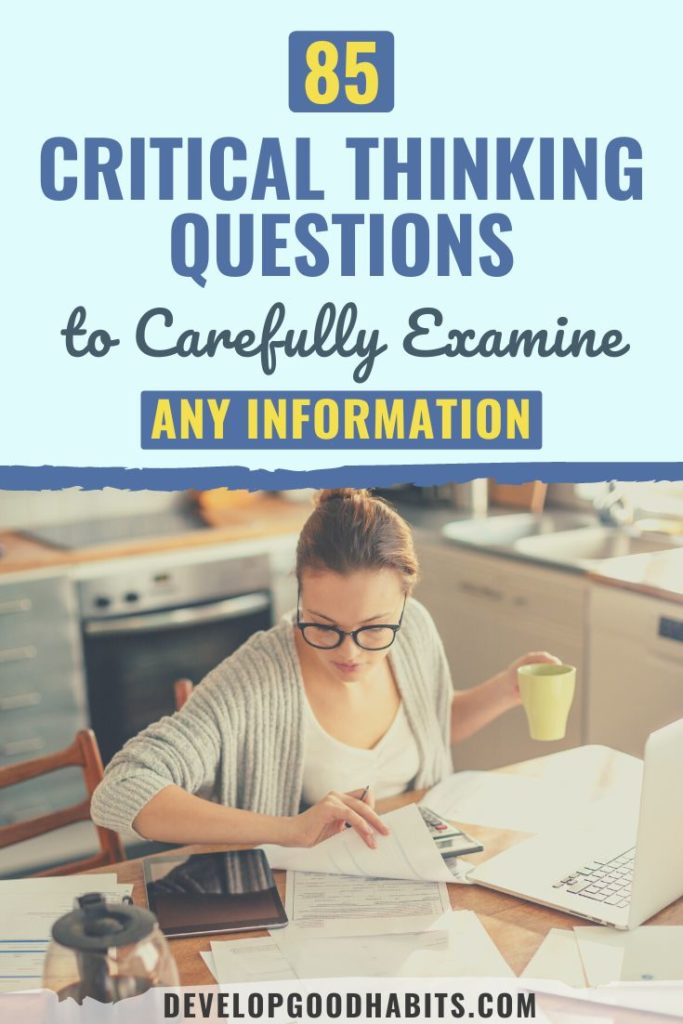

A Crash Course in Critical Thinking
What you need to know—and read—about one of the essential skills needed today..
Posted April 8, 2024 | Reviewed by Michelle Quirk
- In research for "A More Beautiful Question," I did a deep dive into the current crisis in critical thinking.
- Many people may think of themselves as critical thinkers, but they actually are not.
- Here is a series of questions you can ask yourself to try to ensure that you are thinking critically.
Conspiracy theories. Inability to distinguish facts from falsehoods. Widespread confusion about who and what to believe.
These are some of the hallmarks of the current crisis in critical thinking—which just might be the issue of our times. Because if people aren’t willing or able to think critically as they choose potential leaders, they’re apt to choose bad ones. And if they can’t judge whether the information they’re receiving is sound, they may follow faulty advice while ignoring recommendations that are science-based and solid (and perhaps life-saving).
Moreover, as a society, if we can’t think critically about the many serious challenges we face, it becomes more difficult to agree on what those challenges are—much less solve them.
On a personal level, critical thinking can enable you to make better everyday decisions. It can help you make sense of an increasingly complex and confusing world.
In the new expanded edition of my book A More Beautiful Question ( AMBQ ), I took a deep dive into critical thinking. Here are a few key things I learned.
First off, before you can get better at critical thinking, you should understand what it is. It’s not just about being a skeptic. When thinking critically, we are thoughtfully reasoning, evaluating, and making decisions based on evidence and logic. And—perhaps most important—while doing this, a critical thinker always strives to be open-minded and fair-minded . That’s not easy: It demands that you constantly question your assumptions and biases and that you always remain open to considering opposing views.
In today’s polarized environment, many people think of themselves as critical thinkers simply because they ask skeptical questions—often directed at, say, certain government policies or ideas espoused by those on the “other side” of the political divide. The problem is, they may not be asking these questions with an open mind or a willingness to fairly consider opposing views.
When people do this, they’re engaging in “weak-sense critical thinking”—a term popularized by the late Richard Paul, a co-founder of The Foundation for Critical Thinking . “Weak-sense critical thinking” means applying the tools and practices of critical thinking—questioning, investigating, evaluating—but with the sole purpose of confirming one’s own bias or serving an agenda.
In AMBQ , I lay out a series of questions you can ask yourself to try to ensure that you’re thinking critically. Here are some of the questions to consider:
- Why do I believe what I believe?
- Are my views based on evidence?
- Have I fairly and thoughtfully considered differing viewpoints?
- Am I truly open to changing my mind?
Of course, becoming a better critical thinker is not as simple as just asking yourself a few questions. Critical thinking is a habit of mind that must be developed and strengthened over time. In effect, you must train yourself to think in a manner that is more effortful, aware, grounded, and balanced.
For those interested in giving themselves a crash course in critical thinking—something I did myself, as I was working on my book—I thought it might be helpful to share a list of some of the books that have shaped my own thinking on this subject. As a self-interested author, I naturally would suggest that you start with the new 10th-anniversary edition of A More Beautiful Question , but beyond that, here are the top eight critical-thinking books I’d recommend.
The Demon-Haunted World: Science as a Candle in the Dark , by Carl Sagan
This book simply must top the list, because the late scientist and author Carl Sagan continues to be such a bright shining light in the critical thinking universe. Chapter 12 includes the details on Sagan’s famous “baloney detection kit,” a collection of lessons and tips on how to deal with bogus arguments and logical fallacies.

Clear Thinking: Turning Ordinary Moments Into Extraordinary Results , by Shane Parrish
The creator of the Farnham Street website and host of the “Knowledge Project” podcast explains how to contend with biases and unconscious reactions so you can make better everyday decisions. It contains insights from many of the brilliant thinkers Shane has studied.
Good Thinking: Why Flawed Logic Puts Us All at Risk and How Critical Thinking Can Save the World , by David Robert Grimes
A brilliant, comprehensive 2021 book on critical thinking that, to my mind, hasn’t received nearly enough attention . The scientist Grimes dissects bad thinking, shows why it persists, and offers the tools to defeat it.
Think Again: The Power of Knowing What You Don't Know , by Adam Grant
Intellectual humility—being willing to admit that you might be wrong—is what this book is primarily about. But Adam, the renowned Wharton psychology professor and bestselling author, takes the reader on a mind-opening journey with colorful stories and characters.
Think Like a Detective: A Kid's Guide to Critical Thinking , by David Pakman
The popular YouTuber and podcast host Pakman—normally known for talking politics —has written a terrific primer on critical thinking for children. The illustrated book presents critical thinking as a “superpower” that enables kids to unlock mysteries and dig for truth. (I also recommend Pakman’s second kids’ book called Think Like a Scientist .)
Rationality: What It Is, Why It Seems Scarce, Why It Matters , by Steven Pinker
The Harvard psychology professor Pinker tackles conspiracy theories head-on but also explores concepts involving risk/reward, probability and randomness, and correlation/causation. And if that strikes you as daunting, be assured that Pinker makes it lively and accessible.
How Minds Change: The Surprising Science of Belief, Opinion and Persuasion , by David McRaney
David is a science writer who hosts the popular podcast “You Are Not So Smart” (and his ideas are featured in A More Beautiful Question ). His well-written book looks at ways you can actually get through to people who see the world very differently than you (hint: bludgeoning them with facts definitely won’t work).
A Healthy Democracy's Best Hope: Building the Critical Thinking Habit , by M Neil Browne and Chelsea Kulhanek
Neil Browne, author of the seminal Asking the Right Questions: A Guide to Critical Thinking, has been a pioneer in presenting critical thinking as a question-based approach to making sense of the world around us. His newest book, co-authored with Chelsea Kulhanek, breaks down critical thinking into “11 explosive questions”—including the “priors question” (which challenges us to question assumptions), the “evidence question” (focusing on how to evaluate and weigh evidence), and the “humility question” (which reminds us that a critical thinker must be humble enough to consider the possibility of being wrong).

Warren Berger is a longtime journalist and author of A More Beautiful Question .
- Find a Therapist
- Find a Treatment Center
- Find a Psychiatrist
- Find a Support Group
- Find Teletherapy
- United States
- Brooklyn, NY
- Chicago, IL
- Houston, TX
- Los Angeles, CA
- New York, NY
- Portland, OR
- San Diego, CA
- San Francisco, CA
- Seattle, WA
- Washington, DC
- Asperger's
- Bipolar Disorder
- Chronic Pain
- Eating Disorders
- Passive Aggression
- Personality
- Goal Setting
- Positive Psychology
- Stopping Smoking
- Low Sexual Desire
- Relationships
- Child Development
- Therapy Center NEW
- Diagnosis Dictionary
- Types of Therapy
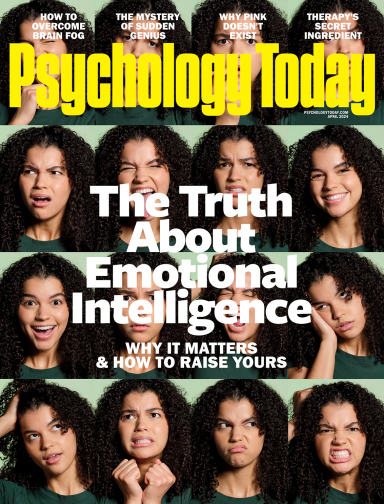
Understanding what emotional intelligence looks like and the steps needed to improve it could light a path to a more emotionally adept world.
- Coronavirus Disease 2019
- Affective Forecasting
- Neuroscience
Have a language expert improve your writing
Run a free plagiarism check in 10 minutes, generate accurate citations for free.
- Knowledge Base
- Working with sources
- What Is Critical Thinking? | Definition & Examples
What Is Critical Thinking? | Definition & Examples
Published on May 30, 2022 by Eoghan Ryan . Revised on May 31, 2023.
Critical thinking is the ability to effectively analyze information and form a judgment .
To think critically, you must be aware of your own biases and assumptions when encountering information, and apply consistent standards when evaluating sources .
Critical thinking skills help you to:
- Identify credible sources
- Evaluate and respond to arguments
- Assess alternative viewpoints
- Test hypotheses against relevant criteria
Table of contents
Why is critical thinking important, critical thinking examples, how to think critically, other interesting articles, frequently asked questions about critical thinking.
Critical thinking is important for making judgments about sources of information and forming your own arguments. It emphasizes a rational, objective, and self-aware approach that can help you to identify credible sources and strengthen your conclusions.
Critical thinking is important in all disciplines and throughout all stages of the research process . The types of evidence used in the sciences and in the humanities may differ, but critical thinking skills are relevant to both.
In academic writing , critical thinking can help you to determine whether a source:
- Is free from research bias
- Provides evidence to support its research findings
- Considers alternative viewpoints
Outside of academia, critical thinking goes hand in hand with information literacy to help you form opinions rationally and engage independently and critically with popular media.
Scribbr Citation Checker New
The AI-powered Citation Checker helps you avoid common mistakes such as:
- Missing commas and periods
- Incorrect usage of “et al.”
- Ampersands (&) in narrative citations
- Missing reference entries
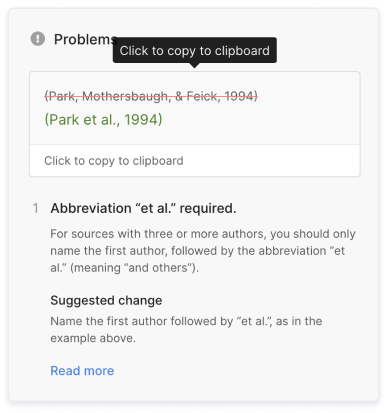
Critical thinking can help you to identify reliable sources of information that you can cite in your research paper . It can also guide your own research methods and inform your own arguments.
Outside of academia, critical thinking can help you to be aware of both your own and others’ biases and assumptions.
Academic examples
However, when you compare the findings of the study with other current research, you determine that the results seem improbable. You analyze the paper again, consulting the sources it cites.
You notice that the research was funded by the pharmaceutical company that created the treatment. Because of this, you view its results skeptically and determine that more independent research is necessary to confirm or refute them. Example: Poor critical thinking in an academic context You’re researching a paper on the impact wireless technology has had on developing countries that previously did not have large-scale communications infrastructure. You read an article that seems to confirm your hypothesis: the impact is mainly positive. Rather than evaluating the research methodology, you accept the findings uncritically.
Nonacademic examples
However, you decide to compare this review article with consumer reviews on a different site. You find that these reviews are not as positive. Some customers have had problems installing the alarm, and some have noted that it activates for no apparent reason.
You revisit the original review article. You notice that the words “sponsored content” appear in small print under the article title. Based on this, you conclude that the review is advertising and is therefore not an unbiased source. Example: Poor critical thinking in a nonacademic context You support a candidate in an upcoming election. You visit an online news site affiliated with their political party and read an article that criticizes their opponent. The article claims that the opponent is inexperienced in politics. You accept this without evidence, because it fits your preconceptions about the opponent.
There is no single way to think critically. How you engage with information will depend on the type of source you’re using and the information you need.
However, you can engage with sources in a systematic and critical way by asking certain questions when you encounter information. Like the CRAAP test , these questions focus on the currency , relevance , authority , accuracy , and purpose of a source of information.
When encountering information, ask:
- Who is the author? Are they an expert in their field?
- What do they say? Is their argument clear? Can you summarize it?
- When did they say this? Is the source current?
- Where is the information published? Is it an academic article? Is it peer-reviewed ?
- Why did the author publish it? What is their motivation?
- How do they make their argument? Is it backed up by evidence? Does it rely on opinion, speculation, or appeals to emotion ? Do they address alternative arguments?
Critical thinking also involves being aware of your own biases, not only those of others. When you make an argument or draw your own conclusions, you can ask similar questions about your own writing:
- Am I only considering evidence that supports my preconceptions?
- Is my argument expressed clearly and backed up with credible sources?
- Would I be convinced by this argument coming from someone else?
If you want to know more about ChatGPT, AI tools , citation , and plagiarism , make sure to check out some of our other articles with explanations and examples.
- ChatGPT vs human editor
- ChatGPT citations
- Is ChatGPT trustworthy?
- Using ChatGPT for your studies
- What is ChatGPT?
- Chicago style
- Paraphrasing
Plagiarism
- Types of plagiarism
- Self-plagiarism
- Avoiding plagiarism
- Academic integrity
- Consequences of plagiarism
- Common knowledge
The only proofreading tool specialized in correcting academic writing - try for free!
The academic proofreading tool has been trained on 1000s of academic texts and by native English editors. Making it the most accurate and reliable proofreading tool for students.
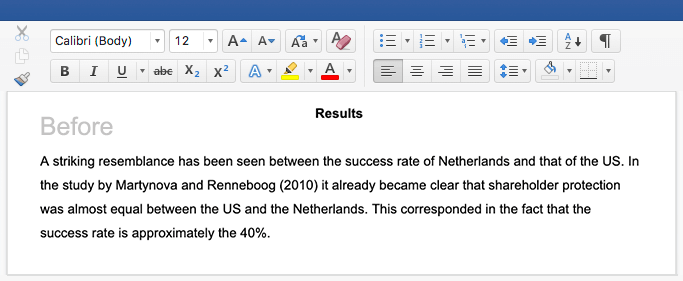
Try for free
Critical thinking refers to the ability to evaluate information and to be aware of biases or assumptions, including your own.
Like information literacy , it involves evaluating arguments, identifying and solving problems in an objective and systematic way, and clearly communicating your ideas.
Critical thinking skills include the ability to:
You can assess information and arguments critically by asking certain questions about the source. You can use the CRAAP test , focusing on the currency , relevance , authority , accuracy , and purpose of a source of information.
Ask questions such as:
- Who is the author? Are they an expert?
- How do they make their argument? Is it backed up by evidence?
A credible source should pass the CRAAP test and follow these guidelines:
- The information should be up to date and current.
- The author and publication should be a trusted authority on the subject you are researching.
- The sources the author cited should be easy to find, clear, and unbiased.
- For a web source, the URL and layout should signify that it is trustworthy.
Information literacy refers to a broad range of skills, including the ability to find, evaluate, and use sources of information effectively.
Being information literate means that you:
- Know how to find credible sources
- Use relevant sources to inform your research
- Understand what constitutes plagiarism
- Know how to cite your sources correctly
Confirmation bias is the tendency to search, interpret, and recall information in a way that aligns with our pre-existing values, opinions, or beliefs. It refers to the ability to recollect information best when it amplifies what we already believe. Relatedly, we tend to forget information that contradicts our opinions.
Although selective recall is a component of confirmation bias, it should not be confused with recall bias.
On the other hand, recall bias refers to the differences in the ability between study participants to recall past events when self-reporting is used. This difference in accuracy or completeness of recollection is not related to beliefs or opinions. Rather, recall bias relates to other factors, such as the length of the recall period, age, and the characteristics of the disease under investigation.
Cite this Scribbr article
If you want to cite this source, you can copy and paste the citation or click the “Cite this Scribbr article” button to automatically add the citation to our free Citation Generator.
Ryan, E. (2023, May 31). What Is Critical Thinking? | Definition & Examples. Scribbr. Retrieved April 15, 2024, from https://www.scribbr.com/working-with-sources/critical-thinking/
Is this article helpful?

Eoghan Ryan
Other students also liked, student guide: information literacy | meaning & examples, what are credible sources & how to spot them | examples, applying the craap test & evaluating sources, unlimited academic ai-proofreading.
✔ Document error-free in 5minutes ✔ Unlimited document corrections ✔ Specialized in correcting academic texts
- Grades 6-12
- School Leaders
FREE Poetry Worksheet Bundle! Perfect for National Poetry Month.
100+ Critical Thinking Questions for Students To Ask About Anything
Critical thinkers question everything.
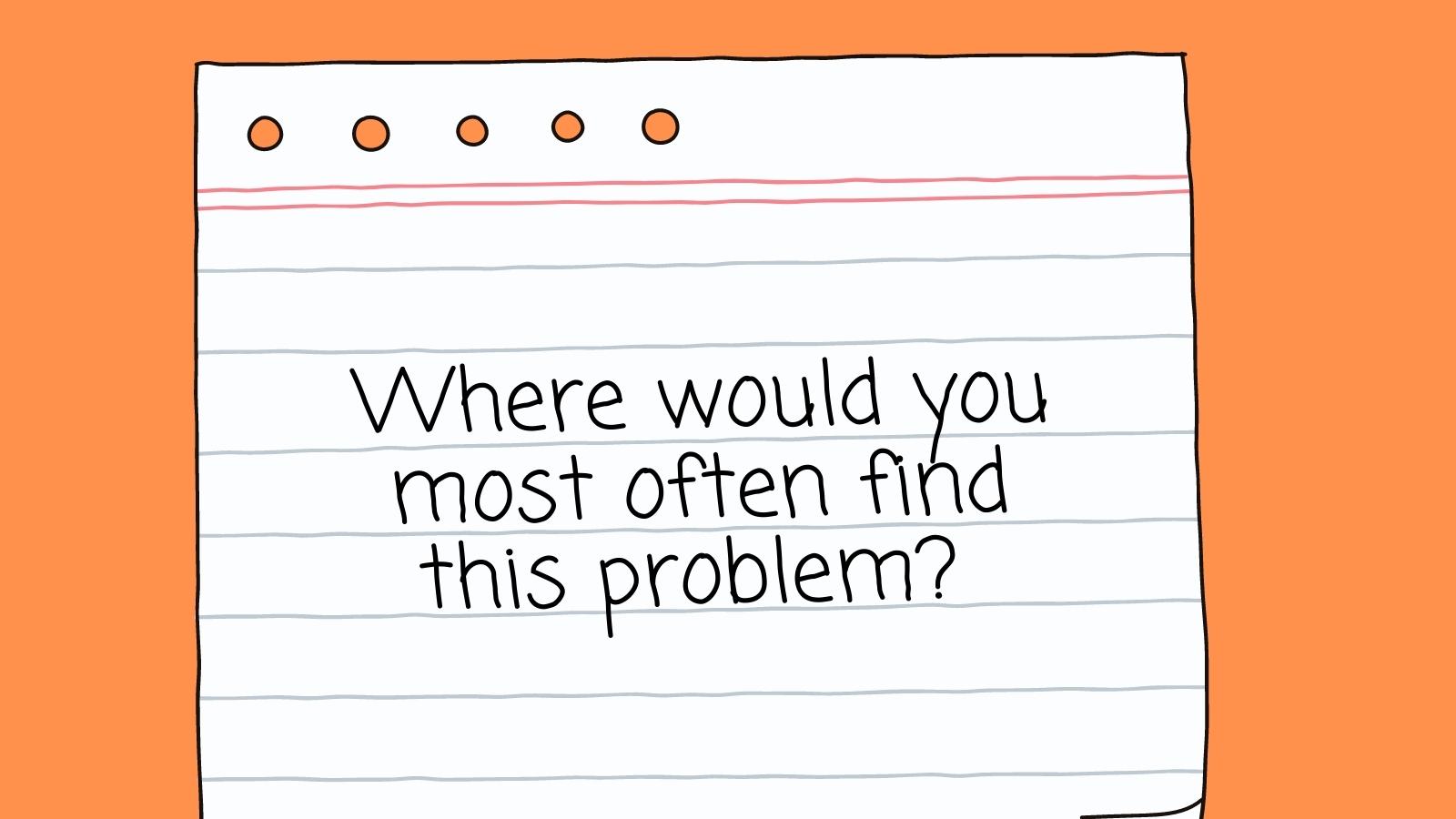
In an age of “fake news” claims and constant argument about pretty much any issue, critical thinking skills are key. Teach your students that it’s vital to ask questions about everything, but that it’s also important to ask the right sorts of questions. Students can use these critical thinking questions with fiction or nonfiction texts. They’re also useful when discussing important issues or trying to understand others’ motivations in general.
“Who” Critical Thinking Questions
Questions like these help students ponder who’s involved in a story and how the actions affect them. They’ll also consider who’s telling the tale and how reliable that narrator might be.
- Is the protagonist?
- Is the antagonist?
- Caused harm?
- Is harmed as a result?
- Was the most important character?
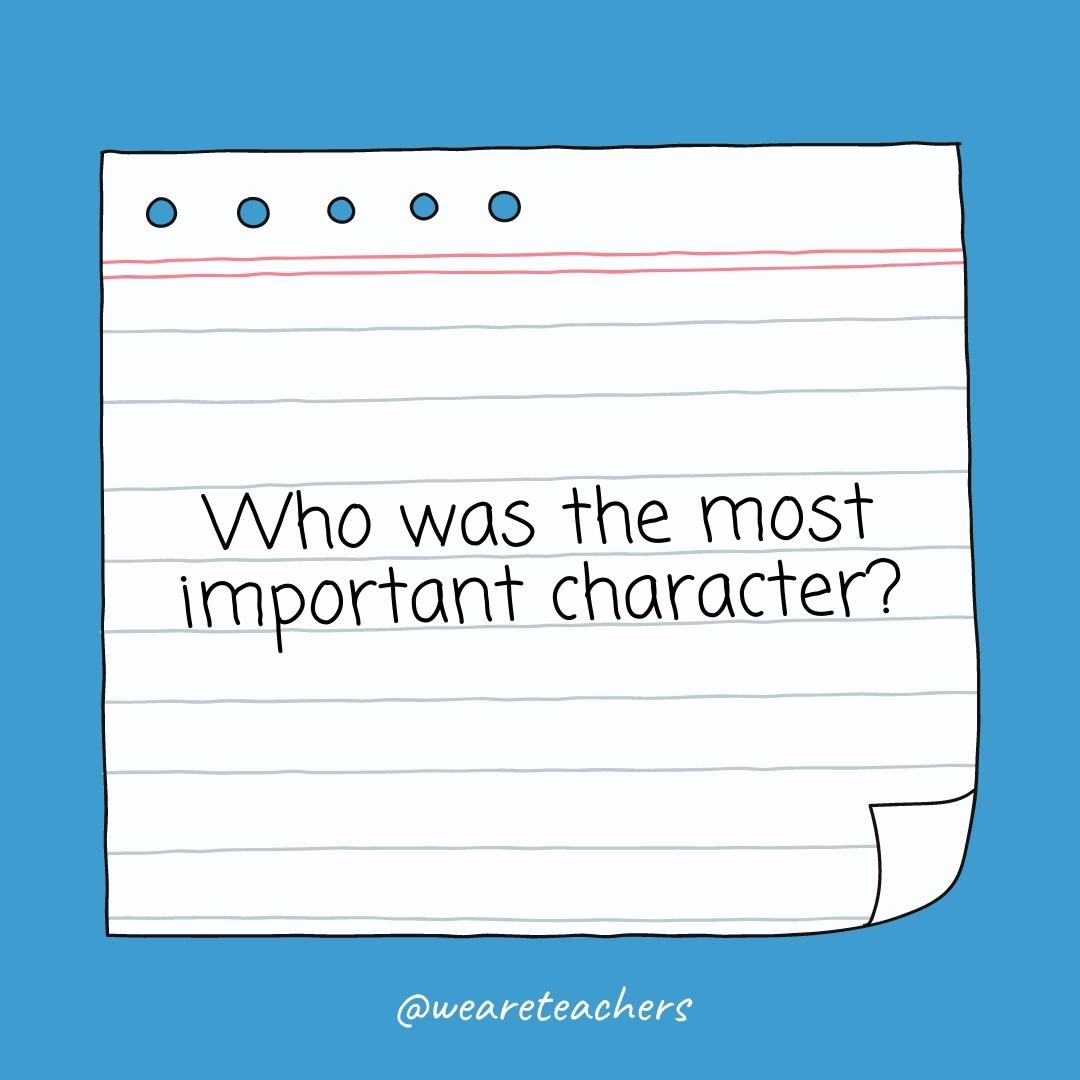
- Is responsible?
- Is most directly affected?
- Should have won?
- Will benefit?
- Would be affected by this?
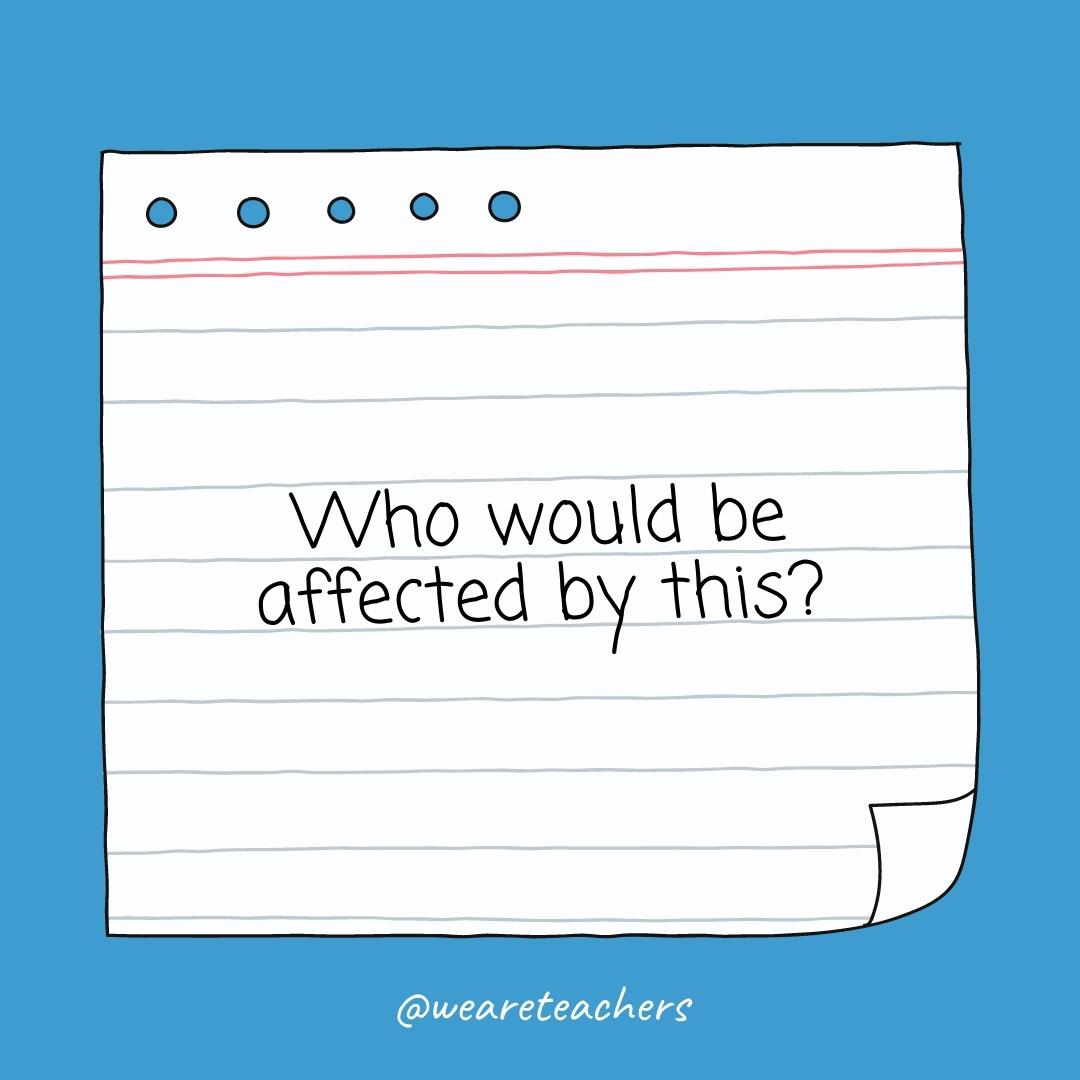
- Makes the decisions?
“What” Critical Thinking Questions
Ask questions that explore issues more deeply, including those that might not be directly answered in the text.
- Background information do I know or need to know?
- Is the main message?
- Are the defining characteristics?
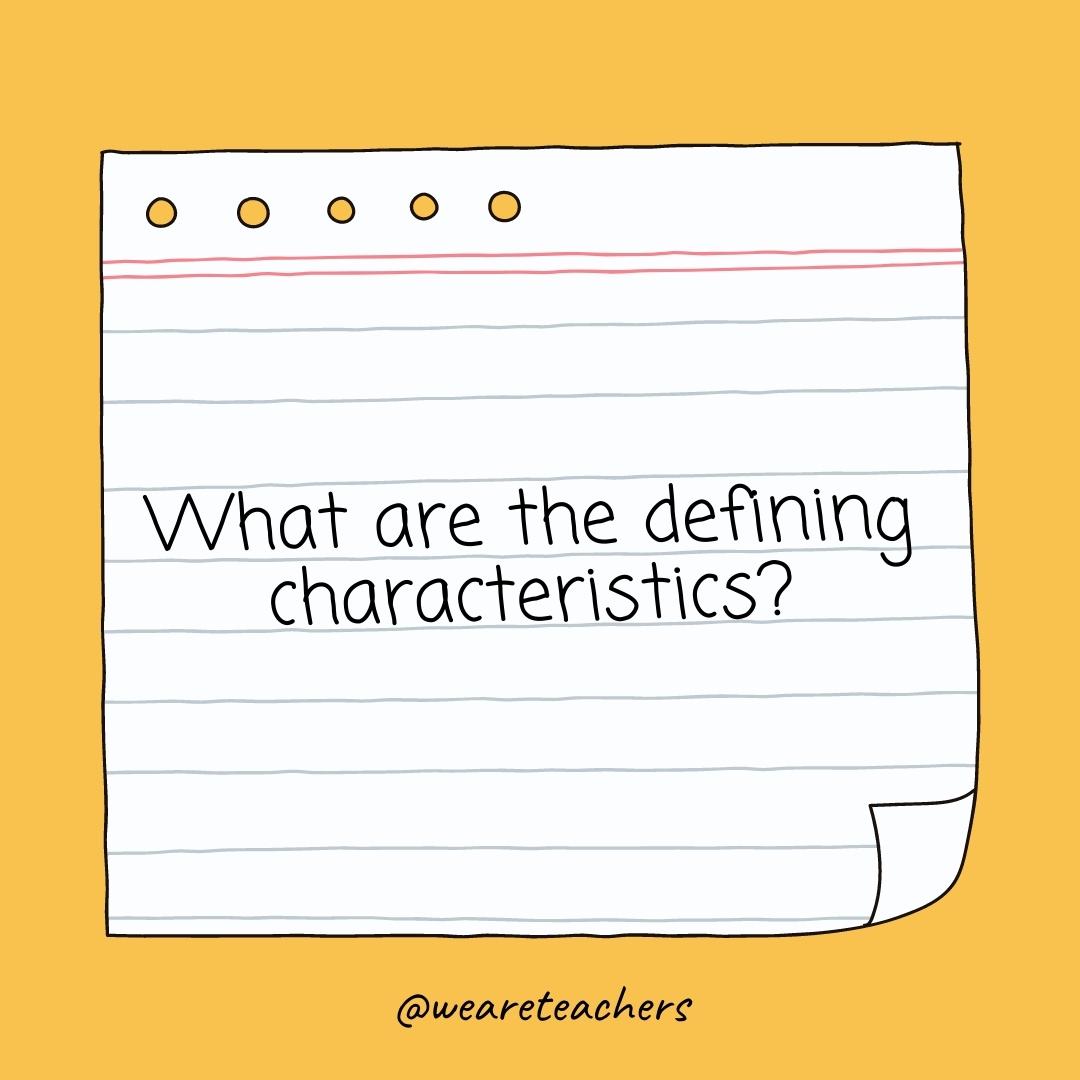
- Questions or concerns do I have?
- Don’t I understand?
- Evidence supports the author’s conclusion?
- Would it be like if … ?
- Could happen if … ?
- Other outcomes might have happened?
- Questions would you have asked?
- Would you ask the author about … ?
- Was the point of … ?
- Should have happened instead?
- Is that character’s motive?
- Else could have changed the whole story?
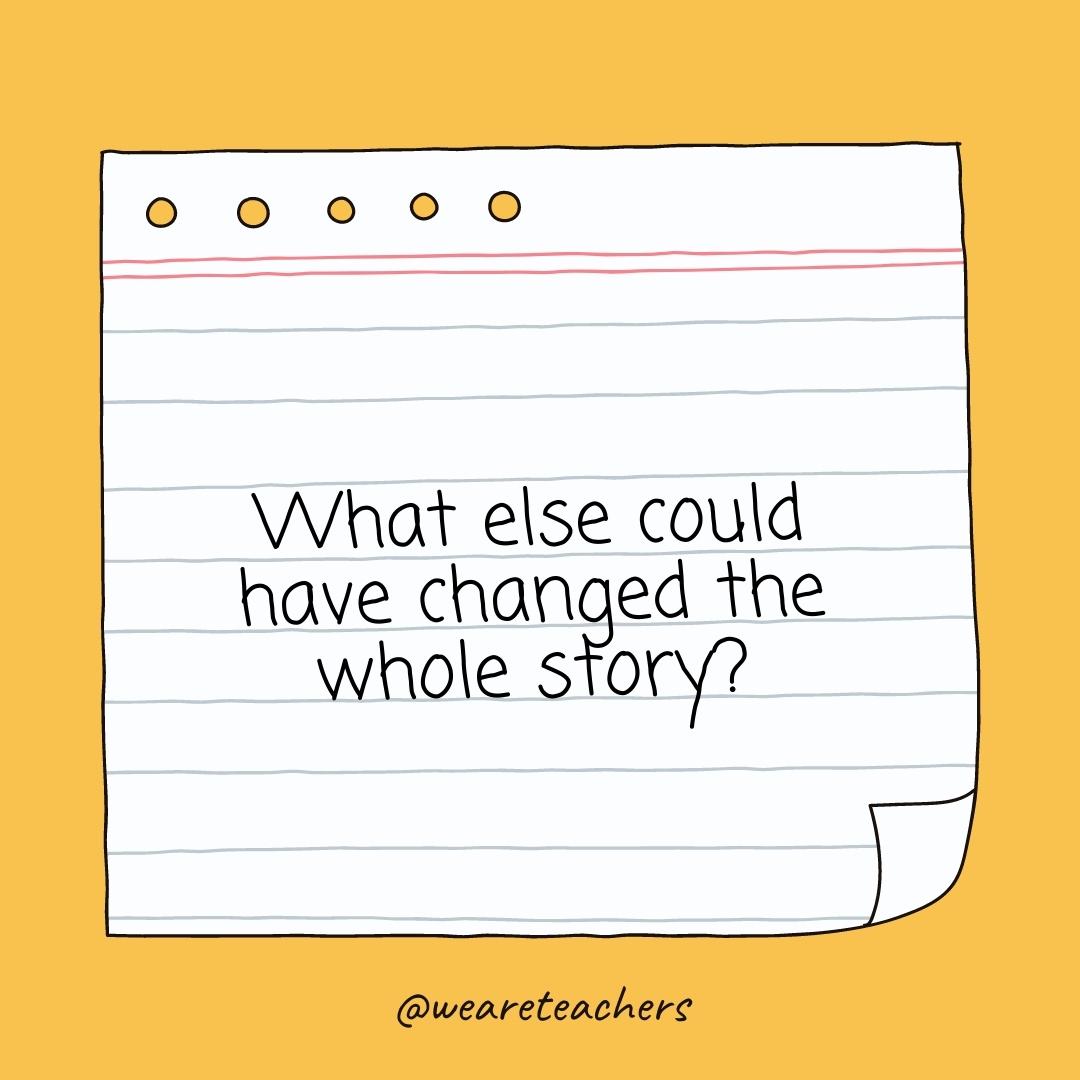
- Can you conclude?
- Would your position have been in that situation?
- Would happen if … ?
- Makes your position stronger?
- Was the turning point?
- Is the point of the question?
- Did it mean when … ?
- Is the other side of this argument?
- Was the purpose of … ?
- Does ______ mean?
- Is the problem you are trying to solve?
- Does the evidence say?
- Assumptions are you making?
- Is a better alternative?
- Are the strengths of the argument?
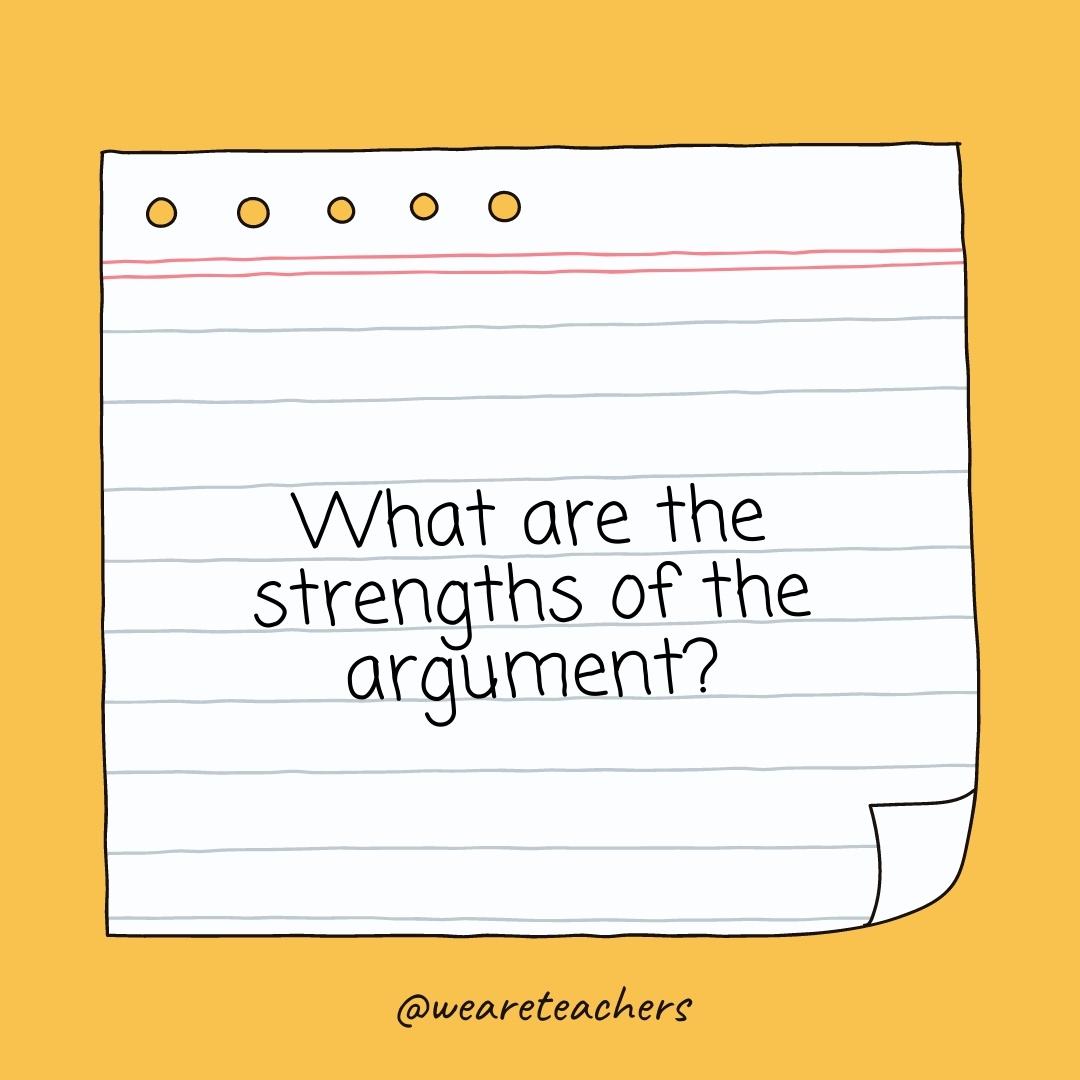
- Are the weaknesses of the argument?
- Is the difference between _______ and _______?
“Where” Critical Thinking Questions
Think about where the story is set and how it affects the actions. Plus, consider where and how you can learn more.
- Would this issue be a major problem?
- Are areas for improvement?
- Did the story change?
- Would you most often find this problem?

- Are there similar situations?
- Would you go to get answers to this problem?
- Can this be improved?
- Can you get more information?
- Will this idea take us?
“When” Critical Thinking Questions
Think about timing and the effect it has on the characters or people involved.
- Is this acceptable?
- Is this unacceptable?
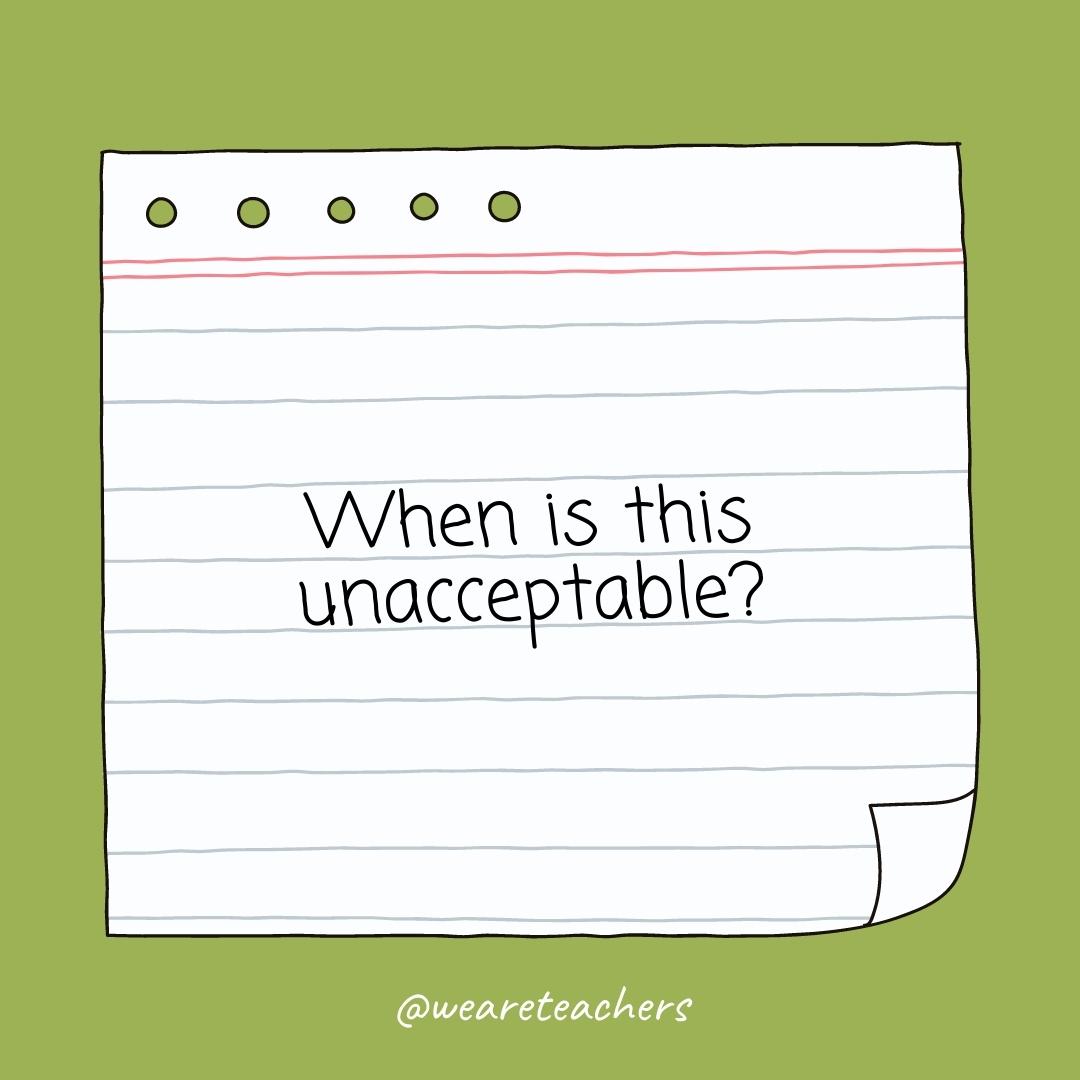
- Does this become a problem?
- Is the best time to take action?
- Will we be able to tell if it worked?
- Is it time to reassess?
- Should we ask for help?
- Is the best time to start?
- Is it time to stop?
- Would this benefit society?
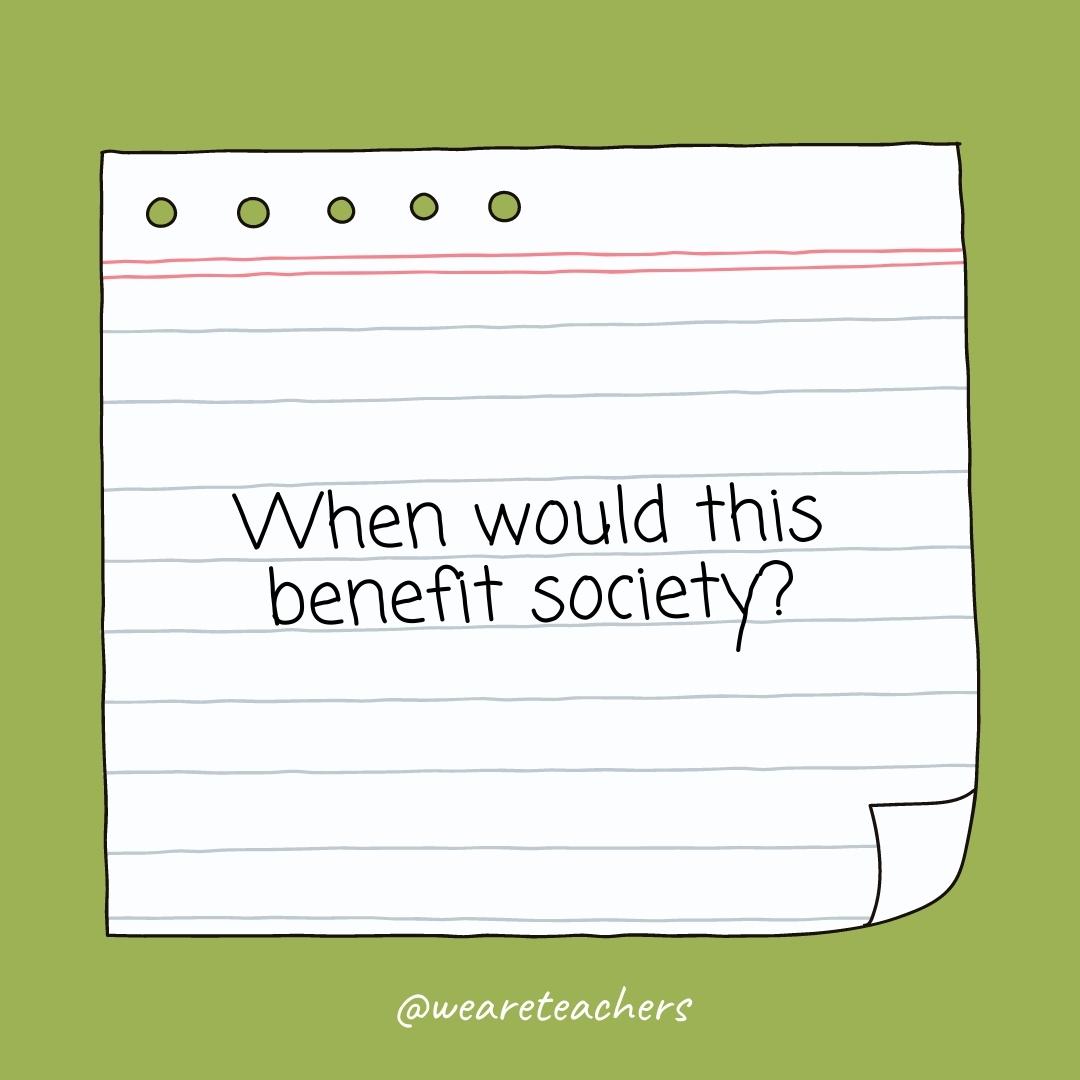
- Has this happened before?
“Why” Critical Thinking Questions
Asking “why” might be one of the most important parts of critical thinking. Exploring and understanding motivation helps develop empathy and make sense of difficult situations.
- Is _________ happening?
- Have we allowed this to happen?
- Should people care about this issue?
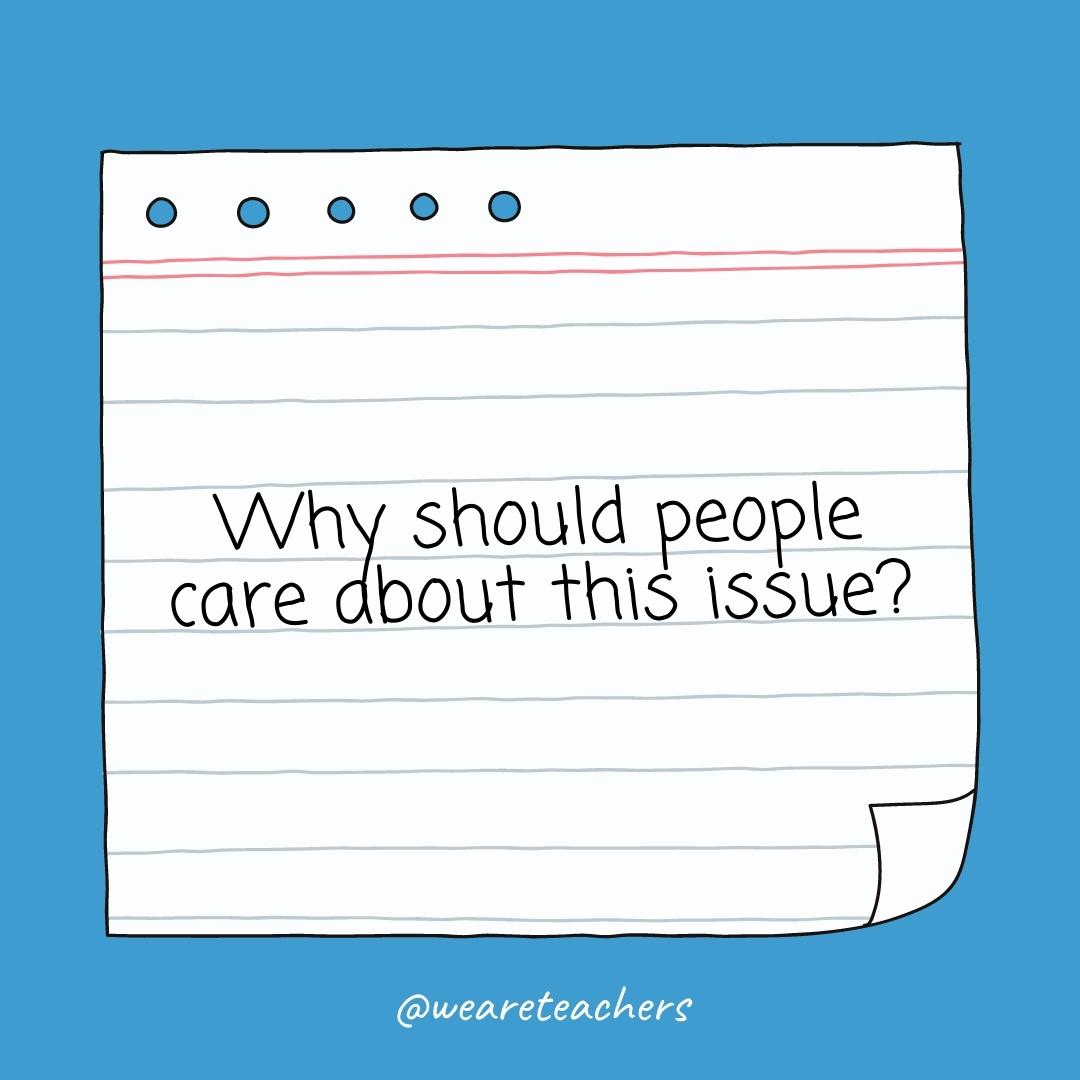
- Is this a problem?
- Did the character say … ?
- Did the character do … ?
- Is this relevant?
- Did the author write this?
- Did the author decide to … ?
- Is this important?
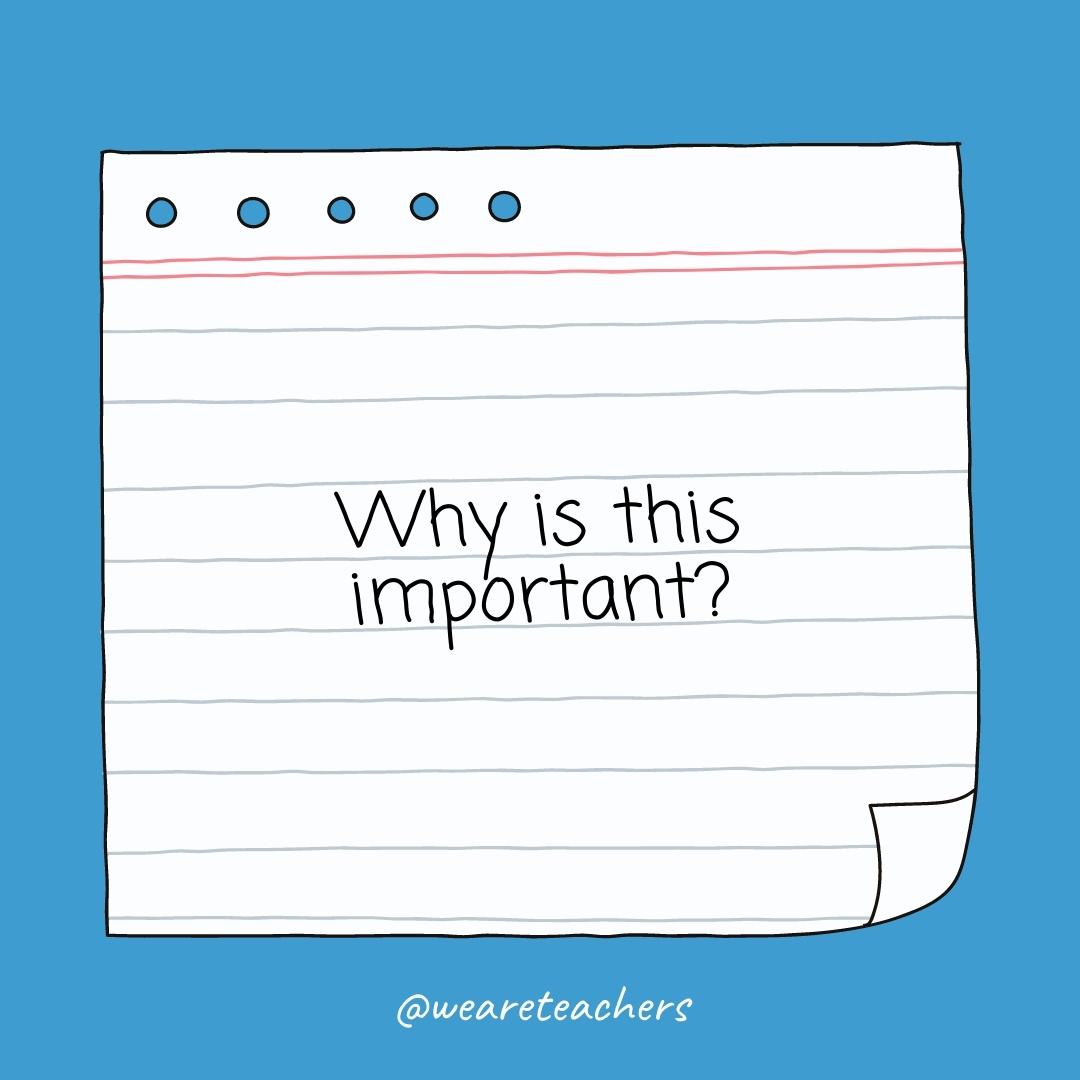
- Did that happen?
- Is it necessary?
- Do you think I (he, she, they) asked that question?
- Is that answer the best one?
- Do we need this today?
“How” Critical Thinking Questions
Use these questions to consider how things happen and whether change is possible.
- Do we know this is true?
- Does the language used affect the story?
- Would you solve … ?
- Is this different from other situations?
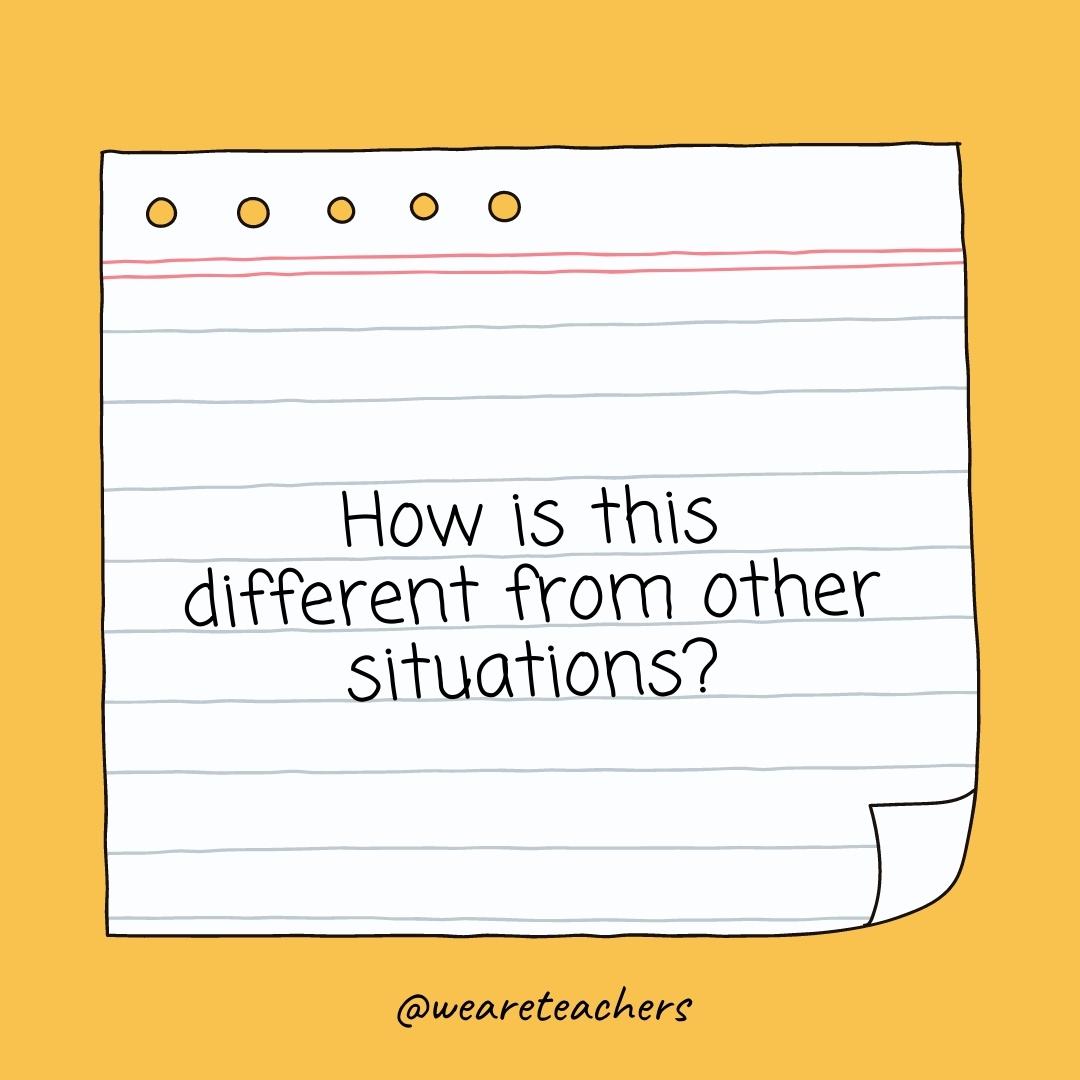
- Is this similar to … ?
- Would you use … ?
- Does the location affect the story?
- Could the story have ended differently?
- Does this work?
- Could this be harmful?
- Does this connect with what I already know?
- Else could this have been handled?
- Should they have responded?

- Would you feel about … ?
- Does this change the outcome?
- Did you make that decision?
- Does this benefit you/others?
- Does this hurt you/others?
- Could this problem be avoided?
More Critical Thinking Questions
Here are more questions to help probe further and deepen understanding.
- Can you give me an example?
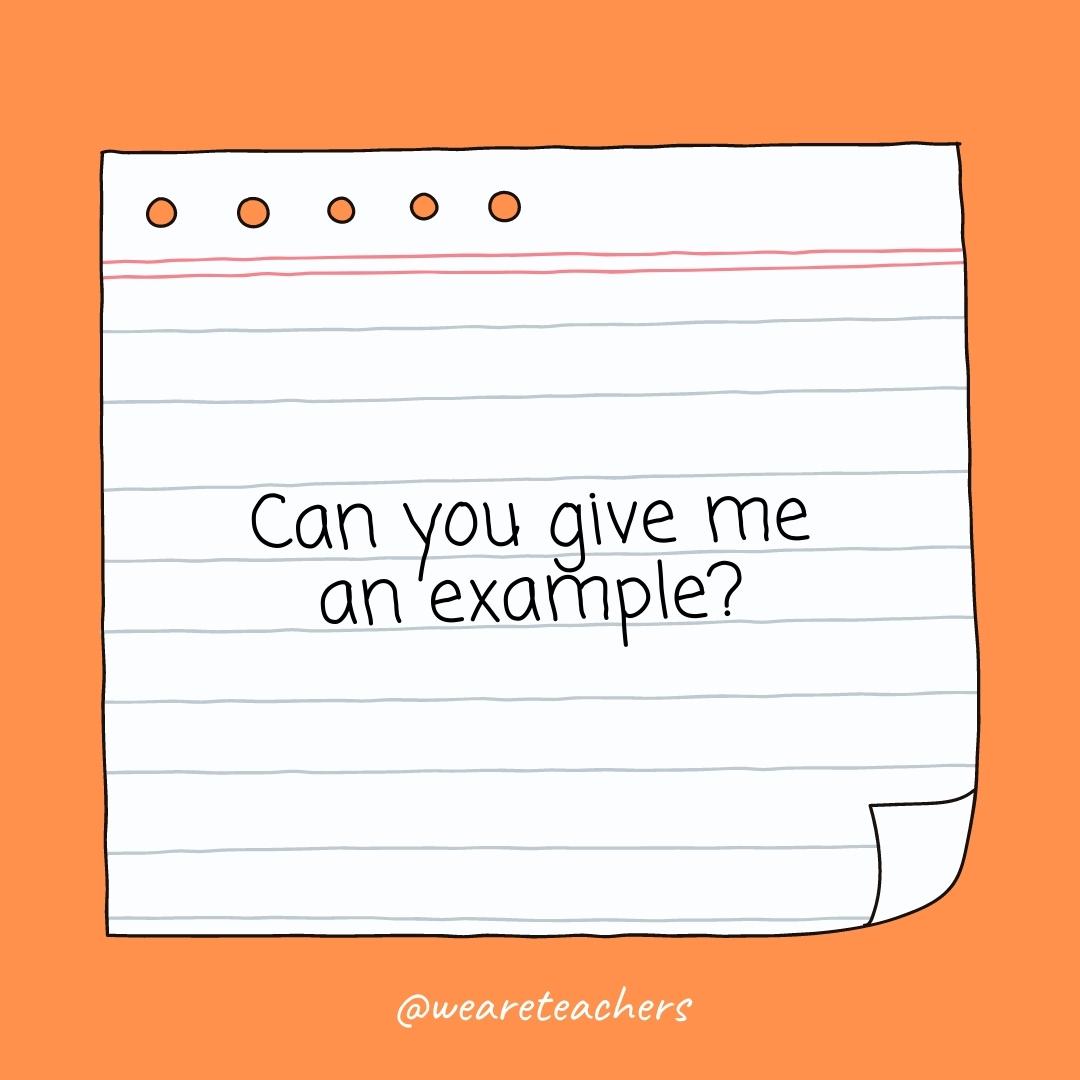
- Do you agree with … ?
- Can you compare this with … ?
- Can you defend the actions of … ?
- Could this be interpreted differently?
- Is the narrator reliable?
- Does it seem too good to be true?
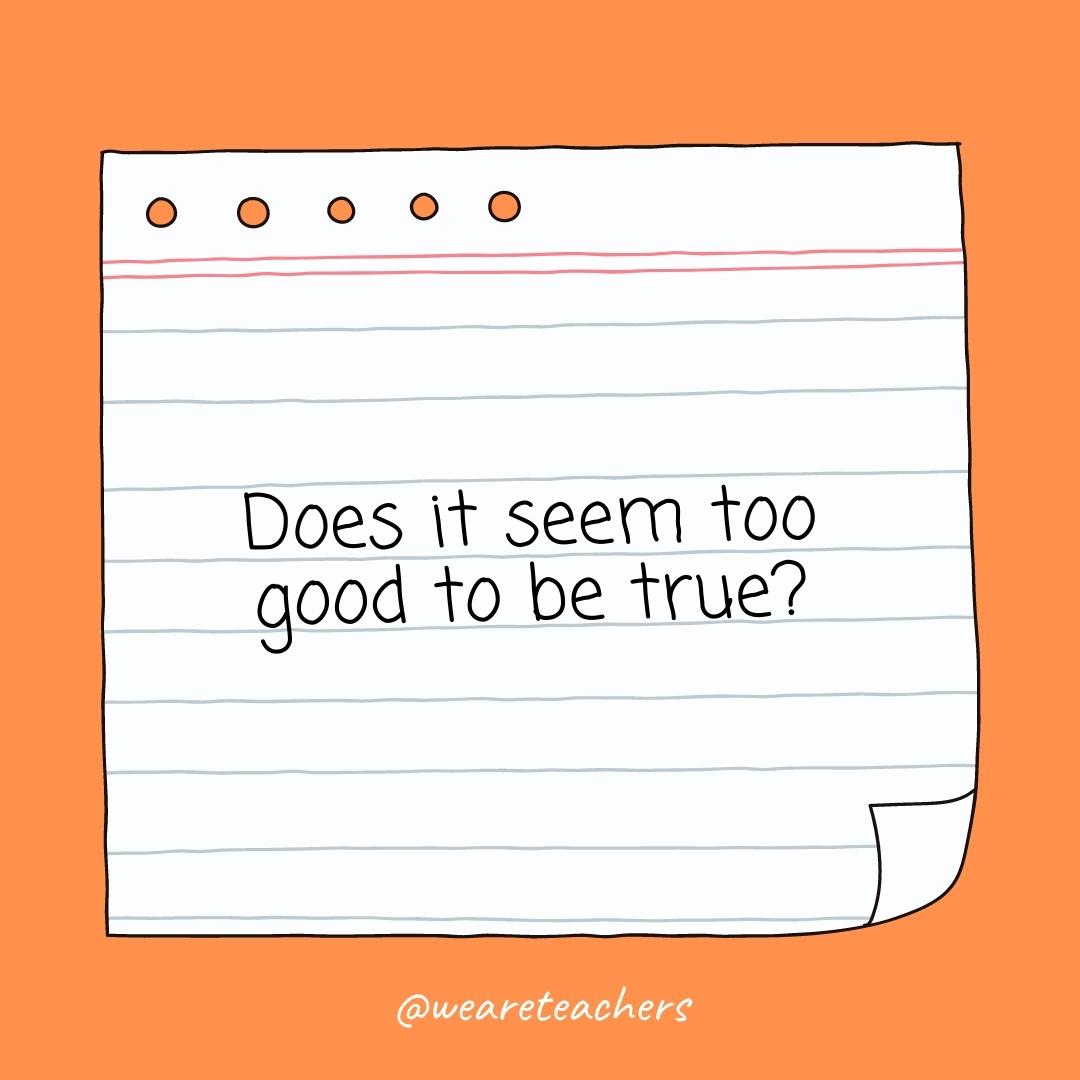
- Is ______ a fact or an opinion?
What are your favorite critical thinking questions? Come exchange ideas on the WeAreTeachers HELPLINE group on Facebook .
Plus, check out 10 tips for teaching kids to be awesome critical thinkers ., you might also like.
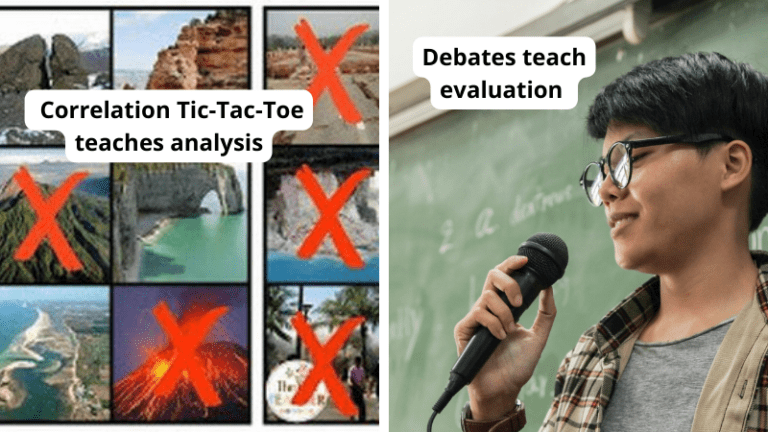
5 Critical Thinking Skills Every Kid Needs To Learn (And How To Teach Them)
Teach them to thoughtfully question the world around them. Continue Reading
Copyright © 2023. All rights reserved. 5335 Gate Parkway, Jacksonville, FL 32256
Critical Thinking Definition, Skills, and Examples
- Homework Help
- Private School
- College Admissions
- College Life
- Graduate School
- Business School
- Distance Learning
:max_bytes(150000):strip_icc():format(webp)/ADHeadshot-Cropped-b80e40469d5b4852a68f94ad69d6e8bd.jpg)
- Indiana University, Bloomington
- State University of New York at Oneonta
Critical thinking refers to the ability to analyze information objectively and make a reasoned judgment. It involves the evaluation of sources, such as data, facts, observable phenomena, and research findings.
Good critical thinkers can draw reasonable conclusions from a set of information, and discriminate between useful and less useful details to solve problems or make decisions. Employers prioritize the ability to think critically—find out why, plus see how you can demonstrate that you have this ability throughout the job application process.
Why Do Employers Value Critical Thinking Skills?
Employers want job candidates who can evaluate a situation using logical thought and offer the best solution.
Someone with critical thinking skills can be trusted to make decisions independently, and will not need constant handholding.
Hiring a critical thinker means that micromanaging won't be required. Critical thinking abilities are among the most sought-after skills in almost every industry and workplace. You can demonstrate critical thinking by using related keywords in your resume and cover letter, and during your interview.
Examples of Critical Thinking
The circumstances that demand critical thinking vary from industry to industry. Some examples include:
- A triage nurse analyzes the cases at hand and decides the order by which the patients should be treated.
- A plumber evaluates the materials that would best suit a particular job.
- An attorney reviews evidence and devises a strategy to win a case or to decide whether to settle out of court.
- A manager analyzes customer feedback forms and uses this information to develop a customer service training session for employees.
Promote Your Skills in Your Job Search
If critical thinking is a key phrase in the job listings you are applying for, be sure to emphasize your critical thinking skills throughout your job search.
Add Keywords to Your Resume
You can use critical thinking keywords (analytical, problem solving, creativity, etc.) in your resume. When describing your work history , include top critical thinking skills that accurately describe you. You can also include them in your resume summary , if you have one.
For example, your summary might read, “Marketing Associate with five years of experience in project management. Skilled in conducting thorough market research and competitor analysis to assess market trends and client needs, and to develop appropriate acquisition tactics.”
Mention Skills in Your Cover Letter
Include these critical thinking skills in your cover letter. In the body of your letter, mention one or two of these skills, and give specific examples of times when you have demonstrated them at work. Think about times when you had to analyze or evaluate materials to solve a problem.
Show the Interviewer Your Skills
You can use these skill words in an interview. Discuss a time when you were faced with a particular problem or challenge at work and explain how you applied critical thinking to solve it.
Some interviewers will give you a hypothetical scenario or problem, and ask you to use critical thinking skills to solve it. In this case, explain your thought process thoroughly to the interviewer. He or she is typically more focused on how you arrive at your solution rather than the solution itself. The interviewer wants to see you analyze and evaluate (key parts of critical thinking) the given scenario or problem.
Of course, each job will require different skills and experiences, so make sure you read the job description carefully and focus on the skills listed by the employer.
Top Critical Thinking Skills
Keep these in-demand critical thinking skills in mind as you update your resume and write your cover letter. As you've seen, you can also emphasize them at other points throughout the application process, such as your interview.
Part of critical thinking is the ability to carefully examine something, whether it is a problem, a set of data, or a text. People with analytical skills can examine information, understand what it means, and properly explain to others the implications of that information.
- Asking Thoughtful Questions
- Data Analysis
- Interpretation
- Questioning Evidence
- Recognizing Patterns
Communication
Often, you will need to share your conclusions with your employers or with a group of colleagues. You need to be able to communicate with others to share your ideas effectively. You might also need to engage in critical thinking in a group. In this case, you will need to work with others and communicate effectively to figure out solutions to complex problems.
- Active Listening
- Collaboration
- Explanation
- Interpersonal
- Presentation
- Verbal Communication
- Written Communication
Critical thinking often involves creativity and innovation. You might need to spot patterns in the information you are looking at or come up with a solution that no one else has thought of before. All of this involves a creative eye that can take a different approach from all other approaches.
- Flexibility
- Conceptualization
- Imagination
- Drawing Connections
- Synthesizing
Open-Mindedness
To think critically, you need to be able to put aside any assumptions or judgments and merely analyze the information you receive. You need to be objective, evaluating ideas without bias.
- Objectivity
- Observation
Problem Solving
Problem-solving is another critical thinking skill that involves analyzing a problem, generating and implementing a solution, and assessing the success of the plan. Employers don’t simply want employees who can think about information critically. They also need to be able to come up with practical solutions.
- Attention to Detail
- Clarification
- Decision Making
- Groundedness
- Identifying Patterns
More Critical Thinking Skills
- Inductive Reasoning
- Deductive Reasoning
- Noticing Outliers
- Adaptability
- Emotional Intelligence
- Brainstorming
- Optimization
- Restructuring
- Integration
- Strategic Planning
- Project Management
- Ongoing Improvement
- Causal Relationships
- Case Analysis
- Diagnostics
- SWOT Analysis
- Business Intelligence
- Quantitative Data Management
- Qualitative Data Management
- Risk Management
- Scientific Method
- Consumer Behavior
Key Takeaways
- Demonstrate that you have critical thinking skills by adding relevant keywords to your resume.
- Mention pertinent critical thinking skills in your cover letter, too, and include an example of a time when you demonstrated them at work.
- Finally, highlight critical thinking skills during your interview. For instance, you might discuss a time when you were faced with a challenge at work and explain how you applied critical thinking skills to solve it.
University of Louisville. " What is Critical Thinking ."
American Management Association. " AMA Critical Skills Survey: Workers Need Higher Level Skills to Succeed in the 21st Century ."
- How To Become an Effective Problem Solver
- 2020-21 Common Application Essay Option 4—Solving a Problem
- College Interview Tips: "Tell Me About a Challenge You Overcame"
- Types of Medical School Interviews and What to Expect
- The Horse Problem: A Math Challenge
- What to Do When the Technology Fails in Class
- A Guide to Business Letters Types
- Landing Your First Teaching Job
- How to Facilitate Learning and Critical Thinking
- Best Majors for Pre-med Students
- Problem Solving in Mathematics
- Discover Ideas Through Brainstorming
- What You Need to Know About the Executive Assessment
- Finding a Job for ESL Learners: Interview Basics
- Finding a Job for ESL Learners
- Job Interview Questions and Answers

- Table of Contents
- Random Entry
- Chronological
- Editorial Information
- About the SEP
- Editorial Board
- How to Cite the SEP
- Special Characters
- Advanced Tools
- Support the SEP
- PDFs for SEP Friends
- Make a Donation
- SEPIA for Libraries
- Entry Contents
Bibliography
Academic tools.
- Friends PDF Preview
- Author and Citation Info
- Back to Top
Critical Thinking
Critical thinking is a widely accepted educational goal. Its definition is contested, but the competing definitions can be understood as differing conceptions of the same basic concept: careful thinking directed to a goal. Conceptions differ with respect to the scope of such thinking, the type of goal, the criteria and norms for thinking carefully, and the thinking components on which they focus. Its adoption as an educational goal has been recommended on the basis of respect for students’ autonomy and preparing students for success in life and for democratic citizenship. “Critical thinkers” have the dispositions and abilities that lead them to think critically when appropriate. The abilities can be identified directly; the dispositions indirectly, by considering what factors contribute to or impede exercise of the abilities. Standardized tests have been developed to assess the degree to which a person possesses such dispositions and abilities. Educational intervention has been shown experimentally to improve them, particularly when it includes dialogue, anchored instruction, and mentoring. Controversies have arisen over the generalizability of critical thinking across domains, over alleged bias in critical thinking theories and instruction, and over the relationship of critical thinking to other types of thinking.
2.1 Dewey’s Three Main Examples
2.2 dewey’s other examples, 2.3 further examples, 2.4 non-examples, 3. the definition of critical thinking, 4. its value, 5. the process of thinking critically, 6. components of the process, 7. contributory dispositions and abilities, 8.1 initiating dispositions, 8.2 internal dispositions, 9. critical thinking abilities, 10. required knowledge, 11. educational methods, 12.1 the generalizability of critical thinking, 12.2 bias in critical thinking theory and pedagogy, 12.3 relationship of critical thinking to other types of thinking, other internet resources, related entries.
Use of the term ‘critical thinking’ to describe an educational goal goes back to the American philosopher John Dewey (1910), who more commonly called it ‘reflective thinking’. He defined it as
active, persistent and careful consideration of any belief or supposed form of knowledge in the light of the grounds that support it, and the further conclusions to which it tends. (Dewey 1910: 6; 1933: 9)
and identified a habit of such consideration with a scientific attitude of mind. His lengthy quotations of Francis Bacon, John Locke, and John Stuart Mill indicate that he was not the first person to propose development of a scientific attitude of mind as an educational goal.
In the 1930s, many of the schools that participated in the Eight-Year Study of the Progressive Education Association (Aikin 1942) adopted critical thinking as an educational goal, for whose achievement the study’s Evaluation Staff developed tests (Smith, Tyler, & Evaluation Staff 1942). Glaser (1941) showed experimentally that it was possible to improve the critical thinking of high school students. Bloom’s influential taxonomy of cognitive educational objectives (Bloom et al. 1956) incorporated critical thinking abilities. Ennis (1962) proposed 12 aspects of critical thinking as a basis for research on the teaching and evaluation of critical thinking ability.
Since 1980, an annual international conference in California on critical thinking and educational reform has attracted tens of thousands of educators from all levels of education and from many parts of the world. Also since 1980, the state university system in California has required all undergraduate students to take a critical thinking course. Since 1983, the Association for Informal Logic and Critical Thinking has sponsored sessions in conjunction with the divisional meetings of the American Philosophical Association (APA). In 1987, the APA’s Committee on Pre-College Philosophy commissioned a consensus statement on critical thinking for purposes of educational assessment and instruction (Facione 1990a). Researchers have developed standardized tests of critical thinking abilities and dispositions; for details, see the Supplement on Assessment . Educational jurisdictions around the world now include critical thinking in guidelines for curriculum and assessment.
For details on this history, see the Supplement on History .
2. Examples and Non-Examples
Before considering the definition of critical thinking, it will be helpful to have in mind some examples of critical thinking, as well as some examples of kinds of thinking that would apparently not count as critical thinking.
Dewey (1910: 68–71; 1933: 91–94) takes as paradigms of reflective thinking three class papers of students in which they describe their thinking. The examples range from the everyday to the scientific.
Transit : “The other day, when I was down town on 16th Street, a clock caught my eye. I saw that the hands pointed to 12:20. This suggested that I had an engagement at 124th Street, at one o’clock. I reasoned that as it had taken me an hour to come down on a surface car, I should probably be twenty minutes late if I returned the same way. I might save twenty minutes by a subway express. But was there a station near? If not, I might lose more than twenty minutes in looking for one. Then I thought of the elevated, and I saw there was such a line within two blocks. But where was the station? If it were several blocks above or below the street I was on, I should lose time instead of gaining it. My mind went back to the subway express as quicker than the elevated; furthermore, I remembered that it went nearer than the elevated to the part of 124th Street I wished to reach, so that time would be saved at the end of the journey. I concluded in favor of the subway, and reached my destination by one o’clock.” (Dewey 1910: 68–69; 1933: 91–92)
Ferryboat : “Projecting nearly horizontally from the upper deck of the ferryboat on which I daily cross the river is a long white pole, having a gilded ball at its tip. It suggested a flagpole when I first saw it; its color, shape, and gilded ball agreed with this idea, and these reasons seemed to justify me in this belief. But soon difficulties presented themselves. The pole was nearly horizontal, an unusual position for a flagpole; in the next place, there was no pulley, ring, or cord by which to attach a flag; finally, there were elsewhere on the boat two vertical staffs from which flags were occasionally flown. It seemed probable that the pole was not there for flag-flying.
“I then tried to imagine all possible purposes of the pole, and to consider for which of these it was best suited: (a) Possibly it was an ornament. But as all the ferryboats and even the tugboats carried poles, this hypothesis was rejected. (b) Possibly it was the terminal of a wireless telegraph. But the same considerations made this improbable. Besides, the more natural place for such a terminal would be the highest part of the boat, on top of the pilot house. (c) Its purpose might be to point out the direction in which the boat is moving.
“In support of this conclusion, I discovered that the pole was lower than the pilot house, so that the steersman could easily see it. Moreover, the tip was enough higher than the base, so that, from the pilot’s position, it must appear to project far out in front of the boat. Moreover, the pilot being near the front of the boat, he would need some such guide as to its direction. Tugboats would also need poles for such a purpose. This hypothesis was so much more probable than the others that I accepted it. I formed the conclusion that the pole was set up for the purpose of showing the pilot the direction in which the boat pointed, to enable him to steer correctly.” (Dewey 1910: 69–70; 1933: 92–93)
Bubbles : “In washing tumblers in hot soapsuds and placing them mouth downward on a plate, bubbles appeared on the outside of the mouth of the tumblers and then went inside. Why? The presence of bubbles suggests air, which I note must come from inside the tumbler. I see that the soapy water on the plate prevents escape of the air save as it may be caught in bubbles. But why should air leave the tumbler? There was no substance entering to force it out. It must have expanded. It expands by increase of heat, or by decrease of pressure, or both. Could the air have become heated after the tumbler was taken from the hot suds? Clearly not the air that was already entangled in the water. If heated air was the cause, cold air must have entered in transferring the tumblers from the suds to the plate. I test to see if this supposition is true by taking several more tumblers out. Some I shake so as to make sure of entrapping cold air in them. Some I take out holding mouth downward in order to prevent cold air from entering. Bubbles appear on the outside of every one of the former and on none of the latter. I must be right in my inference. Air from the outside must have been expanded by the heat of the tumbler, which explains the appearance of the bubbles on the outside. But why do they then go inside? Cold contracts. The tumbler cooled and also the air inside it. Tension was removed, and hence bubbles appeared inside. To be sure of this, I test by placing a cup of ice on the tumbler while the bubbles are still forming outside. They soon reverse” (Dewey 1910: 70–71; 1933: 93–94).
Dewey (1910, 1933) sprinkles his book with other examples of critical thinking. We will refer to the following.
Weather : A man on a walk notices that it has suddenly become cool, thinks that it is probably going to rain, looks up and sees a dark cloud obscuring the sun, and quickens his steps (1910: 6–10; 1933: 9–13).
Disorder : A man finds his rooms on his return to them in disorder with his belongings thrown about, thinks at first of burglary as an explanation, then thinks of mischievous children as being an alternative explanation, then looks to see whether valuables are missing, and discovers that they are (1910: 82–83; 1933: 166–168).
Typhoid : A physician diagnosing a patient whose conspicuous symptoms suggest typhoid avoids drawing a conclusion until more data are gathered by questioning the patient and by making tests (1910: 85–86; 1933: 170).
Blur : A moving blur catches our eye in the distance, we ask ourselves whether it is a cloud of whirling dust or a tree moving its branches or a man signaling to us, we think of other traits that should be found on each of those possibilities, and we look and see if those traits are found (1910: 102, 108; 1933: 121, 133).
Suction pump : In thinking about the suction pump, the scientist first notes that it will draw water only to a maximum height of 33 feet at sea level and to a lesser maximum height at higher elevations, selects for attention the differing atmospheric pressure at these elevations, sets up experiments in which the air is removed from a vessel containing water (when suction no longer works) and in which the weight of air at various levels is calculated, compares the results of reasoning about the height to which a given weight of air will allow a suction pump to raise water with the observed maximum height at different elevations, and finally assimilates the suction pump to such apparently different phenomena as the siphon and the rising of a balloon (1910: 150–153; 1933: 195–198).
Diamond : A passenger in a car driving in a diamond lane reserved for vehicles with at least one passenger notices that the diamond marks on the pavement are far apart in some places and close together in others. Why? The driver suggests that the reason may be that the diamond marks are not needed where there is a solid double line separating the diamond lane from the adjoining lane, but are needed when there is a dotted single line permitting crossing into the diamond lane. Further observation confirms that the diamonds are close together when a dotted line separates the diamond lane from its neighbour, but otherwise far apart.
Rash : A woman suddenly develops a very itchy red rash on her throat and upper chest. She recently noticed a mark on the back of her right hand, but was not sure whether the mark was a rash or a scrape. She lies down in bed and thinks about what might be causing the rash and what to do about it. About two weeks before, she began taking blood pressure medication that contained a sulfa drug, and the pharmacist had warned her, in view of a previous allergic reaction to a medication containing a sulfa drug, to be on the alert for an allergic reaction; however, she had been taking the medication for two weeks with no such effect. The day before, she began using a new cream on her neck and upper chest; against the new cream as the cause was mark on the back of her hand, which had not been exposed to the cream. She began taking probiotics about a month before. She also recently started new eye drops, but she supposed that manufacturers of eye drops would be careful not to include allergy-causing components in the medication. The rash might be a heat rash, since she recently was sweating profusely from her upper body. Since she is about to go away on a short vacation, where she would not have access to her usual physician, she decides to keep taking the probiotics and using the new eye drops but to discontinue the blood pressure medication and to switch back to the old cream for her neck and upper chest. She forms a plan to consult her regular physician on her return about the blood pressure medication.
Candidate : Although Dewey included no examples of thinking directed at appraising the arguments of others, such thinking has come to be considered a kind of critical thinking. We find an example of such thinking in the performance task on the Collegiate Learning Assessment (CLA+), which its sponsoring organization describes as
a performance-based assessment that provides a measure of an institution’s contribution to the development of critical-thinking and written communication skills of its students. (Council for Aid to Education 2017)
A sample task posted on its website requires the test-taker to write a report for public distribution evaluating a fictional candidate’s policy proposals and their supporting arguments, using supplied background documents, with a recommendation on whether to endorse the candidate.
Immediate acceptance of an idea that suggests itself as a solution to a problem (e.g., a possible explanation of an event or phenomenon, an action that seems likely to produce a desired result) is “uncritical thinking, the minimum of reflection” (Dewey 1910: 13). On-going suspension of judgment in the light of doubt about a possible solution is not critical thinking (Dewey 1910: 108). Critique driven by a dogmatically held political or religious ideology is not critical thinking; thus Paulo Freire (1968 [1970]) is using the term (e.g., at 1970: 71, 81, 100, 146) in a more politically freighted sense that includes not only reflection but also revolutionary action against oppression. Derivation of a conclusion from given data using an algorithm is not critical thinking.
What is critical thinking? There are many definitions. Ennis (2016) lists 14 philosophically oriented scholarly definitions and three dictionary definitions. Following Rawls (1971), who distinguished his conception of justice from a utilitarian conception but regarded them as rival conceptions of the same concept, Ennis maintains that the 17 definitions are different conceptions of the same concept. Rawls articulated the shared concept of justice as
a characteristic set of principles for assigning basic rights and duties and for determining… the proper distribution of the benefits and burdens of social cooperation. (Rawls 1971: 5)
Bailin et al. (1999b) claim that, if one considers what sorts of thinking an educator would take not to be critical thinking and what sorts to be critical thinking, one can conclude that educators typically understand critical thinking to have at least three features.
- It is done for the purpose of making up one’s mind about what to believe or do.
- The person engaging in the thinking is trying to fulfill standards of adequacy and accuracy appropriate to the thinking.
- The thinking fulfills the relevant standards to some threshold level.
One could sum up the core concept that involves these three features by saying that critical thinking is careful goal-directed thinking. This core concept seems to apply to all the examples of critical thinking described in the previous section. As for the non-examples, their exclusion depends on construing careful thinking as excluding jumping immediately to conclusions, suspending judgment no matter how strong the evidence, reasoning from an unquestioned ideological or religious perspective, and routinely using an algorithm to answer a question.
If the core of critical thinking is careful goal-directed thinking, conceptions of it can vary according to its presumed scope, its presumed goal, one’s criteria and threshold for being careful, and the thinking component on which one focuses. As to its scope, some conceptions (e.g., Dewey 1910, 1933) restrict it to constructive thinking on the basis of one’s own observations and experiments, others (e.g., Ennis 1962; Fisher & Scriven 1997; Johnson 1992) to appraisal of the products of such thinking. Ennis (1991) and Bailin et al. (1999b) take it to cover both construction and appraisal. As to its goal, some conceptions restrict it to forming a judgment (Dewey 1910, 1933; Lipman 1987; Facione 1990a). Others allow for actions as well as beliefs as the end point of a process of critical thinking (Ennis 1991; Bailin et al. 1999b). As to the criteria and threshold for being careful, definitions vary in the term used to indicate that critical thinking satisfies certain norms: “intellectually disciplined” (Scriven & Paul 1987), “reasonable” (Ennis 1991), “skillful” (Lipman 1987), “skilled” (Fisher & Scriven 1997), “careful” (Bailin & Battersby 2009). Some definitions specify these norms, referring variously to “consideration of any belief or supposed form of knowledge in the light of the grounds that support it and the further conclusions to which it tends” (Dewey 1910, 1933); “the methods of logical inquiry and reasoning” (Glaser 1941); “conceptualizing, applying, analyzing, synthesizing, and/or evaluating information gathered from, or generated by, observation, experience, reflection, reasoning, or communication” (Scriven & Paul 1987); the requirement that “it is sensitive to context, relies on criteria, and is self-correcting” (Lipman 1987); “evidential, conceptual, methodological, criteriological, or contextual considerations” (Facione 1990a); and “plus-minus considerations of the product in terms of appropriate standards (or criteria)” (Johnson 1992). Stanovich and Stanovich (2010) propose to ground the concept of critical thinking in the concept of rationality, which they understand as combining epistemic rationality (fitting one’s beliefs to the world) and instrumental rationality (optimizing goal fulfillment); a critical thinker, in their view, is someone with “a propensity to override suboptimal responses from the autonomous mind” (2010: 227). These variant specifications of norms for critical thinking are not necessarily incompatible with one another, and in any case presuppose the core notion of thinking carefully. As to the thinking component singled out, some definitions focus on suspension of judgment during the thinking (Dewey 1910; McPeck 1981), others on inquiry while judgment is suspended (Bailin & Battersby 2009, 2021), others on the resulting judgment (Facione 1990a), and still others on responsiveness to reasons (Siegel 1988). Kuhn (2019) takes critical thinking to be more a dialogic practice of advancing and responding to arguments than an individual ability.
In educational contexts, a definition of critical thinking is a “programmatic definition” (Scheffler 1960: 19). It expresses a practical program for achieving an educational goal. For this purpose, a one-sentence formulaic definition is much less useful than articulation of a critical thinking process, with criteria and standards for the kinds of thinking that the process may involve. The real educational goal is recognition, adoption and implementation by students of those criteria and standards. That adoption and implementation in turn consists in acquiring the knowledge, abilities and dispositions of a critical thinker.
Conceptions of critical thinking generally do not include moral integrity as part of the concept. Dewey, for example, took critical thinking to be the ultimate intellectual goal of education, but distinguished it from the development of social cooperation among school children, which he took to be the central moral goal. Ennis (1996, 2011) added to his previous list of critical thinking dispositions a group of dispositions to care about the dignity and worth of every person, which he described as a “correlative” (1996) disposition without which critical thinking would be less valuable and perhaps harmful. An educational program that aimed at developing critical thinking but not the correlative disposition to care about the dignity and worth of every person, he asserted, “would be deficient and perhaps dangerous” (Ennis 1996: 172).
Dewey thought that education for reflective thinking would be of value to both the individual and society; recognition in educational practice of the kinship to the scientific attitude of children’s native curiosity, fertile imagination and love of experimental inquiry “would make for individual happiness and the reduction of social waste” (Dewey 1910: iii). Schools participating in the Eight-Year Study took development of the habit of reflective thinking and skill in solving problems as a means to leading young people to understand, appreciate and live the democratic way of life characteristic of the United States (Aikin 1942: 17–18, 81). Harvey Siegel (1988: 55–61) has offered four considerations in support of adopting critical thinking as an educational ideal. (1) Respect for persons requires that schools and teachers honour students’ demands for reasons and explanations, deal with students honestly, and recognize the need to confront students’ independent judgment; these requirements concern the manner in which teachers treat students. (2) Education has the task of preparing children to be successful adults, a task that requires development of their self-sufficiency. (3) Education should initiate children into the rational traditions in such fields as history, science and mathematics. (4) Education should prepare children to become democratic citizens, which requires reasoned procedures and critical talents and attitudes. To supplement these considerations, Siegel (1988: 62–90) responds to two objections: the ideology objection that adoption of any educational ideal requires a prior ideological commitment and the indoctrination objection that cultivation of critical thinking cannot escape being a form of indoctrination.
Despite the diversity of our 11 examples, one can recognize a common pattern. Dewey analyzed it as consisting of five phases:
- suggestions , in which the mind leaps forward to a possible solution;
- an intellectualization of the difficulty or perplexity into a problem to be solved, a question for which the answer must be sought;
- the use of one suggestion after another as a leading idea, or hypothesis , to initiate and guide observation and other operations in collection of factual material;
- the mental elaboration of the idea or supposition as an idea or supposition ( reasoning , in the sense on which reasoning is a part, not the whole, of inference); and
- testing the hypothesis by overt or imaginative action. (Dewey 1933: 106–107; italics in original)
The process of reflective thinking consisting of these phases would be preceded by a perplexed, troubled or confused situation and followed by a cleared-up, unified, resolved situation (Dewey 1933: 106). The term ‘phases’ replaced the term ‘steps’ (Dewey 1910: 72), thus removing the earlier suggestion of an invariant sequence. Variants of the above analysis appeared in (Dewey 1916: 177) and (Dewey 1938: 101–119).
The variant formulations indicate the difficulty of giving a single logical analysis of such a varied process. The process of critical thinking may have a spiral pattern, with the problem being redefined in the light of obstacles to solving it as originally formulated. For example, the person in Transit might have concluded that getting to the appointment at the scheduled time was impossible and have reformulated the problem as that of rescheduling the appointment for a mutually convenient time. Further, defining a problem does not always follow after or lead immediately to an idea of a suggested solution. Nor should it do so, as Dewey himself recognized in describing the physician in Typhoid as avoiding any strong preference for this or that conclusion before getting further information (Dewey 1910: 85; 1933: 170). People with a hypothesis in mind, even one to which they have a very weak commitment, have a so-called “confirmation bias” (Nickerson 1998): they are likely to pay attention to evidence that confirms the hypothesis and to ignore evidence that counts against it or for some competing hypothesis. Detectives, intelligence agencies, and investigators of airplane accidents are well advised to gather relevant evidence systematically and to postpone even tentative adoption of an explanatory hypothesis until the collected evidence rules out with the appropriate degree of certainty all but one explanation. Dewey’s analysis of the critical thinking process can be faulted as well for requiring acceptance or rejection of a possible solution to a defined problem, with no allowance for deciding in the light of the available evidence to suspend judgment. Further, given the great variety of kinds of problems for which reflection is appropriate, there is likely to be variation in its component events. Perhaps the best way to conceptualize the critical thinking process is as a checklist whose component events can occur in a variety of orders, selectively, and more than once. These component events might include (1) noticing a difficulty, (2) defining the problem, (3) dividing the problem into manageable sub-problems, (4) formulating a variety of possible solutions to the problem or sub-problem, (5) determining what evidence is relevant to deciding among possible solutions to the problem or sub-problem, (6) devising a plan of systematic observation or experiment that will uncover the relevant evidence, (7) carrying out the plan of systematic observation or experimentation, (8) noting the results of the systematic observation or experiment, (9) gathering relevant testimony and information from others, (10) judging the credibility of testimony and information gathered from others, (11) drawing conclusions from gathered evidence and accepted testimony, and (12) accepting a solution that the evidence adequately supports (cf. Hitchcock 2017: 485).
Checklist conceptions of the process of critical thinking are open to the objection that they are too mechanical and procedural to fit the multi-dimensional and emotionally charged issues for which critical thinking is urgently needed (Paul 1984). For such issues, a more dialectical process is advocated, in which competing relevant world views are identified, their implications explored, and some sort of creative synthesis attempted.
If one considers the critical thinking process illustrated by the 11 examples, one can identify distinct kinds of mental acts and mental states that form part of it. To distinguish, label and briefly characterize these components is a useful preliminary to identifying abilities, skills, dispositions, attitudes, habits and the like that contribute causally to thinking critically. Identifying such abilities and habits is in turn a useful preliminary to setting educational goals. Setting the goals is in its turn a useful preliminary to designing strategies for helping learners to achieve the goals and to designing ways of measuring the extent to which learners have done so. Such measures provide both feedback to learners on their achievement and a basis for experimental research on the effectiveness of various strategies for educating people to think critically. Let us begin, then, by distinguishing the kinds of mental acts and mental events that can occur in a critical thinking process.
- Observing : One notices something in one’s immediate environment (sudden cooling of temperature in Weather , bubbles forming outside a glass and then going inside in Bubbles , a moving blur in the distance in Blur , a rash in Rash ). Or one notes the results of an experiment or systematic observation (valuables missing in Disorder , no suction without air pressure in Suction pump )
- Feeling : One feels puzzled or uncertain about something (how to get to an appointment on time in Transit , why the diamonds vary in spacing in Diamond ). One wants to resolve this perplexity. One feels satisfaction once one has worked out an answer (to take the subway express in Transit , diamonds closer when needed as a warning in Diamond ).
- Wondering : One formulates a question to be addressed (why bubbles form outside a tumbler taken from hot water in Bubbles , how suction pumps work in Suction pump , what caused the rash in Rash ).
- Imagining : One thinks of possible answers (bus or subway or elevated in Transit , flagpole or ornament or wireless communication aid or direction indicator in Ferryboat , allergic reaction or heat rash in Rash ).
- Inferring : One works out what would be the case if a possible answer were assumed (valuables missing if there has been a burglary in Disorder , earlier start to the rash if it is an allergic reaction to a sulfa drug in Rash ). Or one draws a conclusion once sufficient relevant evidence is gathered (take the subway in Transit , burglary in Disorder , discontinue blood pressure medication and new cream in Rash ).
- Knowledge : One uses stored knowledge of the subject-matter to generate possible answers or to infer what would be expected on the assumption of a particular answer (knowledge of a city’s public transit system in Transit , of the requirements for a flagpole in Ferryboat , of Boyle’s law in Bubbles , of allergic reactions in Rash ).
- Experimenting : One designs and carries out an experiment or a systematic observation to find out whether the results deduced from a possible answer will occur (looking at the location of the flagpole in relation to the pilot’s position in Ferryboat , putting an ice cube on top of a tumbler taken from hot water in Bubbles , measuring the height to which a suction pump will draw water at different elevations in Suction pump , noticing the spacing of diamonds when movement to or from a diamond lane is allowed in Diamond ).
- Consulting : One finds a source of information, gets the information from the source, and makes a judgment on whether to accept it. None of our 11 examples include searching for sources of information. In this respect they are unrepresentative, since most people nowadays have almost instant access to information relevant to answering any question, including many of those illustrated by the examples. However, Candidate includes the activities of extracting information from sources and evaluating its credibility.
- Identifying and analyzing arguments : One notices an argument and works out its structure and content as a preliminary to evaluating its strength. This activity is central to Candidate . It is an important part of a critical thinking process in which one surveys arguments for various positions on an issue.
- Judging : One makes a judgment on the basis of accumulated evidence and reasoning, such as the judgment in Ferryboat that the purpose of the pole is to provide direction to the pilot.
- Deciding : One makes a decision on what to do or on what policy to adopt, as in the decision in Transit to take the subway.
By definition, a person who does something voluntarily is both willing and able to do that thing at that time. Both the willingness and the ability contribute causally to the person’s action, in the sense that the voluntary action would not occur if either (or both) of these were lacking. For example, suppose that one is standing with one’s arms at one’s sides and one voluntarily lifts one’s right arm to an extended horizontal position. One would not do so if one were unable to lift one’s arm, if for example one’s right side was paralyzed as the result of a stroke. Nor would one do so if one were unwilling to lift one’s arm, if for example one were participating in a street demonstration at which a white supremacist was urging the crowd to lift their right arm in a Nazi salute and one were unwilling to express support in this way for the racist Nazi ideology. The same analysis applies to a voluntary mental process of thinking critically. It requires both willingness and ability to think critically, including willingness and ability to perform each of the mental acts that compose the process and to coordinate those acts in a sequence that is directed at resolving the initiating perplexity.
Consider willingness first. We can identify causal contributors to willingness to think critically by considering factors that would cause a person who was able to think critically about an issue nevertheless not to do so (Hamby 2014). For each factor, the opposite condition thus contributes causally to willingness to think critically on a particular occasion. For example, people who habitually jump to conclusions without considering alternatives will not think critically about issues that arise, even if they have the required abilities. The contrary condition of willingness to suspend judgment is thus a causal contributor to thinking critically.
Now consider ability. In contrast to the ability to move one’s arm, which can be completely absent because a stroke has left the arm paralyzed, the ability to think critically is a developed ability, whose absence is not a complete absence of ability to think but absence of ability to think well. We can identify the ability to think well directly, in terms of the norms and standards for good thinking. In general, to be able do well the thinking activities that can be components of a critical thinking process, one needs to know the concepts and principles that characterize their good performance, to recognize in particular cases that the concepts and principles apply, and to apply them. The knowledge, recognition and application may be procedural rather than declarative. It may be domain-specific rather than widely applicable, and in either case may need subject-matter knowledge, sometimes of a deep kind.
Reflections of the sort illustrated by the previous two paragraphs have led scholars to identify the knowledge, abilities and dispositions of a “critical thinker”, i.e., someone who thinks critically whenever it is appropriate to do so. We turn now to these three types of causal contributors to thinking critically. We start with dispositions, since arguably these are the most powerful contributors to being a critical thinker, can be fostered at an early stage of a child’s development, and are susceptible to general improvement (Glaser 1941: 175)
8. Critical Thinking Dispositions
Educational researchers use the term ‘dispositions’ broadly for the habits of mind and attitudes that contribute causally to being a critical thinker. Some writers (e.g., Paul & Elder 2006; Hamby 2014; Bailin & Battersby 2016a) propose to use the term ‘virtues’ for this dimension of a critical thinker. The virtues in question, although they are virtues of character, concern the person’s ways of thinking rather than the person’s ways of behaving towards others. They are not moral virtues but intellectual virtues, of the sort articulated by Zagzebski (1996) and discussed by Turri, Alfano, and Greco (2017).
On a realistic conception, thinking dispositions or intellectual virtues are real properties of thinkers. They are general tendencies, propensities, or inclinations to think in particular ways in particular circumstances, and can be genuinely explanatory (Siegel 1999). Sceptics argue that there is no evidence for a specific mental basis for the habits of mind that contribute to thinking critically, and that it is pedagogically misleading to posit such a basis (Bailin et al. 1999a). Whatever their status, critical thinking dispositions need motivation for their initial formation in a child—motivation that may be external or internal. As children develop, the force of habit will gradually become important in sustaining the disposition (Nieto & Valenzuela 2012). Mere force of habit, however, is unlikely to sustain critical thinking dispositions. Critical thinkers must value and enjoy using their knowledge and abilities to think things through for themselves. They must be committed to, and lovers of, inquiry.
A person may have a critical thinking disposition with respect to only some kinds of issues. For example, one could be open-minded about scientific issues but not about religious issues. Similarly, one could be confident in one’s ability to reason about the theological implications of the existence of evil in the world but not in one’s ability to reason about the best design for a guided ballistic missile.
Facione (1990a: 25) divides “affective dispositions” of critical thinking into approaches to life and living in general and approaches to specific issues, questions or problems. Adapting this distinction, one can usefully divide critical thinking dispositions into initiating dispositions (those that contribute causally to starting to think critically about an issue) and internal dispositions (those that contribute causally to doing a good job of thinking critically once one has started). The two categories are not mutually exclusive. For example, open-mindedness, in the sense of willingness to consider alternative points of view to one’s own, is both an initiating and an internal disposition.
Using the strategy of considering factors that would block people with the ability to think critically from doing so, we can identify as initiating dispositions for thinking critically attentiveness, a habit of inquiry, self-confidence, courage, open-mindedness, willingness to suspend judgment, trust in reason, wanting evidence for one’s beliefs, and seeking the truth. We consider briefly what each of these dispositions amounts to, in each case citing sources that acknowledge them.
- Attentiveness : One will not think critically if one fails to recognize an issue that needs to be thought through. For example, the pedestrian in Weather would not have looked up if he had not noticed that the air was suddenly cooler. To be a critical thinker, then, one needs to be habitually attentive to one’s surroundings, noticing not only what one senses but also sources of perplexity in messages received and in one’s own beliefs and attitudes (Facione 1990a: 25; Facione, Facione, & Giancarlo 2001).
- Habit of inquiry : Inquiry is effortful, and one needs an internal push to engage in it. For example, the student in Bubbles could easily have stopped at idle wondering about the cause of the bubbles rather than reasoning to a hypothesis, then designing and executing an experiment to test it. Thus willingness to think critically needs mental energy and initiative. What can supply that energy? Love of inquiry, or perhaps just a habit of inquiry. Hamby (2015) has argued that willingness to inquire is the central critical thinking virtue, one that encompasses all the others. It is recognized as a critical thinking disposition by Dewey (1910: 29; 1933: 35), Glaser (1941: 5), Ennis (1987: 12; 1991: 8), Facione (1990a: 25), Bailin et al. (1999b: 294), Halpern (1998: 452), and Facione, Facione, & Giancarlo (2001).
- Self-confidence : Lack of confidence in one’s abilities can block critical thinking. For example, if the woman in Rash lacked confidence in her ability to figure things out for herself, she might just have assumed that the rash on her chest was the allergic reaction to her medication against which the pharmacist had warned her. Thus willingness to think critically requires confidence in one’s ability to inquire (Facione 1990a: 25; Facione, Facione, & Giancarlo 2001).
- Courage : Fear of thinking for oneself can stop one from doing it. Thus willingness to think critically requires intellectual courage (Paul & Elder 2006: 16).
- Open-mindedness : A dogmatic attitude will impede thinking critically. For example, a person who adheres rigidly to a “pro-choice” position on the issue of the legal status of induced abortion is likely to be unwilling to consider seriously the issue of when in its development an unborn child acquires a moral right to life. Thus willingness to think critically requires open-mindedness, in the sense of a willingness to examine questions to which one already accepts an answer but which further evidence or reasoning might cause one to answer differently (Dewey 1933; Facione 1990a; Ennis 1991; Bailin et al. 1999b; Halpern 1998, Facione, Facione, & Giancarlo 2001). Paul (1981) emphasizes open-mindedness about alternative world-views, and recommends a dialectical approach to integrating such views as central to what he calls “strong sense” critical thinking. In three studies, Haran, Ritov, & Mellers (2013) found that actively open-minded thinking, including “the tendency to weigh new evidence against a favored belief, to spend sufficient time on a problem before giving up, and to consider carefully the opinions of others in forming one’s own”, led study participants to acquire information and thus to make accurate estimations.
- Willingness to suspend judgment : Premature closure on an initial solution will block critical thinking. Thus willingness to think critically requires a willingness to suspend judgment while alternatives are explored (Facione 1990a; Ennis 1991; Halpern 1998).
- Trust in reason : Since distrust in the processes of reasoned inquiry will dissuade one from engaging in it, trust in them is an initiating critical thinking disposition (Facione 1990a, 25; Bailin et al. 1999b: 294; Facione, Facione, & Giancarlo 2001; Paul & Elder 2006). In reaction to an allegedly exclusive emphasis on reason in critical thinking theory and pedagogy, Thayer-Bacon (2000) argues that intuition, imagination, and emotion have important roles to play in an adequate conception of critical thinking that she calls “constructive thinking”. From her point of view, critical thinking requires trust not only in reason but also in intuition, imagination, and emotion.
- Seeking the truth : If one does not care about the truth but is content to stick with one’s initial bias on an issue, then one will not think critically about it. Seeking the truth is thus an initiating critical thinking disposition (Bailin et al. 1999b: 294; Facione, Facione, & Giancarlo 2001). A disposition to seek the truth is implicit in more specific critical thinking dispositions, such as trying to be well-informed, considering seriously points of view other than one’s own, looking for alternatives, suspending judgment when the evidence is insufficient, and adopting a position when the evidence supporting it is sufficient.
Some of the initiating dispositions, such as open-mindedness and willingness to suspend judgment, are also internal critical thinking dispositions, in the sense of mental habits or attitudes that contribute causally to doing a good job of critical thinking once one starts the process. But there are many other internal critical thinking dispositions. Some of them are parasitic on one’s conception of good thinking. For example, it is constitutive of good thinking about an issue to formulate the issue clearly and to maintain focus on it. For this purpose, one needs not only the corresponding ability but also the corresponding disposition. Ennis (1991: 8) describes it as the disposition “to determine and maintain focus on the conclusion or question”, Facione (1990a: 25) as “clarity in stating the question or concern”. Other internal dispositions are motivators to continue or adjust the critical thinking process, such as willingness to persist in a complex task and willingness to abandon nonproductive strategies in an attempt to self-correct (Halpern 1998: 452). For a list of identified internal critical thinking dispositions, see the Supplement on Internal Critical Thinking Dispositions .
Some theorists postulate skills, i.e., acquired abilities, as operative in critical thinking. It is not obvious, however, that a good mental act is the exercise of a generic acquired skill. Inferring an expected time of arrival, as in Transit , has some generic components but also uses non-generic subject-matter knowledge. Bailin et al. (1999a) argue against viewing critical thinking skills as generic and discrete, on the ground that skilled performance at a critical thinking task cannot be separated from knowledge of concepts and from domain-specific principles of good thinking. Talk of skills, they concede, is unproblematic if it means merely that a person with critical thinking skills is capable of intelligent performance.
Despite such scepticism, theorists of critical thinking have listed as general contributors to critical thinking what they variously call abilities (Glaser 1941; Ennis 1962, 1991), skills (Facione 1990a; Halpern 1998) or competencies (Fisher & Scriven 1997). Amalgamating these lists would produce a confusing and chaotic cornucopia of more than 50 possible educational objectives, with only partial overlap among them. It makes sense instead to try to understand the reasons for the multiplicity and diversity, and to make a selection according to one’s own reasons for singling out abilities to be developed in a critical thinking curriculum. Two reasons for diversity among lists of critical thinking abilities are the underlying conception of critical thinking and the envisaged educational level. Appraisal-only conceptions, for example, involve a different suite of abilities than constructive-only conceptions. Some lists, such as those in (Glaser 1941), are put forward as educational objectives for secondary school students, whereas others are proposed as objectives for college students (e.g., Facione 1990a).
The abilities described in the remaining paragraphs of this section emerge from reflection on the general abilities needed to do well the thinking activities identified in section 6 as components of the critical thinking process described in section 5 . The derivation of each collection of abilities is accompanied by citation of sources that list such abilities and of standardized tests that claim to test them.
Observational abilities : Careful and accurate observation sometimes requires specialist expertise and practice, as in the case of observing birds and observing accident scenes. However, there are general abilities of noticing what one’s senses are picking up from one’s environment and of being able to articulate clearly and accurately to oneself and others what one has observed. It helps in exercising them to be able to recognize and take into account factors that make one’s observation less trustworthy, such as prior framing of the situation, inadequate time, deficient senses, poor observation conditions, and the like. It helps as well to be skilled at taking steps to make one’s observation more trustworthy, such as moving closer to get a better look, measuring something three times and taking the average, and checking what one thinks one is observing with someone else who is in a good position to observe it. It also helps to be skilled at recognizing respects in which one’s report of one’s observation involves inference rather than direct observation, so that one can then consider whether the inference is justified. These abilities come into play as well when one thinks about whether and with what degree of confidence to accept an observation report, for example in the study of history or in a criminal investigation or in assessing news reports. Observational abilities show up in some lists of critical thinking abilities (Ennis 1962: 90; Facione 1990a: 16; Ennis 1991: 9). There are items testing a person’s ability to judge the credibility of observation reports in the Cornell Critical Thinking Tests, Levels X and Z (Ennis & Millman 1971; Ennis, Millman, & Tomko 1985, 2005). Norris and King (1983, 1985, 1990a, 1990b) is a test of ability to appraise observation reports.
Emotional abilities : The emotions that drive a critical thinking process are perplexity or puzzlement, a wish to resolve it, and satisfaction at achieving the desired resolution. Children experience these emotions at an early age, without being trained to do so. Education that takes critical thinking as a goal needs only to channel these emotions and to make sure not to stifle them. Collaborative critical thinking benefits from ability to recognize one’s own and others’ emotional commitments and reactions.
Questioning abilities : A critical thinking process needs transformation of an inchoate sense of perplexity into a clear question. Formulating a question well requires not building in questionable assumptions, not prejudging the issue, and using language that in context is unambiguous and precise enough (Ennis 1962: 97; 1991: 9).
Imaginative abilities : Thinking directed at finding the correct causal explanation of a general phenomenon or particular event requires an ability to imagine possible explanations. Thinking about what policy or plan of action to adopt requires generation of options and consideration of possible consequences of each option. Domain knowledge is required for such creative activity, but a general ability to imagine alternatives is helpful and can be nurtured so as to become easier, quicker, more extensive, and deeper (Dewey 1910: 34–39; 1933: 40–47). Facione (1990a) and Halpern (1998) include the ability to imagine alternatives as a critical thinking ability.
Inferential abilities : The ability to draw conclusions from given information, and to recognize with what degree of certainty one’s own or others’ conclusions follow, is universally recognized as a general critical thinking ability. All 11 examples in section 2 of this article include inferences, some from hypotheses or options (as in Transit , Ferryboat and Disorder ), others from something observed (as in Weather and Rash ). None of these inferences is formally valid. Rather, they are licensed by general, sometimes qualified substantive rules of inference (Toulmin 1958) that rest on domain knowledge—that a bus trip takes about the same time in each direction, that the terminal of a wireless telegraph would be located on the highest possible place, that sudden cooling is often followed by rain, that an allergic reaction to a sulfa drug generally shows up soon after one starts taking it. It is a matter of controversy to what extent the specialized ability to deduce conclusions from premisses using formal rules of inference is needed for critical thinking. Dewey (1933) locates logical forms in setting out the products of reflection rather than in the process of reflection. Ennis (1981a), on the other hand, maintains that a liberally-educated person should have the following abilities: to translate natural-language statements into statements using the standard logical operators, to use appropriately the language of necessary and sufficient conditions, to deal with argument forms and arguments containing symbols, to determine whether in virtue of an argument’s form its conclusion follows necessarily from its premisses, to reason with logically complex propositions, and to apply the rules and procedures of deductive logic. Inferential abilities are recognized as critical thinking abilities by Glaser (1941: 6), Facione (1990a: 9), Ennis (1991: 9), Fisher & Scriven (1997: 99, 111), and Halpern (1998: 452). Items testing inferential abilities constitute two of the five subtests of the Watson Glaser Critical Thinking Appraisal (Watson & Glaser 1980a, 1980b, 1994), two of the four sections in the Cornell Critical Thinking Test Level X (Ennis & Millman 1971; Ennis, Millman, & Tomko 1985, 2005), three of the seven sections in the Cornell Critical Thinking Test Level Z (Ennis & Millman 1971; Ennis, Millman, & Tomko 1985, 2005), 11 of the 34 items on Forms A and B of the California Critical Thinking Skills Test (Facione 1990b, 1992), and a high but variable proportion of the 25 selected-response questions in the Collegiate Learning Assessment (Council for Aid to Education 2017).
Experimenting abilities : Knowing how to design and execute an experiment is important not just in scientific research but also in everyday life, as in Rash . Dewey devoted a whole chapter of his How We Think (1910: 145–156; 1933: 190–202) to the superiority of experimentation over observation in advancing knowledge. Experimenting abilities come into play at one remove in appraising reports of scientific studies. Skill in designing and executing experiments includes the acknowledged abilities to appraise evidence (Glaser 1941: 6), to carry out experiments and to apply appropriate statistical inference techniques (Facione 1990a: 9), to judge inductions to an explanatory hypothesis (Ennis 1991: 9), and to recognize the need for an adequately large sample size (Halpern 1998). The Cornell Critical Thinking Test Level Z (Ennis & Millman 1971; Ennis, Millman, & Tomko 1985, 2005) includes four items (out of 52) on experimental design. The Collegiate Learning Assessment (Council for Aid to Education 2017) makes room for appraisal of study design in both its performance task and its selected-response questions.
Consulting abilities : Skill at consulting sources of information comes into play when one seeks information to help resolve a problem, as in Candidate . Ability to find and appraise information includes ability to gather and marshal pertinent information (Glaser 1941: 6), to judge whether a statement made by an alleged authority is acceptable (Ennis 1962: 84), to plan a search for desired information (Facione 1990a: 9), and to judge the credibility of a source (Ennis 1991: 9). Ability to judge the credibility of statements is tested by 24 items (out of 76) in the Cornell Critical Thinking Test Level X (Ennis & Millman 1971; Ennis, Millman, & Tomko 1985, 2005) and by four items (out of 52) in the Cornell Critical Thinking Test Level Z (Ennis & Millman 1971; Ennis, Millman, & Tomko 1985, 2005). The College Learning Assessment’s performance task requires evaluation of whether information in documents is credible or unreliable (Council for Aid to Education 2017).
Argument analysis abilities : The ability to identify and analyze arguments contributes to the process of surveying arguments on an issue in order to form one’s own reasoned judgment, as in Candidate . The ability to detect and analyze arguments is recognized as a critical thinking skill by Facione (1990a: 7–8), Ennis (1991: 9) and Halpern (1998). Five items (out of 34) on the California Critical Thinking Skills Test (Facione 1990b, 1992) test skill at argument analysis. The College Learning Assessment (Council for Aid to Education 2017) incorporates argument analysis in its selected-response tests of critical reading and evaluation and of critiquing an argument.
Judging skills and deciding skills : Skill at judging and deciding is skill at recognizing what judgment or decision the available evidence and argument supports, and with what degree of confidence. It is thus a component of the inferential skills already discussed.
Lists and tests of critical thinking abilities often include two more abilities: identifying assumptions and constructing and evaluating definitions.
In addition to dispositions and abilities, critical thinking needs knowledge: of critical thinking concepts, of critical thinking principles, and of the subject-matter of the thinking.
We can derive a short list of concepts whose understanding contributes to critical thinking from the critical thinking abilities described in the preceding section. Observational abilities require an understanding of the difference between observation and inference. Questioning abilities require an understanding of the concepts of ambiguity and vagueness. Inferential abilities require an understanding of the difference between conclusive and defeasible inference (traditionally, between deduction and induction), as well as of the difference between necessary and sufficient conditions. Experimenting abilities require an understanding of the concepts of hypothesis, null hypothesis, assumption and prediction, as well as of the concept of statistical significance and of its difference from importance. They also require an understanding of the difference between an experiment and an observational study, and in particular of the difference between a randomized controlled trial, a prospective correlational study and a retrospective (case-control) study. Argument analysis abilities require an understanding of the concepts of argument, premiss, assumption, conclusion and counter-consideration. Additional critical thinking concepts are proposed by Bailin et al. (1999b: 293), Fisher & Scriven (1997: 105–106), Black (2012), and Blair (2021).
According to Glaser (1941: 25), ability to think critically requires knowledge of the methods of logical inquiry and reasoning. If we review the list of abilities in the preceding section, however, we can see that some of them can be acquired and exercised merely through practice, possibly guided in an educational setting, followed by feedback. Searching intelligently for a causal explanation of some phenomenon or event requires that one consider a full range of possible causal contributors, but it seems more important that one implements this principle in one’s practice than that one is able to articulate it. What is important is “operational knowledge” of the standards and principles of good thinking (Bailin et al. 1999b: 291–293). But the development of such critical thinking abilities as designing an experiment or constructing an operational definition can benefit from learning their underlying theory. Further, explicit knowledge of quirks of human thinking seems useful as a cautionary guide. Human memory is not just fallible about details, as people learn from their own experiences of misremembering, but is so malleable that a detailed, clear and vivid recollection of an event can be a total fabrication (Loftus 2017). People seek or interpret evidence in ways that are partial to their existing beliefs and expectations, often unconscious of their “confirmation bias” (Nickerson 1998). Not only are people subject to this and other cognitive biases (Kahneman 2011), of which they are typically unaware, but it may be counter-productive for one to make oneself aware of them and try consciously to counteract them or to counteract social biases such as racial or sexual stereotypes (Kenyon & Beaulac 2014). It is helpful to be aware of these facts and of the superior effectiveness of blocking the operation of biases—for example, by making an immediate record of one’s observations, refraining from forming a preliminary explanatory hypothesis, blind refereeing, double-blind randomized trials, and blind grading of students’ work. It is also helpful to be aware of the prevalence of “noise” (unwanted unsystematic variability of judgments), of how to detect noise (through a noise audit), and of how to reduce noise: make accuracy the goal, think statistically, break a process of arriving at a judgment into independent tasks, resist premature intuitions, in a group get independent judgments first, favour comparative judgments and scales (Kahneman, Sibony, & Sunstein 2021). It is helpful as well to be aware of the concept of “bounded rationality” in decision-making and of the related distinction between “satisficing” and optimizing (Simon 1956; Gigerenzer 2001).
Critical thinking about an issue requires substantive knowledge of the domain to which the issue belongs. Critical thinking abilities are not a magic elixir that can be applied to any issue whatever by somebody who has no knowledge of the facts relevant to exploring that issue. For example, the student in Bubbles needed to know that gases do not penetrate solid objects like a glass, that air expands when heated, that the volume of an enclosed gas varies directly with its temperature and inversely with its pressure, and that hot objects will spontaneously cool down to the ambient temperature of their surroundings unless kept hot by insulation or a source of heat. Critical thinkers thus need a rich fund of subject-matter knowledge relevant to the variety of situations they encounter. This fact is recognized in the inclusion among critical thinking dispositions of a concern to become and remain generally well informed.
Experimental educational interventions, with control groups, have shown that education can improve critical thinking skills and dispositions, as measured by standardized tests. For information about these tests, see the Supplement on Assessment .
What educational methods are most effective at developing the dispositions, abilities and knowledge of a critical thinker? In a comprehensive meta-analysis of experimental and quasi-experimental studies of strategies for teaching students to think critically, Abrami et al. (2015) found that dialogue, anchored instruction, and mentoring each increased the effectiveness of the educational intervention, and that they were most effective when combined. They also found that in these studies a combination of separate instruction in critical thinking with subject-matter instruction in which students are encouraged to think critically was more effective than either by itself. However, the difference was not statistically significant; that is, it might have arisen by chance.
Most of these studies lack the longitudinal follow-up required to determine whether the observed differential improvements in critical thinking abilities or dispositions continue over time, for example until high school or college graduation. For details on studies of methods of developing critical thinking skills and dispositions, see the Supplement on Educational Methods .
12. Controversies
Scholars have denied the generalizability of critical thinking abilities across subject domains, have alleged bias in critical thinking theory and pedagogy, and have investigated the relationship of critical thinking to other kinds of thinking.
McPeck (1981) attacked the thinking skills movement of the 1970s, including the critical thinking movement. He argued that there are no general thinking skills, since thinking is always thinking about some subject-matter. It is futile, he claimed, for schools and colleges to teach thinking as if it were a separate subject. Rather, teachers should lead their pupils to become autonomous thinkers by teaching school subjects in a way that brings out their cognitive structure and that encourages and rewards discussion and argument. As some of his critics (e.g., Paul 1985; Siegel 1985) pointed out, McPeck’s central argument needs elaboration, since it has obvious counter-examples in writing and speaking, for which (up to a certain level of complexity) there are teachable general abilities even though they are always about some subject-matter. To make his argument convincing, McPeck needs to explain how thinking differs from writing and speaking in a way that does not permit useful abstraction of its components from the subject-matters with which it deals. He has not done so. Nevertheless, his position that the dispositions and abilities of a critical thinker are best developed in the context of subject-matter instruction is shared by many theorists of critical thinking, including Dewey (1910, 1933), Glaser (1941), Passmore (1980), Weinstein (1990), Bailin et al. (1999b), and Willingham (2019).
McPeck’s challenge prompted reflection on the extent to which critical thinking is subject-specific. McPeck argued for a strong subject-specificity thesis, according to which it is a conceptual truth that all critical thinking abilities are specific to a subject. (He did not however extend his subject-specificity thesis to critical thinking dispositions. In particular, he took the disposition to suspend judgment in situations of cognitive dissonance to be a general disposition.) Conceptual subject-specificity is subject to obvious counter-examples, such as the general ability to recognize confusion of necessary and sufficient conditions. A more modest thesis, also endorsed by McPeck, is epistemological subject-specificity, according to which the norms of good thinking vary from one field to another. Epistemological subject-specificity clearly holds to a certain extent; for example, the principles in accordance with which one solves a differential equation are quite different from the principles in accordance with which one determines whether a painting is a genuine Picasso. But the thesis suffers, as Ennis (1989) points out, from vagueness of the concept of a field or subject and from the obvious existence of inter-field principles, however broadly the concept of a field is construed. For example, the principles of hypothetico-deductive reasoning hold for all the varied fields in which such reasoning occurs. A third kind of subject-specificity is empirical subject-specificity, according to which as a matter of empirically observable fact a person with the abilities and dispositions of a critical thinker in one area of investigation will not necessarily have them in another area of investigation.
The thesis of empirical subject-specificity raises the general problem of transfer. If critical thinking abilities and dispositions have to be developed independently in each school subject, how are they of any use in dealing with the problems of everyday life and the political and social issues of contemporary society, most of which do not fit into the framework of a traditional school subject? Proponents of empirical subject-specificity tend to argue that transfer is more likely to occur if there is critical thinking instruction in a variety of domains, with explicit attention to dispositions and abilities that cut across domains. But evidence for this claim is scanty. There is a need for well-designed empirical studies that investigate the conditions that make transfer more likely.
It is common ground in debates about the generality or subject-specificity of critical thinking dispositions and abilities that critical thinking about any topic requires background knowledge about the topic. For example, the most sophisticated understanding of the principles of hypothetico-deductive reasoning is of no help unless accompanied by some knowledge of what might be plausible explanations of some phenomenon under investigation.
Critics have objected to bias in the theory, pedagogy and practice of critical thinking. Commentators (e.g., Alston 1995; Ennis 1998) have noted that anyone who takes a position has a bias in the neutral sense of being inclined in one direction rather than others. The critics, however, are objecting to bias in the pejorative sense of an unjustified favoring of certain ways of knowing over others, frequently alleging that the unjustly favoured ways are those of a dominant sex or culture (Bailin 1995). These ways favour:
- reinforcement of egocentric and sociocentric biases over dialectical engagement with opposing world-views (Paul 1981, 1984; Warren 1998)
- distancing from the object of inquiry over closeness to it (Martin 1992; Thayer-Bacon 1992)
- indifference to the situation of others over care for them (Martin 1992)
- orientation to thought over orientation to action (Martin 1992)
- being reasonable over caring to understand people’s ideas (Thayer-Bacon 1993)
- being neutral and objective over being embodied and situated (Thayer-Bacon 1995a)
- doubting over believing (Thayer-Bacon 1995b)
- reason over emotion, imagination and intuition (Thayer-Bacon 2000)
- solitary thinking over collaborative thinking (Thayer-Bacon 2000)
- written and spoken assignments over other forms of expression (Alston 2001)
- attention to written and spoken communications over attention to human problems (Alston 2001)
- winning debates in the public sphere over making and understanding meaning (Alston 2001)
A common thread in this smorgasbord of accusations is dissatisfaction with focusing on the logical analysis and evaluation of reasoning and arguments. While these authors acknowledge that such analysis and evaluation is part of critical thinking and should be part of its conceptualization and pedagogy, they insist that it is only a part. Paul (1981), for example, bemoans the tendency of atomistic teaching of methods of analyzing and evaluating arguments to turn students into more able sophists, adept at finding fault with positions and arguments with which they disagree but even more entrenched in the egocentric and sociocentric biases with which they began. Martin (1992) and Thayer-Bacon (1992) cite with approval the self-reported intimacy with their subject-matter of leading researchers in biology and medicine, an intimacy that conflicts with the distancing allegedly recommended in standard conceptions and pedagogy of critical thinking. Thayer-Bacon (2000) contrasts the embodied and socially embedded learning of her elementary school students in a Montessori school, who used their imagination, intuition and emotions as well as their reason, with conceptions of critical thinking as
thinking that is used to critique arguments, offer justifications, and make judgments about what are the good reasons, or the right answers. (Thayer-Bacon 2000: 127–128)
Alston (2001) reports that her students in a women’s studies class were able to see the flaws in the Cinderella myth that pervades much romantic fiction but in their own romantic relationships still acted as if all failures were the woman’s fault and still accepted the notions of love at first sight and living happily ever after. Students, she writes, should
be able to connect their intellectual critique to a more affective, somatic, and ethical account of making risky choices that have sexist, racist, classist, familial, sexual, or other consequences for themselves and those both near and far… critical thinking that reads arguments, texts, or practices merely on the surface without connections to feeling/desiring/doing or action lacks an ethical depth that should infuse the difference between mere cognitive activity and something we want to call critical thinking. (Alston 2001: 34)
Some critics portray such biases as unfair to women. Thayer-Bacon (1992), for example, has charged modern critical thinking theory with being sexist, on the ground that it separates the self from the object and causes one to lose touch with one’s inner voice, and thus stigmatizes women, who (she asserts) link self to object and listen to their inner voice. Her charge does not imply that women as a group are on average less able than men to analyze and evaluate arguments. Facione (1990c) found no difference by sex in performance on his California Critical Thinking Skills Test. Kuhn (1991: 280–281) found no difference by sex in either the disposition or the competence to engage in argumentative thinking.
The critics propose a variety of remedies for the biases that they allege. In general, they do not propose to eliminate or downplay critical thinking as an educational goal. Rather, they propose to conceptualize critical thinking differently and to change its pedagogy accordingly. Their pedagogical proposals arise logically from their objections. They can be summarized as follows:
- Focus on argument networks with dialectical exchanges reflecting contesting points of view rather than on atomic arguments, so as to develop “strong sense” critical thinking that transcends egocentric and sociocentric biases (Paul 1981, 1984).
- Foster closeness to the subject-matter and feeling connected to others in order to inform a humane democracy (Martin 1992).
- Develop “constructive thinking” as a social activity in a community of physically embodied and socially embedded inquirers with personal voices who value not only reason but also imagination, intuition and emotion (Thayer-Bacon 2000).
- In developing critical thinking in school subjects, treat as important neither skills nor dispositions but opening worlds of meaning (Alston 2001).
- Attend to the development of critical thinking dispositions as well as skills, and adopt the “critical pedagogy” practised and advocated by Freire (1968 [1970]) and hooks (1994) (Dalgleish, Girard, & Davies 2017).
A common thread in these proposals is treatment of critical thinking as a social, interactive, personally engaged activity like that of a quilting bee or a barn-raising (Thayer-Bacon 2000) rather than as an individual, solitary, distanced activity symbolized by Rodin’s The Thinker . One can get a vivid description of education with the former type of goal from the writings of bell hooks (1994, 2010). Critical thinking for her is open-minded dialectical exchange across opposing standpoints and from multiple perspectives, a conception similar to Paul’s “strong sense” critical thinking (Paul 1981). She abandons the structure of domination in the traditional classroom. In an introductory course on black women writers, for example, she assigns students to write an autobiographical paragraph about an early racial memory, then to read it aloud as the others listen, thus affirming the uniqueness and value of each voice and creating a communal awareness of the diversity of the group’s experiences (hooks 1994: 84). Her “engaged pedagogy” is thus similar to the “freedom under guidance” implemented in John Dewey’s Laboratory School of Chicago in the late 1890s and early 1900s. It incorporates the dialogue, anchored instruction, and mentoring that Abrami (2015) found to be most effective in improving critical thinking skills and dispositions.
What is the relationship of critical thinking to problem solving, decision-making, higher-order thinking, creative thinking, and other recognized types of thinking? One’s answer to this question obviously depends on how one defines the terms used in the question. If critical thinking is conceived broadly to cover any careful thinking about any topic for any purpose, then problem solving and decision making will be kinds of critical thinking, if they are done carefully. Historically, ‘critical thinking’ and ‘problem solving’ were two names for the same thing. If critical thinking is conceived more narrowly as consisting solely of appraisal of intellectual products, then it will be disjoint with problem solving and decision making, which are constructive.
Bloom’s taxonomy of educational objectives used the phrase “intellectual abilities and skills” for what had been labeled “critical thinking” by some, “reflective thinking” by Dewey and others, and “problem solving” by still others (Bloom et al. 1956: 38). Thus, the so-called “higher-order thinking skills” at the taxonomy’s top levels of analysis, synthesis and evaluation are just critical thinking skills, although they do not come with general criteria for their assessment (Ennis 1981b). The revised version of Bloom’s taxonomy (Anderson et al. 2001) likewise treats critical thinking as cutting across those types of cognitive process that involve more than remembering (Anderson et al. 2001: 269–270). For details, see the Supplement on History .
As to creative thinking, it overlaps with critical thinking (Bailin 1987, 1988). Thinking about the explanation of some phenomenon or event, as in Ferryboat , requires creative imagination in constructing plausible explanatory hypotheses. Likewise, thinking about a policy question, as in Candidate , requires creativity in coming up with options. Conversely, creativity in any field needs to be balanced by critical appraisal of the draft painting or novel or mathematical theory.
- Abrami, Philip C., Robert M. Bernard, Eugene Borokhovski, David I. Waddington, C. Anne Wade, and Tonje Person, 2015, “Strategies for Teaching Students to Think Critically: A Meta-analysis”, Review of Educational Research , 85(2): 275–314. doi:10.3102/0034654314551063
- Aikin, Wilford M., 1942, The Story of the Eight-year Study, with Conclusions and Recommendations , Volume I of Adventure in American Education , New York and London: Harper & Brothers. [ Aikin 1942 available online ]
- Alston, Kal, 1995, “Begging the Question: Is Critical Thinking Biased?”, Educational Theory , 45(2): 225–233. doi:10.1111/j.1741-5446.1995.00225.x
- –––, 2001, “Re/Thinking Critical Thinking: The Seductions of Everyday Life”, Studies in Philosophy and Education , 20(1): 27–40. doi:10.1023/A:1005247128053
- American Educational Research Association, 2014, Standards for Educational and Psychological Testing / American Educational Research Association, American Psychological Association, National Council on Measurement in Education , Washington, DC: American Educational Research Association.
- Anderson, Lorin W., David R. Krathwohl, Peter W. Airiasian, Kathleen A. Cruikshank, Richard E. Mayer, Paul R. Pintrich, James Raths, and Merlin C. Wittrock, 2001, A Taxonomy for Learning, Teaching and Assessing: A Revision of Bloom’s Taxonomy of Educational Objectives , New York: Longman, complete edition.
- Bailin, Sharon, 1987, “Critical and Creative Thinking”, Informal Logic , 9(1): 23–30. [ Bailin 1987 available online ]
- –––, 1988, Achieving Extraordinary Ends: An Essay on Creativity , Dordrecht: Kluwer. doi:10.1007/978-94-009-2780-3
- –––, 1995, “Is Critical Thinking Biased? Clarifications and Implications”, Educational Theory , 45(2): 191–197. doi:10.1111/j.1741-5446.1995.00191.x
- Bailin, Sharon and Mark Battersby, 2009, “Inquiry: A Dialectical Approach to Teaching Critical Thinking”, in Juho Ritola (ed.), Argument Cultures: Proceedings of OSSA 09 , CD-ROM (pp. 1–10), Windsor, ON: OSSA. [ Bailin & Battersby 2009 available online ]
- –––, 2016a, “Fostering the Virtues of Inquiry”, Topoi , 35(2): 367–374. doi:10.1007/s11245-015-9307-6
- –––, 2016b, Reason in the Balance: An Inquiry Approach to Critical Thinking , Indianapolis: Hackett, 2nd edition.
- –––, 2021, “Inquiry: Teaching for Reasoned Judgment”, in Daniel Fasko, Jr. and Frank Fair (eds.), Critical Thinking and Reasoning: Theory, Development, Instruction, and Assessment , Leiden: Brill, pp. 31–46. doi: 10.1163/9789004444591_003
- Bailin, Sharon, Roland Case, Jerrold R. Coombs, and Leroi B. Daniels, 1999a, “Common Misconceptions of Critical Thinking”, Journal of Curriculum Studies , 31(3): 269–283. doi:10.1080/002202799183124
- –––, 1999b, “Conceptualizing Critical Thinking”, Journal of Curriculum Studies , 31(3): 285–302. doi:10.1080/002202799183133
- Blair, J. Anthony, 2021, Studies in Critical Thinking , Windsor, ON: Windsor Studies in Argumentation, 2nd edition. [Available online at https://windsor.scholarsportal.info/omp/index.php/wsia/catalog/book/106]
- Berman, Alan M., Seth J. Schwartz, William M. Kurtines, and Steven L. Berman, 2001, “The Process of Exploration in Identity Formation: The Role of Style and Competence”, Journal of Adolescence , 24(4): 513–528. doi:10.1006/jado.2001.0386
- Black, Beth (ed.), 2012, An A to Z of Critical Thinking , London: Continuum International Publishing Group.
- Bloom, Benjamin Samuel, Max D. Engelhart, Edward J. Furst, Walter H. Hill, and David R. Krathwohl, 1956, Taxonomy of Educational Objectives. Handbook I: Cognitive Domain , New York: David McKay.
- Boardman, Frank, Nancy M. Cavender, and Howard Kahane, 2018, Logic and Contemporary Rhetoric: The Use of Reason in Everyday Life , Boston: Cengage, 13th edition.
- Browne, M. Neil and Stuart M. Keeley, 2018, Asking the Right Questions: A Guide to Critical Thinking , Hoboken, NJ: Pearson, 12th edition.
- Center for Assessment & Improvement of Learning, 2017, Critical Thinking Assessment Test , Cookeville, TN: Tennessee Technological University.
- Cleghorn, Paul. 2021. “Critical Thinking in the Elementary School: Practical Guidance for Building a Culture of Thinking”, in Daniel Fasko, Jr. and Frank Fair (eds.), Critical Thinking and Reasoning: Theory, Development, Instruction, and Assessmen t, Leiden: Brill, pp. 150–167. doi: 10.1163/9789004444591_010
- Cohen, Jacob, 1988, Statistical Power Analysis for the Behavioral Sciences , Hillsdale, NJ: Lawrence Erlbaum Associates, 2nd edition.
- College Board, 1983, Academic Preparation for College. What Students Need to Know and Be Able to Do , New York: College Entrance Examination Board, ERIC document ED232517.
- Commission on the Relation of School and College of the Progressive Education Association, 1943, Thirty Schools Tell Their Story , Volume V of Adventure in American Education , New York and London: Harper & Brothers.
- Council for Aid to Education, 2017, CLA+ Student Guide . Available at http://cae.org/images/uploads/pdf/CLA_Student_Guide_Institution.pdf ; last accessed 2022 07 16.
- Dalgleish, Adam, Patrick Girard, and Maree Davies, 2017, “Critical Thinking, Bias and Feminist Philosophy: Building a Better Framework through Collaboration”, Informal Logic , 37(4): 351–369. [ Dalgleish et al. available online ]
- Dewey, John, 1910, How We Think , Boston: D.C. Heath. [ Dewey 1910 available online ]
- –––, 1916, Democracy and Education: An Introduction to the Philosophy of Education , New York: Macmillan.
- –––, 1933, How We Think: A Restatement of the Relation of Reflective Thinking to the Educative Process , Lexington, MA: D.C. Heath.
- –––, 1936, “The Theory of the Chicago Experiment”, Appendix II of Mayhew & Edwards 1936: 463–477.
- –––, 1938, Logic: The Theory of Inquiry , New York: Henry Holt and Company.
- Dominguez, Caroline (coord.), 2018a, A European Collection of the Critical Thinking Skills and Dispositions Needed in Different Professional Fields for the 21st Century , Vila Real, Portugal: UTAD. Available at http://bit.ly/CRITHINKEDUO1 ; last accessed 2022 07 16.
- ––– (coord.), 2018b, A European Review on Critical Thinking Educational Practices in Higher Education Institutions , Vila Real: UTAD. Available at http://bit.ly/CRITHINKEDUO2 ; last accessed 2022 07 16.
- ––– (coord.), 2018c, The CRITHINKEDU European Course on Critical Thinking Education for University Teachers: From Conception to Delivery , Vila Real: UTAD. Available at http:/bit.ly/CRITHINKEDU03; last accessed 2022 07 16.
- Dominguez Caroline and Rita Payan-Carreira (eds.), 2019, Promoting Critical Thinking in European Higher Education Institutions: Towards an Educational Protocol , Vila Real: UTAD. Available at http:/bit.ly/CRITHINKEDU04; last accessed 2022 07 16.
- Ennis, Robert H., 1958, “An Appraisal of the Watson-Glaser Critical Thinking Appraisal”, The Journal of Educational Research , 52(4): 155–158. doi:10.1080/00220671.1958.10882558
- –––, 1962, “A Concept of Critical Thinking: A Proposed Basis for Research on the Teaching and Evaluation of Critical Thinking Ability”, Harvard Educational Review , 32(1): 81–111.
- –––, 1981a, “A Conception of Deductive Logical Competence”, Teaching Philosophy , 4(3/4): 337–385. doi:10.5840/teachphil198143/429
- –––, 1981b, “Eight Fallacies in Bloom’s Taxonomy”, in C. J. B. Macmillan (ed.), Philosophy of Education 1980: Proceedings of the Thirty-seventh Annual Meeting of the Philosophy of Education Society , Bloomington, IL: Philosophy of Education Society, pp. 269–273.
- –––, 1984, “Problems in Testing Informal Logic, Critical Thinking, Reasoning Ability”, Informal Logic , 6(1): 3–9. [ Ennis 1984 available online ]
- –––, 1987, “A Taxonomy of Critical Thinking Dispositions and Abilities”, in Joan Boykoff Baron and Robert J. Sternberg (eds.), Teaching Thinking Skills: Theory and Practice , New York: W. H. Freeman, pp. 9–26.
- –––, 1989, “Critical Thinking and Subject Specificity: Clarification and Needed Research”, Educational Researcher , 18(3): 4–10. doi:10.3102/0013189X018003004
- –––, 1991, “Critical Thinking: A Streamlined Conception”, Teaching Philosophy , 14(1): 5–24. doi:10.5840/teachphil19911412
- –––, 1996, “Critical Thinking Dispositions: Their Nature and Assessability”, Informal Logic , 18(2–3): 165–182. [ Ennis 1996 available online ]
- –––, 1998, “Is Critical Thinking Culturally Biased?”, Teaching Philosophy , 21(1): 15–33. doi:10.5840/teachphil19982113
- –––, 2011, “Critical Thinking: Reflection and Perspective Part I”, Inquiry: Critical Thinking across the Disciplines , 26(1): 4–18. doi:10.5840/inquiryctnews20112613
- –––, 2013, “Critical Thinking across the Curriculum: The Wisdom CTAC Program”, Inquiry: Critical Thinking across the Disciplines , 28(2): 25–45. doi:10.5840/inquiryct20132828
- –––, 2016, “Definition: A Three-Dimensional Analysis with Bearing on Key Concepts”, in Patrick Bondy and Laura Benacquista (eds.), Argumentation, Objectivity, and Bias: Proceedings of the 11th International Conference of the Ontario Society for the Study of Argumentation (OSSA), 18–21 May 2016 , Windsor, ON: OSSA, pp. 1–19. Available at http://scholar.uwindsor.ca/ossaarchive/OSSA11/papersandcommentaries/105 ; last accessed 2022 07 16.
- –––, 2018, “Critical Thinking Across the Curriculum: A Vision”, Topoi , 37(1): 165–184. doi:10.1007/s11245-016-9401-4
- Ennis, Robert H., and Jason Millman, 1971, Manual for Cornell Critical Thinking Test, Level X, and Cornell Critical Thinking Test, Level Z , Urbana, IL: Critical Thinking Project, University of Illinois.
- Ennis, Robert H., Jason Millman, and Thomas Norbert Tomko, 1985, Cornell Critical Thinking Tests Level X & Level Z: Manual , Pacific Grove, CA: Midwest Publication, 3rd edition.
- –––, 2005, Cornell Critical Thinking Tests Level X & Level Z: Manual , Seaside, CA: Critical Thinking Company, 5th edition.
- Ennis, Robert H. and Eric Weir, 1985, The Ennis-Weir Critical Thinking Essay Test: Test, Manual, Criteria, Scoring Sheet: An Instrument for Teaching and Testing , Pacific Grove, CA: Midwest Publications.
- Facione, Peter A., 1990a, Critical Thinking: A Statement of Expert Consensus for Purposes of Educational Assessment and Instruction , Research Findings and Recommendations Prepared for the Committee on Pre-College Philosophy of the American Philosophical Association, ERIC Document ED315423.
- –––, 1990b, California Critical Thinking Skills Test, CCTST – Form A , Millbrae, CA: The California Academic Press.
- –––, 1990c, The California Critical Thinking Skills Test--College Level. Technical Report #3. Gender, Ethnicity, Major, CT Self-Esteem, and the CCTST , ERIC Document ED326584.
- –––, 1992, California Critical Thinking Skills Test: CCTST – Form B, Millbrae, CA: The California Academic Press.
- –––, 2000, “The Disposition Toward Critical Thinking: Its Character, Measurement, and Relationship to Critical Thinking Skill”, Informal Logic , 20(1): 61–84. [ Facione 2000 available online ]
- Facione, Peter A. and Noreen C. Facione, 1992, CCTDI: A Disposition Inventory , Millbrae, CA: The California Academic Press.
- Facione, Peter A., Noreen C. Facione, and Carol Ann F. Giancarlo, 2001, California Critical Thinking Disposition Inventory: CCTDI: Inventory Manual , Millbrae, CA: The California Academic Press.
- Facione, Peter A., Carol A. Sánchez, and Noreen C. Facione, 1994, Are College Students Disposed to Think? , Millbrae, CA: The California Academic Press. ERIC Document ED368311.
- Fisher, Alec, and Michael Scriven, 1997, Critical Thinking: Its Definition and Assessment , Norwich: Centre for Research in Critical Thinking, University of East Anglia.
- Freire, Paulo, 1968 [1970], Pedagogia do Oprimido . Translated as Pedagogy of the Oppressed , Myra Bergman Ramos (trans.), New York: Continuum, 1970.
- Gigerenzer, Gerd, 2001, “The Adaptive Toolbox”, in Gerd Gigerenzer and Reinhard Selten (eds.), Bounded Rationality: The Adaptive Toolbox , Cambridge, MA: MIT Press, pp. 37–50.
- Glaser, Edward Maynard, 1941, An Experiment in the Development of Critical Thinking , New York: Bureau of Publications, Teachers College, Columbia University.
- Groarke, Leo A. and Christopher W. Tindale, 2012, Good Reasoning Matters! A Constructive Approach to Critical Thinking , Don Mills, ON: Oxford University Press, 5th edition.
- Halpern, Diane F., 1998, “Teaching Critical Thinking for Transfer Across Domains: Disposition, Skills, Structure Training, and Metacognitive Monitoring”, American Psychologist , 53(4): 449–455. doi:10.1037/0003-066X.53.4.449
- –––, 2016, Manual: Halpern Critical Thinking Assessment , Mödling, Austria: Schuhfried. Available at https://pdfcoffee.com/hcta-test-manual-pdf-free.html; last accessed 2022 07 16.
- Hamby, Benjamin, 2014, The Virtues of Critical Thinkers , Doctoral dissertation, Philosophy, McMaster University. [ Hamby 2014 available online ]
- –––, 2015, “Willingness to Inquire: The Cardinal Critical Thinking Virtue”, in Martin Davies and Ronald Barnett (eds.), The Palgrave Handbook of Critical Thinking in Higher Education , New York: Palgrave Macmillan, pp. 77–87.
- Haran, Uriel, Ilana Ritov, and Barbara A. Mellers, 2013, “The Role of Actively Open-minded Thinking in Information Acquisition, Accuracy, and Calibration”, Judgment and Decision Making , 8(3): 188–201.
- Hatcher, Donald and Kevin Possin, 2021, “Commentary: Thinking Critically about Critical Thinking Assessment”, in Daniel Fasko, Jr. and Frank Fair (eds.), Critical Thinking and Reasoning: Theory, Development, Instruction, and Assessment , Leiden: Brill, pp. 298–322. doi: 10.1163/9789004444591_017
- Haynes, Ada, Elizabeth Lisic, Kevin Harris, Katie Leming, Kyle Shanks, and Barry Stein, 2015, “Using the Critical Thinking Assessment Test (CAT) as a Model for Designing Within-Course Assessments: Changing How Faculty Assess Student Learning”, Inquiry: Critical Thinking Across the Disciplines , 30(3): 38–48. doi:10.5840/inquiryct201530316
- Haynes, Ada and Barry Stein, 2021, “Observations from a Long-Term Effort to Assess and Improve Critical Thinking”, in Daniel Fasko, Jr. and Frank Fair (eds.), Critical Thinking and Reasoning: Theory, Development, Instruction, and Assessment , Leiden: Brill, pp. 231–254. doi: 10.1163/9789004444591_014
- Hiner, Amanda L. 2021. “Equipping Students for Success in College and Beyond: Placing Critical Thinking Instruction at the Heart of a General Education Program”, in Daniel Fasko, Jr. and Frank Fair (eds.), Critical Thinking and Reasoning: Theory, Development, Instruction, and Assessment , Leiden: Brill, pp. 188–208. doi: 10.1163/9789004444591_012
- Hitchcock, David, 2017, “Critical Thinking as an Educational Ideal”, in his On Reasoning and Argument: Essays in Informal Logic and on Critical Thinking , Dordrecht: Springer, pp. 477–497. doi:10.1007/978-3-319-53562-3_30
- –––, 2021, “Seven Philosophical Implications of Critical Thinking: Themes, Variations, Implications”, in Daniel Fasko, Jr. and Frank Fair (eds.), Critical Thinking and Reasoning: Theory, Development, Instruction, and Assessment , Leiden: Brill, pp. 9–30. doi: 10.1163/9789004444591_002
- hooks, bell, 1994, Teaching to Transgress: Education as the Practice of Freedom , New York and London: Routledge.
- –––, 2010, Teaching Critical Thinking: Practical Wisdom , New York and London: Routledge.
- Johnson, Ralph H., 1992, “The Problem of Defining Critical Thinking”, in Stephen P, Norris (ed.), The Generalizability of Critical Thinking , New York: Teachers College Press, pp. 38–53.
- Kahane, Howard, 1971, Logic and Contemporary Rhetoric: The Use of Reason in Everyday Life , Belmont, CA: Wadsworth.
- Kahneman, Daniel, 2011, Thinking, Fast and Slow , New York: Farrar, Straus and Giroux.
- Kahneman, Daniel, Olivier Sibony, & Cass R. Sunstein, 2021, Noise: A Flaw in Human Judgment , New York: Little, Brown Spark.
- Kenyon, Tim, and Guillaume Beaulac, 2014, “Critical Thinking Education and Debasing”, Informal Logic , 34(4): 341–363. [ Kenyon & Beaulac 2014 available online ]
- Krathwohl, David R., Benjamin S. Bloom, and Bertram B. Masia, 1964, Taxonomy of Educational Objectives, Handbook II: Affective Domain , New York: David McKay.
- Kuhn, Deanna, 1991, The Skills of Argument , New York: Cambridge University Press. doi:10.1017/CBO9780511571350
- –––, 2019, “Critical Thinking as Discourse”, Human Development, 62 (3): 146–164. doi:10.1159/000500171
- Lipman, Matthew, 1987, “Critical Thinking–What Can It Be?”, Analytic Teaching , 8(1): 5–12. [ Lipman 1987 available online ]
- –––, 2003, Thinking in Education , Cambridge: Cambridge University Press, 2nd edition.
- Loftus, Elizabeth F., 2017, “Eavesdropping on Memory”, Annual Review of Psychology , 68: 1–18. doi:10.1146/annurev-psych-010416-044138
- Makaiau, Amber Strong, 2021, “The Good Thinker’s Tool Kit: How to Engage Critical Thinking and Reasoning in Secondary Education”, in Daniel Fasko, Jr. and Frank Fair (eds.), Critical Thinking and Reasoning: Theory, Development, Instruction, and Assessment , Leiden: Brill, pp. 168–187. doi: 10.1163/9789004444591_011
- Martin, Jane Roland, 1992, “Critical Thinking for a Humane World”, in Stephen P. Norris (ed.), The Generalizability of Critical Thinking , New York: Teachers College Press, pp. 163–180.
- Mayhew, Katherine Camp, and Anna Camp Edwards, 1936, The Dewey School: The Laboratory School of the University of Chicago, 1896–1903 , New York: Appleton-Century. [ Mayhew & Edwards 1936 available online ]
- McPeck, John E., 1981, Critical Thinking and Education , New York: St. Martin’s Press.
- Moore, Brooke Noel and Richard Parker, 2020, Critical Thinking , New York: McGraw-Hill, 13th edition.
- Nickerson, Raymond S., 1998, “Confirmation Bias: A Ubiquitous Phenomenon in Many Guises”, Review of General Psychology , 2(2): 175–220. doi:10.1037/1089-2680.2.2.175
- Nieto, Ana Maria, and Jorge Valenzuela, 2012, “A Study of the Internal Structure of Critical Thinking Dispositions”, Inquiry: Critical Thinking across the Disciplines , 27(1): 31–38. doi:10.5840/inquiryct20122713
- Norris, Stephen P., 1985, “Controlling for Background Beliefs When Developing Multiple-choice Critical Thinking Tests”, Educational Measurement: Issues and Practice , 7(3): 5–11. doi:10.1111/j.1745-3992.1988.tb00437.x
- Norris, Stephen P. and Robert H. Ennis, 1989, Evaluating Critical Thinking (The Practitioners’ Guide to Teaching Thinking Series), Pacific Grove, CA: Midwest Publications.
- Norris, Stephen P. and Ruth Elizabeth King, 1983, Test on Appraising Observations , St. John’s, NL: Institute for Educational Research and Development, Memorial University of Newfoundland.
- –––, 1984, The Design of a Critical Thinking Test on Appraising Observations , St. John’s, NL: Institute for Educational Research and Development, Memorial University of Newfoundland. ERIC Document ED260083.
- –––, 1985, Test on Appraising Observations: Manual , St. John’s, NL: Institute for Educational Research and Development, Memorial University of Newfoundland.
- –––, 1990a, Test on Appraising Observations , St. John’s, NL: Institute for Educational Research and Development, Memorial University of Newfoundland, 2nd edition.
- –––, 1990b, Test on Appraising Observations: Manual , St. John’s, NL: Institute for Educational Research and Development, Memorial University of Newfoundland, 2nd edition.
- OCR [Oxford, Cambridge and RSA Examinations], 2011, AS/A Level GCE: Critical Thinking – H052, H452 , Cambridge: OCR. Past papers available at https://pastpapers.co/ocr/?dir=A-Level/Critical-Thinking-H052-H452; last accessed 2022 07 16.
- Ontario Ministry of Education, 2013, The Ontario Curriculum Grades 9 to 12: Social Sciences and Humanities . Available at http://www.edu.gov.on.ca/eng/curriculum/secondary/ssciences9to122013.pdf ; last accessed 2022 07 16.
- Passmore, John Arthur, 1980, The Philosophy of Teaching , London: Duckworth.
- Paul, Richard W., 1981, “Teaching Critical Thinking in the ‘Strong’ Sense: A Focus on Self-Deception, World Views, and a Dialectical Mode of Analysis”, Informal Logic , 4(2): 2–7. [ Paul 1981 available online ]
- –––, 1984, “Critical Thinking: Fundamental to Education for a Free Society”, Educational Leadership , 42(1): 4–14.
- –––, 1985, “McPeck’s Mistakes”, Informal Logic , 7(1): 35–43. [ Paul 1985 available online ]
- Paul, Richard W. and Linda Elder, 2006, The Miniature Guide to Critical Thinking: Concepts and Tools , Dillon Beach, CA: Foundation for Critical Thinking, 4th edition.
- Payette, Patricia, and Edna Ross, 2016, “Making a Campus-Wide Commitment to Critical Thinking: Insights and Promising Practices Utilizing the Paul-Elder Approach at the University of Louisville”, Inquiry: Critical Thinking Across the Disciplines , 31(1): 98–110. doi:10.5840/inquiryct20163118
- Possin, Kevin, 2008, “A Field Guide to Critical-Thinking Assessment”, Teaching Philosophy , 31(3): 201–228. doi:10.5840/teachphil200831324
- –––, 2013a, “Some Problems with the Halpern Critical Thinking Assessment (HCTA) Test”, Inquiry: Critical Thinking across the Disciplines , 28(3): 4–12. doi:10.5840/inquiryct201328313
- –––, 2013b, “A Serious Flaw in the Collegiate Learning Assessment (CLA) Test”, Informal Logic , 33(3): 390–405. [ Possin 2013b available online ]
- –––, 2013c, “A Fatal Flaw in the Collegiate Learning Assessment Test”, Assessment Update , 25 (1): 8–12.
- –––, 2014, “Critique of the Watson-Glaser Critical Thinking Appraisal Test: The More You Know, the Lower Your Score”, Informal Logic , 34(4): 393–416. [ Possin 2014 available online ]
- –––, 2020, “CAT Scan: A Critical Review of the Critical-Thinking Assessment Test”, Informal Logic , 40 (3): 489–508. [Available online at https://informallogic.ca/index.php/informal_logic/article/view/6243]
- Rawls, John, 1971, A Theory of Justice , Cambridge, MA: Harvard University Press.
- Rear, David, 2019, “One Size Fits All? The Limitations of Standardised Assessment in Critical Thinking”, Assessment & Evaluation in Higher Education , 44(5): 664–675. doi: 10.1080/02602938.2018.1526255
- Rousseau, Jean-Jacques, 1762, Émile , Amsterdam: Jean Néaulme.
- Scheffler, Israel, 1960, The Language of Education , Springfield, IL: Charles C. Thomas.
- Scriven, Michael, and Richard W. Paul, 1987, Defining Critical Thinking , Draft statement written for the National Council for Excellence in Critical Thinking Instruction. Available at http://www.criticalthinking.org/pages/defining-critical-thinking/766 ; last accessed 2022 07 16.
- Sheffield, Clarence Burton Jr., 2018, “Promoting Critical Thinking in Higher Education: My Experiences as the Inaugural Eugene H. Fram Chair in Applied Critical Thinking at Rochester Institute of Technology”, Topoi , 37(1): 155–163. doi:10.1007/s11245-016-9392-1
- Siegel, Harvey, 1985, “McPeck, Informal Logic and the Nature of Critical Thinking”, in David Nyberg (ed.), Philosophy of Education 1985: Proceedings of the Forty-First Annual Meeting of the Philosophy of Education Society , Normal, IL: Philosophy of Education Society, pp. 61–72.
- –––, 1988, Educating Reason: Rationality, Critical Thinking, and Education , New York: Routledge.
- –––, 1999, “What (Good) Are Thinking Dispositions?”, Educational Theory , 49(2): 207–221. doi:10.1111/j.1741-5446.1999.00207.x
- Simon, Herbert A., 1956, “Rational Choice and the Structure of the Environment”, Psychological Review , 63(2): 129–138. doi: 10.1037/h0042769
- Simpson, Elizabeth, 1966–67, “The Classification of Educational Objectives: Psychomotor Domain”, Illinois Teacher of Home Economics , 10(4): 110–144, ERIC document ED0103613. [ Simpson 1966–67 available online ]
- Skolverket, 2018, Curriculum for the Compulsory School, Preschool Class and School-age Educare , Stockholm: Skolverket, revised 2018. Available at https://www.skolverket.se/download/18.31c292d516e7445866a218f/1576654682907/pdf3984.pdf; last accessed 2022 07 15.
- Smith, B. Othanel, 1953, “The Improvement of Critical Thinking”, Progressive Education , 30(5): 129–134.
- Smith, Eugene Randolph, Ralph Winfred Tyler, and the Evaluation Staff, 1942, Appraising and Recording Student Progress , Volume III of Adventure in American Education , New York and London: Harper & Brothers.
- Splitter, Laurance J., 1987, “Educational Reform through Philosophy for Children”, Thinking: The Journal of Philosophy for Children , 7(2): 32–39. doi:10.5840/thinking1987729
- Stanovich Keith E., and Paula J. Stanovich, 2010, “A Framework for Critical Thinking, Rational Thinking, and Intelligence”, in David D. Preiss and Robert J. Sternberg (eds), Innovations in Educational Psychology: Perspectives on Learning, Teaching and Human Development , New York: Springer Publishing, pp 195–237.
- Stanovich Keith E., Richard F. West, and Maggie E. Toplak, 2011, “Intelligence and Rationality”, in Robert J. Sternberg and Scott Barry Kaufman (eds.), Cambridge Handbook of Intelligence , Cambridge: Cambridge University Press, 3rd edition, pp. 784–826. doi:10.1017/CBO9780511977244.040
- Tankersley, Karen, 2005, Literacy Strategies for Grades 4–12: Reinforcing the Threads of Reading , Alexandria, VA: Association for Supervision and Curriculum Development.
- Thayer-Bacon, Barbara J., 1992, “Is Modern Critical Thinking Theory Sexist?”, Inquiry: Critical Thinking Across the Disciplines , 10(1): 3–7. doi:10.5840/inquiryctnews199210123
- –––, 1993, “Caring and Its Relationship to Critical Thinking”, Educational Theory , 43(3): 323–340. doi:10.1111/j.1741-5446.1993.00323.x
- –––, 1995a, “Constructive Thinking: Personal Voice”, Journal of Thought , 30(1): 55–70.
- –––, 1995b, “Doubting and Believing: Both are Important for Critical Thinking”, Inquiry: Critical Thinking across the Disciplines , 15(2): 59–66. doi:10.5840/inquiryctnews199515226
- –––, 2000, Transforming Critical Thinking: Thinking Constructively , New York: Teachers College Press.
- Toulmin, Stephen Edelston, 1958, The Uses of Argument , Cambridge: Cambridge University Press.
- Turri, John, Mark Alfano, and John Greco, 2017, “Virtue Epistemology”, in Edward N. Zalta (ed.), The Stanford Encyclopedia of Philosophy (Winter 2017 Edition). URL = < https://plato.stanford.edu/archives/win2017/entries/epistemology-virtue/ >
- Vincent-Lancrin, Stéphan, Carlos González-Sancho, Mathias Bouckaert, Federico de Luca, Meritxell Fernández-Barrerra, Gwénaël Jacotin, Joaquin Urgel, and Quentin Vidal, 2019, Fostering Students’ Creativity and Critical Thinking: What It Means in School. Educational Research and Innovation , Paris: OECD Publishing.
- Warren, Karen J. 1988. “Critical Thinking and Feminism”, Informal Logic , 10(1): 31–44. [ Warren 1988 available online ]
- Watson, Goodwin, and Edward M. Glaser, 1980a, Watson-Glaser Critical Thinking Appraisal, Form A , San Antonio, TX: Psychological Corporation.
- –––, 1980b, Watson-Glaser Critical Thinking Appraisal: Forms A and B; Manual , San Antonio, TX: Psychological Corporation,
- –––, 1994, Watson-Glaser Critical Thinking Appraisal, Form B , San Antonio, TX: Psychological Corporation.
- Weinstein, Mark, 1990, “Towards a Research Agenda for Informal Logic and Critical Thinking”, Informal Logic , 12(3): 121–143. [ Weinstein 1990 available online ]
- –––, 2013, Logic, Truth and Inquiry , London: College Publications.
- Willingham, Daniel T., 2019, “How to Teach Critical Thinking”, Education: Future Frontiers , 1: 1–17. [Available online at https://prod65.education.nsw.gov.au/content/dam/main-education/teaching-and-learning/education-for-a-changing-world/media/documents/How-to-teach-critical-thinking-Willingham.pdf.]
- Zagzebski, Linda Trinkaus, 1996, Virtues of the Mind: An Inquiry into the Nature of Virtue and the Ethical Foundations of Knowledge , Cambridge: Cambridge University Press. doi:10.1017/CBO9781139174763
How to cite this entry . Preview the PDF version of this entry at the Friends of the SEP Society . Look up topics and thinkers related to this entry at the Internet Philosophy Ontology Project (InPhO). Enhanced bibliography for this entry at PhilPapers , with links to its database.
- Association for Informal Logic and Critical Thinking (AILACT)
- Critical Thinking Across the European Higher Education Curricula (CRITHINKEDU)
- Critical Thinking Definition, Instruction, and Assessment: A Rigorous Approach
- Critical Thinking Research (RAIL)
- Foundation for Critical Thinking
- Insight Assessment
- Partnership for 21st Century Learning (P21)
- The Critical Thinking Consortium
- The Nature of Critical Thinking: An Outline of Critical Thinking Dispositions and Abilities , by Robert H. Ennis
abilities | bias, implicit | children, philosophy for | civic education | decision-making capacity | Dewey, John | dispositions | education, philosophy of | epistemology: virtue | logic: informal
Copyright © 2022 by David Hitchcock < hitchckd @ mcmaster . ca >
- Accessibility
Support SEP
Mirror sites.
View this site from another server:
- Info about mirror sites
The Stanford Encyclopedia of Philosophy is copyright © 2024 by The Metaphysics Research Lab , Department of Philosophy, Stanford University
Library of Congress Catalog Data: ISSN 1095-5054
- SUGGESTED TOPICS
- The Magazine
- Newsletters
- Managing Yourself
- Managing Teams
- Work-life Balance
- The Big Idea
- Data & Visuals
- Reading Lists
- Case Selections
- HBR Learning
- Topic Feeds
- Account Settings
- Email Preferences
Critical Thinking Is About Asking Better Questions
- John Coleman

Six practices to sharpen your inquiry.
Critical thinking is the ability to analyze and effectively break down an issue in order to make a decision or find a solution. At the heart of critical thinking is the ability to formulate deep, different, and effective questions. For effective questioning, start by holding your hypotheses loosely. Be willing to fundamentally reconsider your initial conclusions — and do so without defensiveness. Second, listen more than you talk through active listening. Third, leave your queries open-ended, and avoid yes-or-no questions. Fourth, consider the counterintuitive to avoid falling into groupthink. Fifth, take the time to stew in a problem, rather than making decisions unnecessarily quickly. Last, ask thoughtful, even difficult, follow-ups.
Are you tackling a new and difficult problem at work? Recently promoted and trying to both understand your new role and bring a fresh perspective? Or are you new to the workforce and seeking ways to meaningfully contribute alongside your more experienced colleagues? If so, critical thinking — the ability to analyze and effectively break down an issue in order to make a decision or find a solution — will be core to your success. And at the heart of critical thinking is the ability to formulate deep, different, and effective questions.
- JC John Coleman is the author of the HBR Guide to Crafting Your Purpose . Subscribe to his free newsletter, On Purpose , follow him on Twitter @johnwcoleman, or contact him at johnwilliamcoleman.com.
Partner Center

How it works
For Business
Join Mind Tools
Article • 8 min read
Critical Thinking
Developing the right mindset and skills.
By the Mind Tools Content Team
We make hundreds of decisions every day and, whether we realize it or not, we're all critical thinkers.
We use critical thinking each time we weigh up our options, prioritize our responsibilities, or think about the likely effects of our actions. It's a crucial skill that helps us to cut out misinformation and make wise decisions. The trouble is, we're not always very good at it!
In this article, we'll explore the key skills that you need to develop your critical thinking skills, and how to adopt a critical thinking mindset, so that you can make well-informed decisions.
What Is Critical Thinking?
Critical thinking is the discipline of rigorously and skillfully using information, experience, observation, and reasoning to guide your decisions, actions, and beliefs. You'll need to actively question every step of your thinking process to do it well.
Collecting, analyzing and evaluating information is an important skill in life, and a highly valued asset in the workplace. People who score highly in critical thinking assessments are also rated by their managers as having good problem-solving skills, creativity, strong decision-making skills, and good overall performance. [1]
Key Critical Thinking Skills
Critical thinkers possess a set of key characteristics which help them to question information and their own thinking. Focus on the following areas to develop your critical thinking skills:
Being willing and able to explore alternative approaches and experimental ideas is crucial. Can you think through "what if" scenarios, create plausible options, and test out your theories? If not, you'll tend to write off ideas and options too soon, so you may miss the best answer to your situation.
To nurture your curiosity, stay up to date with facts and trends. You'll overlook important information if you allow yourself to become "blinkered," so always be open to new information.
But don't stop there! Look for opposing views or evidence to challenge your information, and seek clarification when things are unclear. This will help you to reassess your beliefs and make a well-informed decision later. Read our article, Opening Closed Minds , for more ways to stay receptive.
Logical Thinking
You must be skilled at reasoning and extending logic to come up with plausible options or outcomes.
It's also important to emphasize logic over emotion. Emotion can be motivating but it can also lead you to take hasty and unwise action, so control your emotions and be cautious in your judgments. Know when a conclusion is "fact" and when it is not. "Could-be-true" conclusions are based on assumptions and must be tested further. Read our article, Logical Fallacies , for help with this.
Use creative problem solving to balance cold logic. By thinking outside of the box you can identify new possible outcomes by using pieces of information that you already have.
Self-Awareness
Many of the decisions we make in life are subtly informed by our values and beliefs. These influences are called cognitive biases and it can be difficult to identify them in ourselves because they're often subconscious.
Practicing self-awareness will allow you to reflect on the beliefs you have and the choices you make. You'll then be better equipped to challenge your own thinking and make improved, unbiased decisions.
One particularly useful tool for critical thinking is the Ladder of Inference . It allows you to test and validate your thinking process, rather than jumping to poorly supported conclusions.
Developing a Critical Thinking Mindset
Combine the above skills with the right mindset so that you can make better decisions and adopt more effective courses of action. You can develop your critical thinking mindset by following this process:
Gather Information
First, collect data, opinions and facts on the issue that you need to solve. Draw on what you already know, and turn to new sources of information to help inform your understanding. Consider what gaps there are in your knowledge and seek to fill them. And look for information that challenges your assumptions and beliefs.
Be sure to verify the authority and authenticity of your sources. Not everything you read is true! Use this checklist to ensure that your information is valid:
- Are your information sources trustworthy ? (For example, well-respected authors, trusted colleagues or peers, recognized industry publications, websites, blogs, etc.)
- Is the information you have gathered up to date ?
- Has the information received any direct criticism ?
- Does the information have any errors or inaccuracies ?
- Is there any evidence to support or corroborate the information you have gathered?
- Is the information you have gathered subjective or biased in any way? (For example, is it based on opinion, rather than fact? Is any of the information you have gathered designed to promote a particular service or organization?)
If any information appears to be irrelevant or invalid, don't include it in your decision making. But don't omit information just because you disagree with it, or your final decision will be flawed and bias.
Now observe the information you have gathered, and interpret it. What are the key findings and main takeaways? What does the evidence point to? Start to build one or two possible arguments based on what you have found.
You'll need to look for the details within the mass of information, so use your powers of observation to identify any patterns or similarities. You can then analyze and extend these trends to make sensible predictions about the future.
To help you to sift through the multiple ideas and theories, it can be useful to group and order items according to their characteristics. From here, you can compare and contrast the different items. And once you've determined how similar or different things are from one another, Paired Comparison Analysis can help you to analyze them.
The final step involves challenging the information and rationalizing its arguments.
Apply the laws of reason (induction, deduction, analogy) to judge an argument and determine its merits. To do this, it's essential that you can determine the significance and validity of an argument to put it in the correct perspective. Take a look at our article, Rational Thinking , for more information about how to do this.
Once you have considered all of the arguments and options rationally, you can finally make an informed decision.
Afterward, take time to reflect on what you have learned and what you found challenging. Step back from the detail of your decision or problem, and look at the bigger picture. Record what you've learned from your observations and experience.
Critical thinking involves rigorously and skilfully using information, experience, observation, and reasoning to guide your decisions, actions and beliefs. It's a useful skill in the workplace and in life.
You'll need to be curious and creative to explore alternative possibilities, but rational to apply logic, and self-aware to identify when your beliefs could affect your decisions or actions.
You can demonstrate a high level of critical thinking by validating your information, analyzing its meaning, and finally evaluating the argument.
Critical Thinking Infographic
See Critical Thinking represented in our infographic: An Elementary Guide to Critical Thinking .
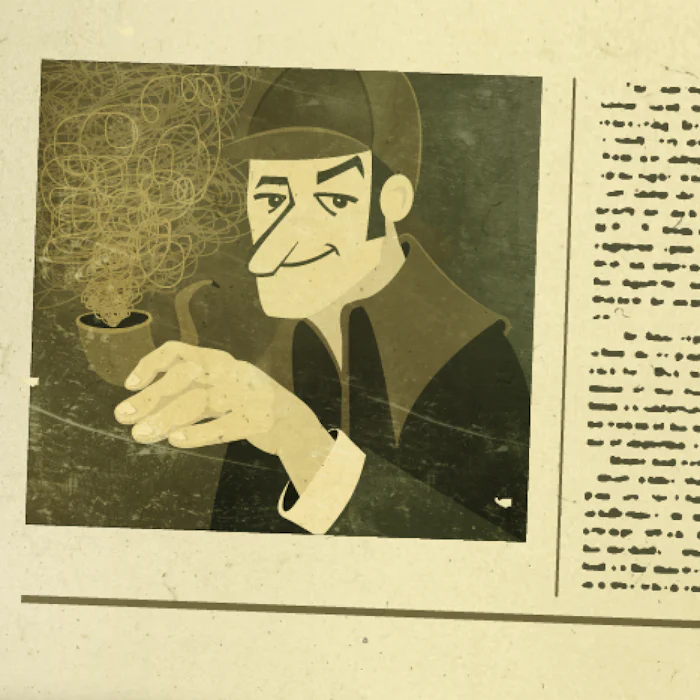
You've accessed 1 of your 2 free resources.
Get unlimited access
Discover more content
Book Insights
Extreme Teaming: Lessons in Complex, Cross-Sector Leadership
Amy Edmondson and Jean-François Harvey
Who's in the Room?: How Great Leaders Structure and Manage the Teams Around Them
Add comment
Comments (1)
priyanka ghogare

Team Management
Learn the key aspects of managing a team, from building and developing your team, to working with different types of teams, and troubleshooting common problems.
Sign-up to our newsletter
Subscribing to the Mind Tools newsletter will keep you up-to-date with our latest updates and newest resources.
Subscribe now
Business Skills
Personal Development
Leadership and Management
Member Extras
Most Popular
Newest Releases
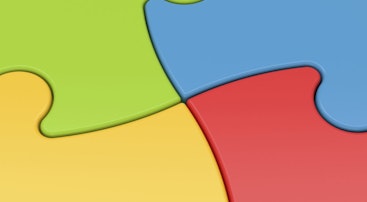
SWOT Analysis

How to Build a Strong Culture in a Distributed Team
Mind Tools Store
About Mind Tools Content
Discover something new today
Top tips for delegating.
Delegate work to your team members effectively with these top tips
Ten Dos and Don'ts of Change Conversations
Tips for tackling discussions about change
How Emotionally Intelligent Are You?
Boosting Your People Skills
Self-Assessment
What's Your Leadership Style?
Learn About the Strengths and Weaknesses of the Way You Like to Lead
Recommended for you
Starting a new job: three tips for success.
Taking the stress out of settling in
Business Operations and Process Management
Strategy Tools
Customer Service
Business Ethics and Values
Handling Information and Data
Project Management
Knowledge Management
Self-Development and Goal Setting
Time Management
Presentation Skills
Learning Skills
Career Skills
Communication Skills
Negotiation, Persuasion and Influence
Working With Others
Difficult Conversations
Creativity Tools
Self-Management
Work-Life Balance
Stress Management and Wellbeing
Coaching and Mentoring
Change Management
Managing Conflict
Delegation and Empowerment
Performance Management
Leadership Skills
Developing Your Team
Talent Management
Problem Solving
Decision Making
Member Podcast
41+ Critical Thinking Examples (Definition + Practices)

Critical thinking is an essential skill in our information-overloaded world, where figuring out what is fact and fiction has become increasingly challenging.
But why is critical thinking essential? Put, critical thinking empowers us to make better decisions, challenge and validate our beliefs and assumptions, and understand and interact with the world more effectively and meaningfully.
Critical thinking is like using your brain's "superpowers" to make smart choices. Whether it's picking the right insurance, deciding what to do in a job, or discussing topics in school, thinking deeply helps a lot. In the next parts, we'll share real-life examples of when this superpower comes in handy and give you some fun exercises to practice it.
Critical Thinking Process Outline

Critical thinking means thinking clearly and fairly without letting personal feelings get in the way. It's like being a detective, trying to solve a mystery by using clues and thinking hard about them.
It isn't always easy to think critically, as it can take a pretty smart person to see some of the questions that aren't being answered in a certain situation. But, we can train our brains to think more like puzzle solvers, which can help develop our critical thinking skills.
Here's what it looks like step by step:
Spotting the Problem: It's like discovering a puzzle to solve. You see that there's something you need to figure out or decide.
Collecting Clues: Now, you need to gather information. Maybe you read about it, watch a video, talk to people, or do some research. It's like getting all the pieces to solve your puzzle.
Breaking It Down: This is where you look at all your clues and try to see how they fit together. You're asking questions like: Why did this happen? What could happen next?
Checking Your Clues: You want to make sure your information is good. This means seeing if what you found out is true and if you can trust where it came from.
Making a Guess: After looking at all your clues, you think about what they mean and come up with an answer. This answer is like your best guess based on what you know.
Explaining Your Thoughts: Now, you tell others how you solved the puzzle. You explain how you thought about it and how you answered.
Checking Your Work: This is like looking back and seeing if you missed anything. Did you make any mistakes? Did you let any personal feelings get in the way? This step helps make sure your thinking is clear and fair.
And remember, you might sometimes need to go back and redo some steps if you discover something new. If you realize you missed an important clue, you might have to go back and collect more information.
Critical Thinking Methods
Just like doing push-ups or running helps our bodies get stronger, there are special exercises that help our brains think better. These brain workouts push us to think harder, look at things closely, and ask many questions.
It's not always about finding the "right" answer. Instead, it's about the journey of thinking and asking "why" or "how." Doing these exercises often helps us become better thinkers and makes us curious to know more about the world.
Now, let's look at some brain workouts to help us think better:
1. "What If" Scenarios
Imagine crazy things happening, like, "What if there was no internet for a month? What would we do?" These games help us think of new and different ideas.
Pick a hot topic. Argue one side of it and then try arguing the opposite. This makes us see different viewpoints and think deeply about a topic.
3. Analyze Visual Data
Check out charts or pictures with lots of numbers and info but no explanations. What story are they telling? This helps us get better at understanding information just by looking at it.
4. Mind Mapping
Write an idea in the center and then draw lines to related ideas. It's like making a map of your thoughts. This helps us see how everything is connected.
There's lots of mind-mapping software , but it's also nice to do this by hand.
5. Weekly Diary
Every week, write about what happened, the choices you made, and what you learned. Writing helps us think about our actions and how we can do better.
6. Evaluating Information Sources
Collect stories or articles about one topic from newspapers or blogs. Which ones are trustworthy? Which ones might be a little biased? This teaches us to be smart about where we get our info.
There are many resources to help you determine if information sources are factual or not.
7. Socratic Questioning
This way of thinking is called the Socrates Method, named after an old-time thinker from Greece. It's about asking lots of questions to understand a topic. You can do this by yourself or chat with a friend.
Start with a Big Question:
"What does 'success' mean?"
Dive Deeper with More Questions:
"Why do you think of success that way?" "Do TV shows, friends, or family make you think that?" "Does everyone think about success the same way?"
"Can someone be a winner even if they aren't rich or famous?" "Can someone feel like they didn't succeed, even if everyone else thinks they did?"
Look for Real-life Examples:
"Who is someone you think is successful? Why?" "Was there a time you felt like a winner? What happened?"
Think About Other People's Views:
"How might a person from another country think about success?" "Does the idea of success change as we grow up or as our life changes?"
Think About What It Means:
"How does your idea of success shape what you want in life?" "Are there problems with only wanting to be rich or famous?"
Look Back and Think:
"After talking about this, did your idea of success change? How?" "Did you learn something new about what success means?"

8. Six Thinking Hats
Edward de Bono came up with a cool way to solve problems by thinking in six different ways, like wearing different colored hats. You can do this independently, but it might be more effective in a group so everyone can have a different hat color. Each color has its way of thinking:
White Hat (Facts): Just the facts! Ask, "What do we know? What do we need to find out?"
Red Hat (Feelings): Talk about feelings. Ask, "How do I feel about this?"
Black Hat (Careful Thinking): Be cautious. Ask, "What could go wrong?"
Yellow Hat (Positive Thinking): Look on the bright side. Ask, "What's good about this?"
Green Hat (Creative Thinking): Think of new ideas. Ask, "What's another way to look at this?"
Blue Hat (Planning): Organize the talk. Ask, "What should we do next?"
When using this method with a group:
- Explain all the hats.
- Decide which hat to wear first.
- Make sure everyone switches hats at the same time.
- Finish with the Blue Hat to plan the next steps.
9. SWOT Analysis
SWOT Analysis is like a game plan for businesses to know where they stand and where they should go. "SWOT" stands for Strengths, Weaknesses, Opportunities, and Threats.
There are a lot of SWOT templates out there for how to do this visually, but you can also think it through. It doesn't just apply to businesses but can be a good way to decide if a project you're working on is working.
Strengths: What's working well? Ask, "What are we good at?"
Weaknesses: Where can we do better? Ask, "Where can we improve?"
Opportunities: What good things might come our way? Ask, "What chances can we grab?"
Threats: What challenges might we face? Ask, "What might make things tough for us?"
Steps to do a SWOT Analysis:
- Goal: Decide what you want to find out.
- Research: Learn about your business and the world around it.
- Brainstorm: Get a group and think together. Talk about strengths, weaknesses, opportunities, and threats.
- Pick the Most Important Points: Some things might be more urgent or important than others.
- Make a Plan: Decide what to do based on your SWOT list.
- Check Again Later: Things change, so look at your SWOT again after a while to update it.
Now that you have a few tools for thinking critically, let’s get into some specific examples.
Everyday Examples
Life is a series of decisions. From the moment we wake up, we're faced with choices – some trivial, like choosing a breakfast cereal, and some more significant, like buying a home or confronting an ethical dilemma at work. While it might seem that these decisions are disparate, they all benefit from the application of critical thinking.
10. Deciding to buy something
Imagine you want a new phone. Don't just buy it because the ad looks cool. Think about what you need in a phone. Look up different phones and see what people say about them. Choose the one that's the best deal for what you want.
11. Deciding what is true
There's a lot of news everywhere. Don't believe everything right away. Think about why someone might be telling you this. Check if what you're reading or watching is true. Make up your mind after you've looked into it.
12. Deciding when you’re wrong
Sometimes, friends can have disagreements. Don't just get mad right away. Try to see where they're coming from. Talk about what's going on. Find a way to fix the problem that's fair for everyone.
13. Deciding what to eat
There's always a new diet or exercise that's popular. Don't just follow it because it's trendy. Find out if it's good for you. Ask someone who knows, like a doctor. Make choices that make you feel good and stay healthy.
14. Deciding what to do today
Everyone is busy with school, chores, and hobbies. Make a list of things you need to do. Decide which ones are most important. Plan your day so you can get things done and still have fun.
15. Making Tough Choices
Sometimes, it's hard to know what's right. Think about how each choice will affect you and others. Talk to people you trust about it. Choose what feels right in your heart and is fair to others.
16. Planning for the Future
Big decisions, like where to go to school, can be tricky. Think about what you want in the future. Look at the good and bad of each choice. Talk to people who know about it. Pick what feels best for your dreams and goals.

Job Examples
17. solving problems.
Workers brainstorm ways to fix a machine quickly without making things worse when a machine breaks at a factory.
18. Decision Making
A store manager decides which products to order more of based on what's selling best.
19. Setting Goals
A team leader helps their team decide what tasks are most important to finish this month and which can wait.
20. Evaluating Ideas
At a team meeting, everyone shares ideas for a new project. The group discusses each idea's pros and cons before picking one.

21. Handling Conflict
Two workers disagree on how to do a job. Instead of arguing, they talk calmly, listen to each other, and find a solution they both like.
22. Improving Processes
A cashier thinks of a faster way to ring up items so customers don't have to wait as long.
23. Asking Questions
Before starting a big task, an employee asks for clear instructions and checks if they have the necessary tools.
24. Checking Facts
Before presenting a report, someone double-checks all their information to make sure there are no mistakes.
25. Planning for the Future
A business owner thinks about what might happen in the next few years, like new competitors or changes in what customers want, and makes plans based on those thoughts.
26. Understanding Perspectives
A team is designing a new toy. They think about what kids and parents would both like instead of just what they think is fun.
School Examples
27. researching a topic.
For a history project, a student looks up different sources to understand an event from multiple viewpoints.
28. Debating an Issue
In a class discussion, students pick sides on a topic, like school uniforms, and share reasons to support their views.
29. Evaluating Sources
While writing an essay, a student checks if the information from a website is trustworthy or might be biased.
30. Problem Solving in Math
When stuck on a tricky math problem, a student tries different methods to find the answer instead of giving up.
31. Analyzing Literature
In English class, students discuss why a character in a book made certain choices and what those decisions reveal about them.
32. Testing a Hypothesis
For a science experiment, students guess what will happen and then conduct tests to see if they're right or wrong.
33. Giving Peer Feedback
After reading a classmate's essay, a student offers suggestions for improving it.
34. Questioning Assumptions
In a geography lesson, students consider why certain countries are called "developed" and what that label means.
35. Designing a Study
For a psychology project, students plan an experiment to understand how people's memories work and think of ways to ensure accurate results.
36. Interpreting Data
In a science class, students look at charts and graphs from a study, then discuss what the information tells them and if there are any patterns.
Critical Thinking Puzzles

Not all scenarios will have a single correct answer that can be figured out by thinking critically. Sometimes we have to think critically about ethical choices or moral behaviors.
Here are some mind games and scenarios you can solve using critical thinking. You can see the solution(s) at the end of the post.
37. The Farmer, Fox, Chicken, and Grain Problem
A farmer is at a riverbank with a fox, a chicken, and a grain bag. He needs to get all three items across the river. However, his boat can only carry himself and one of the three items at a time.
Here's the challenge:
- If the fox is left alone with the chicken, the fox will eat the chicken.
- If the chicken is left alone with the grain, the chicken will eat the grain.
How can the farmer get all three items across the river without any item being eaten?
38. The Rope, Jar, and Pebbles Problem
You are in a room with two long ropes hanging from the ceiling. Each rope is just out of arm's reach from the other, so you can't hold onto one rope and reach the other simultaneously.
Your task is to tie the two rope ends together, but you can't move the position where they hang from the ceiling.
You are given a jar full of pebbles. How do you complete the task?
39. The Two Guards Problem
Imagine there are two doors. One door leads to certain doom, and the other leads to freedom. You don't know which is which.
In front of each door stands a guard. One guard always tells the truth. The other guard always lies. You don't know which guard is which.
You can ask only one question to one of the guards. What question should you ask to find the door that leads to freedom?
40. The Hourglass Problem
You have two hourglasses. One measures 7 minutes when turned over, and the other measures 4 minutes. Using just these hourglasses, how can you time exactly 9 minutes?
41. The Lifeboat Dilemma
Imagine you're on a ship that's sinking. You get on a lifeboat, but it's already too full and might flip over.
Nearby in the water, five people are struggling: a scientist close to finding a cure for a sickness, an old couple who've been together for a long time, a mom with three kids waiting at home, and a tired teenager who helped save others but is now in danger.
You can only save one person without making the boat flip. Who would you choose?
42. The Tech Dilemma
You work at a tech company and help make a computer program to help small businesses. You're almost ready to share it with everyone, but you find out there might be a small chance it has a problem that could show users' private info.
If you decide to fix it, you must wait two more months before sharing it. But your bosses want you to share it now. What would you do?
43. The History Mystery
Dr. Amelia is a history expert. She's studying where a group of people traveled long ago. She reads old letters and documents to learn about it. But she finds some letters that tell a different story than what most people believe.
If she says this new story is true, it could change what people learn in school and what they think about history. What should she do?
The Role of Bias in Critical Thinking
Have you ever decided you don’t like someone before you even know them? Or maybe someone shared an idea with you that you immediately loved without even knowing all the details.
This experience is called bias, which occurs when you like or dislike something or someone without a good reason or knowing why. It can also take shape in certain reactions to situations, like a habit or instinct.
Bias comes from our own experiences, what friends or family tell us, or even things we are born believing. Sometimes, bias can help us stay safe, but other times it stops us from seeing the truth.
Not all bias is bad. Bias can be a mechanism for assessing our potential safety in a new situation. If we are biased to think that anything long, thin, and curled up is a snake, we might assume the rope is something to be afraid of before we know it is just a rope.
While bias might serve us in some situations (like jumping out of the way of an actual snake before we have time to process that we need to be jumping out of the way), it often harms our ability to think critically.
How Bias Gets in the Way of Good Thinking
Selective Perception: We only notice things that match our ideas and ignore the rest.
It's like only picking red candies from a mixed bowl because you think they taste the best, but they taste the same as every other candy in the bowl. It could also be when we see all the signs that our partner is cheating on us but choose to ignore them because we are happy the way we are (or at least, we think we are).
Agreeing with Yourself: This is called “ confirmation bias ” when we only listen to ideas that match our own and seek, interpret, and remember information in a way that confirms what we already think we know or believe.
An example is when someone wants to know if it is safe to vaccinate their children but already believes that vaccines are not safe, so they only look for information supporting the idea that vaccines are bad.
Thinking We Know It All: Similar to confirmation bias, this is called “overconfidence bias.” Sometimes we think our ideas are the best and don't listen to others. This can stop us from learning.
Have you ever met someone who you consider a “know it”? Probably, they have a lot of overconfidence bias because while they may know many things accurately, they can’t know everything. Still, if they act like they do, they show overconfidence bias.
There's a weird kind of bias similar to this called the Dunning Kruger Effect, and that is when someone is bad at what they do, but they believe and act like they are the best .
Following the Crowd: This is formally called “groupthink”. It's hard to speak up with a different idea if everyone agrees. But this can lead to mistakes.
An example of this we’ve all likely seen is the cool clique in primary school. There is usually one person that is the head of the group, the “coolest kid in school”, and everyone listens to them and does what they want, even if they don’t think it’s a good idea.
How to Overcome Biases
Here are a few ways to learn to think better, free from our biases (or at least aware of them!).
Know Your Biases: Realize that everyone has biases. If we know about them, we can think better.
Listen to Different People: Talking to different kinds of people can give us new ideas.
Ask Why: Always ask yourself why you believe something. Is it true, or is it just a bias?
Understand Others: Try to think about how others feel. It helps you see things in new ways.
Keep Learning: Always be curious and open to new information.

In today's world, everything changes fast, and there's so much information everywhere. This makes critical thinking super important. It helps us distinguish between what's real and what's made up. It also helps us make good choices. But thinking this way can be tough sometimes because of biases. These are like sneaky thoughts that can trick us. The good news is we can learn to see them and think better.
There are cool tools and ways we've talked about, like the "Socratic Questioning" method and the "Six Thinking Hats." These tools help us get better at thinking. These thinking skills can also help us in school, work, and everyday life.
We’ve also looked at specific scenarios where critical thinking would be helpful, such as deciding what diet to follow and checking facts.
Thinking isn't just a skill—it's a special talent we improve over time. Working on it lets us see things more clearly and understand the world better. So, keep practicing and asking questions! It'll make you a smarter thinker and help you see the world differently.
Critical Thinking Puzzles (Solutions)
The farmer, fox, chicken, and grain problem.
- The farmer first takes the chicken across the river and leaves it on the other side.
- He returns to the original side and takes the fox across the river.
- After leaving the fox on the other side, he returns the chicken to the starting side.
- He leaves the chicken on the starting side and takes the grain bag across the river.
- He leaves the grain with the fox on the other side and returns to get the chicken.
- The farmer takes the chicken across, and now all three items -- the fox, the chicken, and the grain -- are safely on the other side of the river.
The Rope, Jar, and Pebbles Problem
- Take one rope and tie the jar of pebbles to its end.
- Swing the rope with the jar in a pendulum motion.
- While the rope is swinging, grab the other rope and wait.
- As the swinging rope comes back within reach due to its pendulum motion, grab it.
- With both ropes within reach, untie the jar and tie the rope ends together.
The Two Guards Problem
The question is, "What would the other guard say is the door to doom?" Then choose the opposite door.
The Hourglass Problem
- Start both hourglasses.
- When the 4-minute hourglass runs out, turn it over.
- When the 7-minute hourglass runs out, the 4-minute hourglass will have been running for 3 minutes. Turn the 7-minute hourglass over.
- When the 4-minute hourglass runs out for the second time (a total of 8 minutes have passed), the 7-minute hourglass will run for 1 minute. Turn the 7-minute hourglass again for 1 minute to empty the hourglass (a total of 9 minutes passed).
The Boat and Weights Problem
Take the cat over first and leave it on the other side. Then, return and take the fish across next. When you get there, take the cat back with you. Leave the cat on the starting side and take the cat food across. Lastly, return to get the cat and bring it to the other side.
The Lifeboat Dilemma
There isn’t one correct answer to this problem. Here are some elements to consider:
- Moral Principles: What values guide your decision? Is it the potential greater good for humanity (the scientist)? What is the value of long-standing love and commitment (the elderly couple)? What is the future of young children who depend on their mothers? Or the selfless bravery of the teenager?
- Future Implications: Consider the future consequences of each choice. Saving the scientist might benefit millions in the future, but what moral message does it send about the value of individual lives?
- Emotional vs. Logical Thinking: While it's essential to engage empathy, it's also crucial not to let emotions cloud judgment entirely. For instance, while the teenager's bravery is commendable, does it make him more deserving of a spot on the boat than the others?
- Acknowledging Uncertainty: The scientist claims to be close to a significant breakthrough, but there's no certainty. How does this uncertainty factor into your decision?
- Personal Bias: Recognize and challenge any personal biases, such as biases towards age, profession, or familial status.
The Tech Dilemma
Again, there isn’t one correct answer to this problem. Here are some elements to consider:
- Evaluate the Risk: How severe is the potential vulnerability? Can it be easily exploited, or would it require significant expertise? Even if the circumstances are rare, what would be the consequences if the vulnerability were exploited?
- Stakeholder Considerations: Different stakeholders will have different priorities. Upper management might prioritize financial projections, the marketing team might be concerned about the product's reputation, and customers might prioritize the security of their data. How do you balance these competing interests?
- Short-Term vs. Long-Term Implications: While launching on time could meet immediate financial goals, consider the potential long-term damage to the company's reputation if the vulnerability is exploited. Would the short-term gains be worth the potential long-term costs?
- Ethical Implications : Beyond the financial and reputational aspects, there's an ethical dimension to consider. Is it right to release a product with a known vulnerability, even if the chances of it being exploited are low?
- Seek External Input: Consulting with cybersecurity experts outside your company might be beneficial. They could provide a more objective risk assessment and potential mitigation strategies.
- Communication: How will you communicate the decision, whatever it may be, both internally to your team and upper management and externally to your customers and potential users?
The History Mystery
Dr. Amelia should take the following steps:
- Verify the Letters: Before making any claims, she should check if the letters are actual and not fake. She can do this by seeing when and where they were written and if they match with other things from that time.
- Get a Second Opinion: It's always good to have someone else look at what you've found. Dr. Amelia could show the letters to other history experts and see their thoughts.
- Research More: Maybe there are more documents or letters out there that support this new story. Dr. Amelia should keep looking to see if she can find more evidence.
- Share the Findings: If Dr. Amelia believes the letters are true after all her checks, she should tell others. This can be through books, talks, or articles.
- Stay Open to Feedback: Some people might agree with Dr. Amelia, and others might not. She should listen to everyone and be ready to learn more or change her mind if new information arises.
Ultimately, Dr. Amelia's job is to find out the truth about history and share it. It's okay if this new truth differs from what people used to believe. History is about learning from the past, no matter the story.
Related posts:
- Experimenter Bias (Definition + Examples)
- Hasty Generalization Fallacy (31 Examples + Similar Names)
- Ad Hoc Fallacy (29 Examples + Other Names)
- Confirmation Bias (Examples + Definition)
- Equivocation Fallacy (26 Examples + Description)
Reference this article:
About The Author
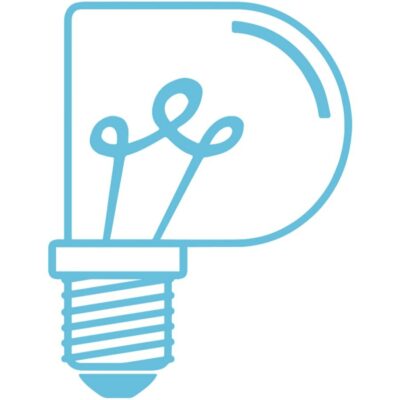
Free Personality Test
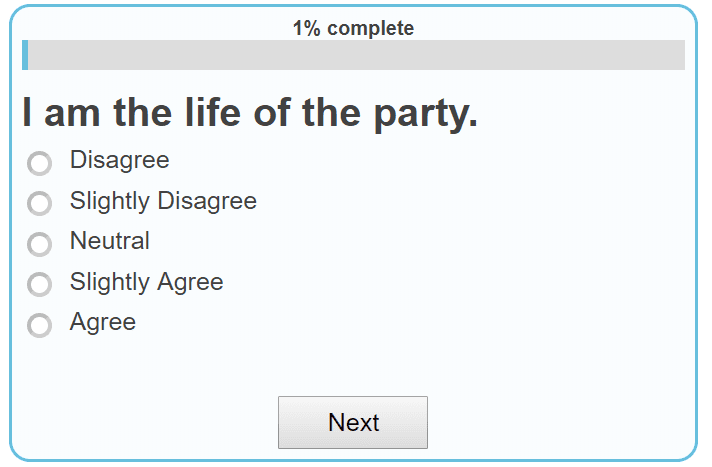
Free Memory Test
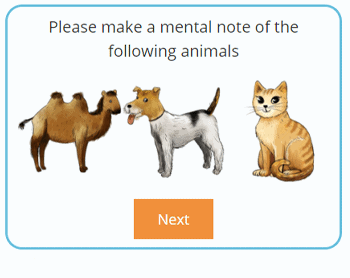
Free IQ Test
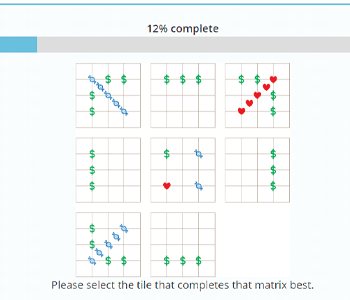
PracticalPie.com is a participant in the Amazon Associates Program. As an Amazon Associate we earn from qualifying purchases.
Follow Us On:
Youtube Facebook Instagram X/Twitter
Psychology Resources
Developmental
Personality
Relationships
Psychologists
Serial Killers
Psychology Tests
Personality Quiz
Memory Test
Depression test
Type A/B Personality Test
© PracticalPsychology. All rights reserved
Privacy Policy | Terms of Use

Critical Thinking Questions That Will Blow Your Mind
- February 10, 2018
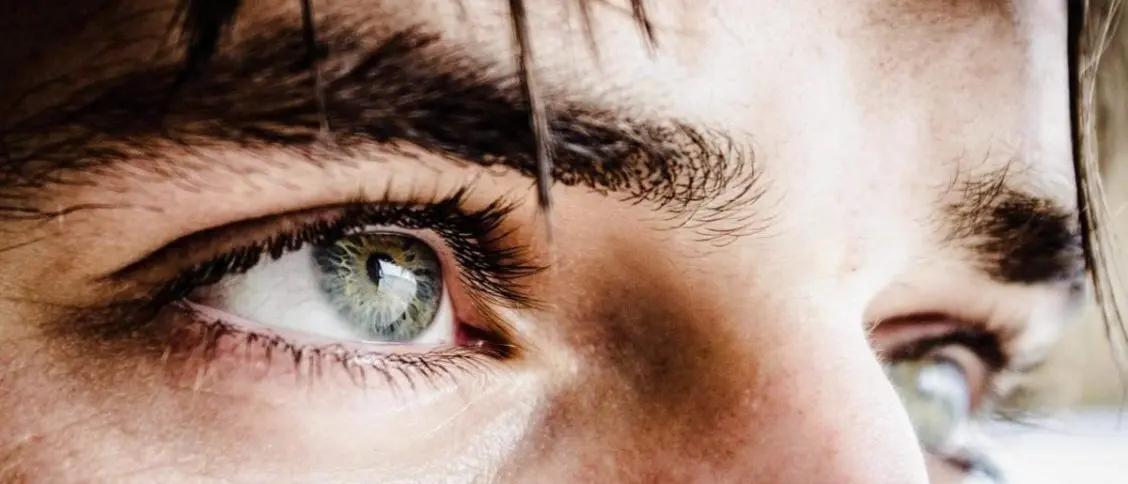
What would it be like if every decision you made didn’t involve your personal feelings or over-emotional reactions? What if your perspective was always balanced and decisions completely informed? Is it not time that you used critical thinking questions to become the more levelheaded, cool, and calm person you want to be?
Being a critical thinker enables you to take a neutral perspective on an idea or scenario and gives you the power of true choice. Being free from manipulation or emotional ties to your decision will allow you to make the most beneficial choice in any circumstance.
In critical thinking, we are taught to question everything. However, the question behind the question is; what questions should you be asking? Before we go into the critical matter of the exact questions, we should first look at the manner in which these critical thinking questions should be asked. After this article, you will be a wizard at asking critical thinking questions.
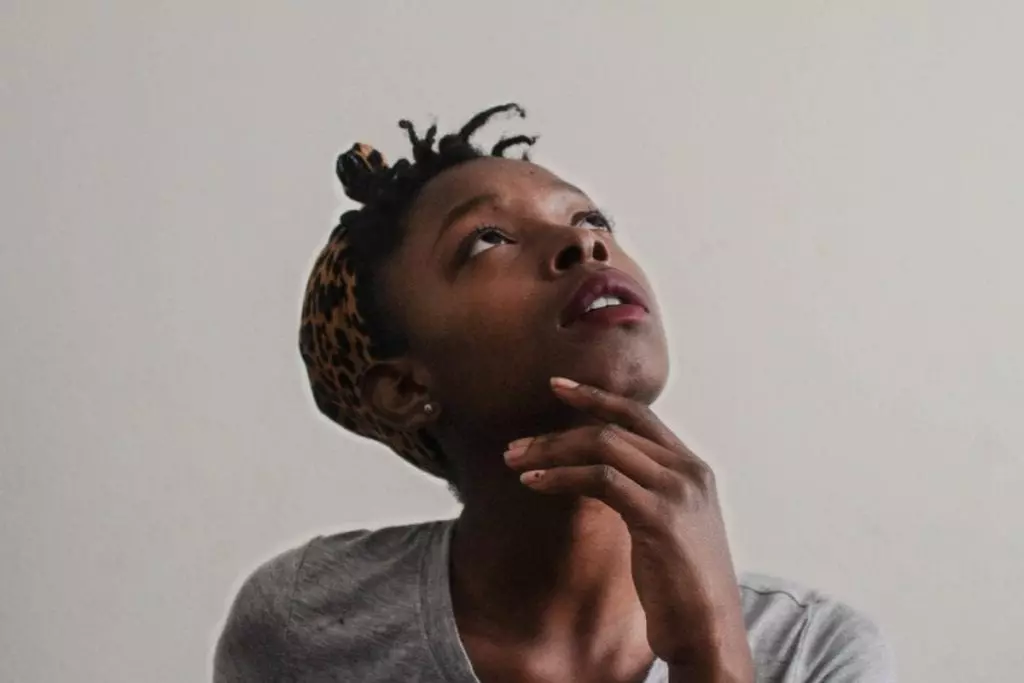
The Standard of Questions You Should Ask
Although the actual questions will be very important to critical thinking, the emphasis and purpose of these questions will determine how effective the questions will be. You must first know how to question before you know what and which critical thinking questions to ask.
1. Open-ended questioning
As a critical thinker, you cannot allow whomever or whatever you are questioning to give you the smallest amount of information for your questions. Yes or No answers can really drag out the process of getting the answers and information that you want.
Asking questions that will not only give you the answers you are looking for but also open up a heap more information than you were searching for. Ask open-ended questions such as the following:
- “What is the purpose of this scenario?” Instead of: “Is this the purpose of this scenario?”
- “What is your favorite thing about this scenario?” Instead of: “Is this your favorite thing about this scenario?”
2. Avoid leading questions
Being a critical thinker is about escaping your bias and seeing things outside of your personal perspective . It is thus very important to avoid leading the question, in an area you want it to go.
Keep your questions as neutral as possible and don’t allow any definitive language to creep into the question. Such as using the following:
- “What is your take on the healthiest diet there is?” Instead of: “Don’t you think the vegan diet is the healthiest diet?”
- “What is the condition of the country at the moment?” Instead of: “How bad is the condition of the country at the moment?”
3. Specify the boundaries of your questions
As much as leading a question can be a hindrance to what you want, so can leaving the question too open, and invite unnecessary information to be given. Critical thinking is about being objective, but it still needs a direction and focus in which you apply your critical thinking.
Make sure that you set up an accurate framework in which your questions can be answered. Being too broad makes the process of getting answers inefficient and drawn out. Try asking questions like:
- “Who is your favorite male tennis player in the United States?” Instead of: “Who is your favorite tennis player?”
- “If you could live anywhere in South East Asia, where would that be?” Instead of: “If you could live anywhere, where would that be?”
4. Funnel the questions until you get the answer you were looking for
When questions remain shallow, it is easy for the sources of information you are questioning to mislead and avoid giving you the information that you want.
Do not set up the path of questions beforehand, but rather make sure that you dig deeper after each question in the direction of information that you really want. Once you have your answer, then move back to broader questioning in order to get a better picture of the whole once again.
5. All the answers to your question must be based on facts and well supported from many different sources
Make sure that you don’t give into hearsay. Find the studies, the science, and ample testimonials before you accept the information that you have been given.
Look into many different and unrelated sources to see if the information matches up. Look at the other side of the argument and validate their claims.

Methods of Critical Thinking Questions
1. the 5 w’s and the h.
These are the absolute basics of critical thinking. The Who, What, Where, When, Why, and How are foundational questions that are taught over and over in journalism, investigation, and research.
They are the base from which every critical analysis should be created. You would apply these questions as follows:
- …would benefit?
- …would this harm?
- …is responsible?
- …has researched this before?
- …is the other perspective?
- …would be the challenges?
- …are the strengths?
- …is the key subject?
- …would this problem reside?
- …are there similar situations?
- …can more information be found?
- …can this be improved on?
- …is this acceptable and unacceptable?
- …could this be implemented?
- …would we be able to measure the results?
- …is it time to stop this action?
- …is this a problem?
- …is this relevant?
- …should this be known about?
- …is there a need for this?
- …is this different from anything else similar to it?
- …it functions?
- … is this the truth about it?
- …could it harm anyone?
2. Agenda and method questioning
These two areas of questioning may have already been covered through the 5 W’s and the H. However, it is beneficial to emphasize the angle from which this questioning comes.
The first one is questioning the agenda. This is aimed at figuring out how people could benefit from a situation or idea. This agenda can place all the information received in context.
For instance, if a company was contributing to a charity and their agenda was to improve their image against the damage done by that company, then the contributions would be much less charitable and much more about publicity.
Questions that would help clarify the agenda would be:
- What is the person or organization involved trying to accomplish?
- What issues or problems are raised by the person or organization involved?
- What data, what experiences, what evidence is given?
- Is the person or organization involved thinking about the environment?
- Is the person’s or organization’s thinking justified as far as we can see from our perspective?
- And how do they justify it from their perspective?
- How can we enter their perspective to appreciate what they have to say?
The second aspect of this is questioning the method. As a critical thinker, this makes the outcomes of every situation and idea questionable, which is exactly the point of critical thinking.
Too many times the outcome of a specific method is the focus of debate, without clarifying if that outcome has validity.
Questions that would help clarify the Method would be:
- I s the person or organization involved willing to fundamentally rethink their methods of creating a certain outcome?
- Has the person or organization involved thought about how the method will work going into the future?
- To what extent has the method been tested?
- Is there any other method that could be used to produce this outcome and what would be the implications of this method?
- Is the person or organization involved willing to allow this method to be tested?
- In what other situation has this method been used and how effective was it?
3. Inquiry process
The inquiry process is exactly that; a process. It does entail certain questions but the power of this process resides in the way the process is conducted.
This process is the standard of research and creates an order in which you can follow, uncovering the information that you seek. Although the terminology may change for each step of the process, the essence of what needs to be done remains the same.
The process is divided as follows:
- Ask (Pose Question)
- Investigate (Find Resources)
- Create (interpret/ Synthesise)
- Discuss (Report findings)
- Reflect (follow the process backward)
4. Bloom’s taxonomy
Bloom’s taxonomy was created by Dr. Benjamin Bloom , a psychologist in the 1950’s. Bloom’s work was to create a better form of learning through more focus on analysis and evaluation.
Bloom’s taxonomy is very much Maslow’s hierarchy of needs to critical thinking. The original Bloom’s taxonomy encompasses:
- What is the subject?
- When did it happen?
Comprehension:
- How would you compare the subject?
- Explain the subject in your own words?
Application
- What examples can you find of the subject?
- What approach would you use to solve the problem?
- What inference can you make from the information?
- How would you classify or categorize the subject?
- How would you compare the information?
- What was the value or importance of the information?
Creation or Synthesis
- Can you propose an alternative interpretation of the information?
- What might happen if you…?
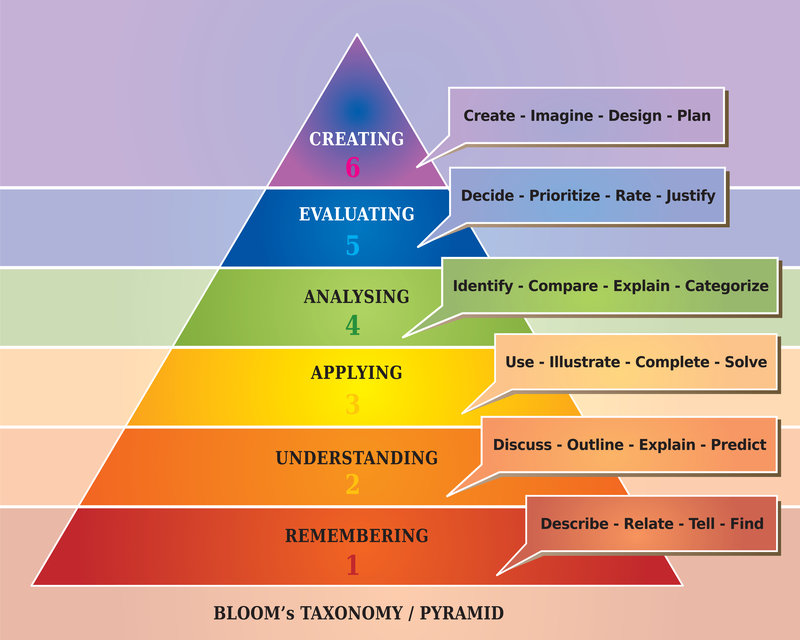
Bloom’s Taxonomy has since been revised. In 2001 a group of cognitive psychologists, curriculum theorists and instructional researchers, and testing and assessment specialists change the titles of each level to make a more dynamic approach to the system.
The titles were revised to:
- Recognizing
- Recalling
- Interpreting
- Exemplifying
- Classifying
- Summarizing
- Inferring
- Comparing
- Explaining
- Executing
- Implementing
- Differentiating
- Organizing
- Attributing
- Checking
- Critiquing
- Generating
- Planning
- Producing
In the process of the revision, the authors broke the knowledge area into its own taxonomy:
Factual Knowledge
- Knowledge of terminology
- Knowledge of specific details and elements
Conceptual Knowledge
- Knowledge of classifications and categories
- Knowledge of principles and generalizations
- Knowledge of theories, models, and structures
Procedural Knowledge
- Knowledge of subject-specific skills and algorithms
- Knowledge of subject-specific techniques and methods
- Knowledge of criteria for determining when to use appropriate procedures
Metacognitive Knowledge
- Strategic Knowledge
- Knowledge about cognitive tasks, including appropriate contextual and conditional knowledge
- Self-knowledge
If you want to know more about the reasoning behind the revision click here .
5. Integral questioning
Integral theory was created by Ken Wilber (author of A Brief History of Everything ) and has become one of the most useful structures of evaluation in this era. The integral model is a reference structure in which you can objectively see all areas of a specific subject.
This method goes hand in glove with the practice of critical thinking. Applying the method into question form will bring out the following analysis:
Quadrants: this is the evaluation of each viewpoint of a certain subject.
- What does a specific person involved think or feel about the subject?
- What studies and tests have been done on the subject?
- What do the people as a whole feel or think about the subject?
- What does the industry of the subject say on the subject?
Lines: These are the areas of understanding of factors involved in the matter.
- What are the different areas of life expressed in this subject?
- What factors are involved in the situation or subject?
- To what area of understanding does is the subject appeal to?
Levels: This deals with a hierarchical standard of a certain area of the subject.
- To what level of understanding does is a subject appeal?
- How complex or advanced is this subject?
- What standard of knowledge needs to be obtained to understand this subject?
State: This refers to a fleeting state of being in which the subject can be seen in.
- In what state of mind was the person involved in when reviewing the subject?
- In what state of mind was the person involved in when the situation occurred?
- Is the information given contextual to a certain situation?
Types: This is a division of experiences based on traits that could affect perspective.
- How would someone who is completely different from the person involved perceive the situation?
- What different types of people were involved in the situation?
- How could this subject be received differently by a different cultural reference?
Question Everything
You now possess all that you need to start becoming a critical thinker and asking critical thinking questions. The only way to engrain the above processes and questions to become a critical thinker is to practice. You might need to refer to this article consistently at first, but after time you will become a natural and healthy critical thinker.
This video may help to ignite your passion for questioning everything:
Read more on critical thinking by checking out these related articles and resources:
- How to Solve the Biggest Problems With Critical Thinking
- Critical Thinking Examples That Wil Influence the World Around You
Recommended Free Masterclass For You
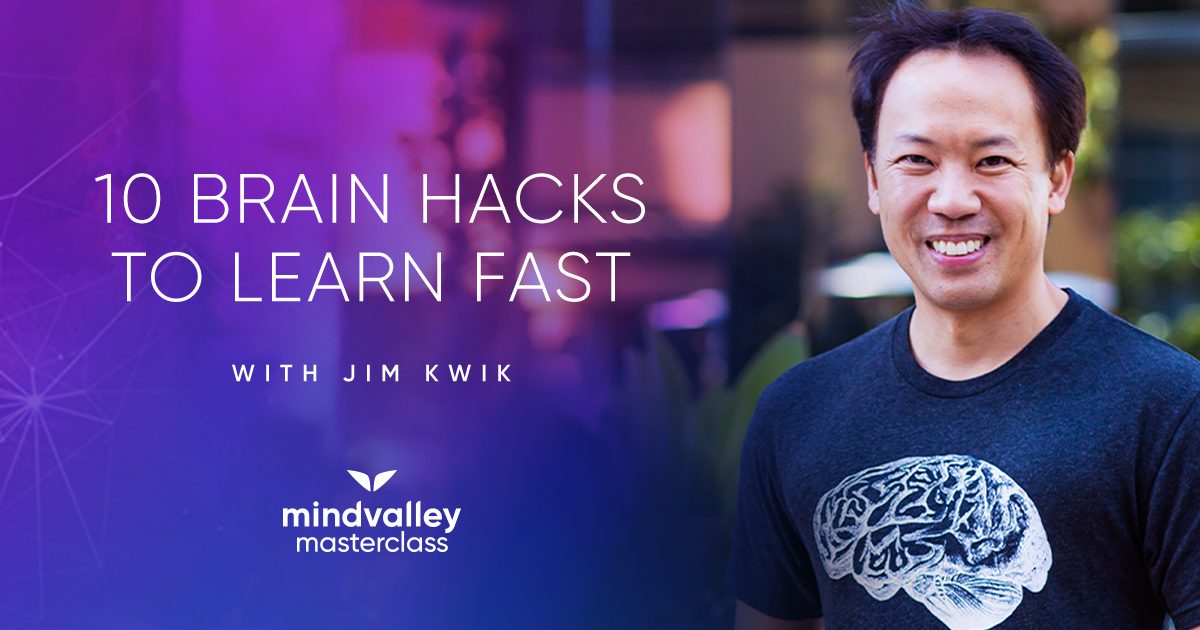
Discover Powerful Hacks to Unlock Your Superbrain to Learn Faster, Comprehend More and Forget Less
Join the foremost expert in memory improvement and brain performance, Jim Kwik, in a free masterclass that will dive into the one skill you will ever need — learning how to learn Reserve My Free Spot Now

Irina Yugay
You Might Also Like

How to Overcome Fear: 3 No-Fail Strategies to Take Back Control

How to Take Notes: 5 Methods to Help Turbocharge Your Learning

Can You REALLY Develop a Spidey Sense? Science Says Yes (And Here’s How)
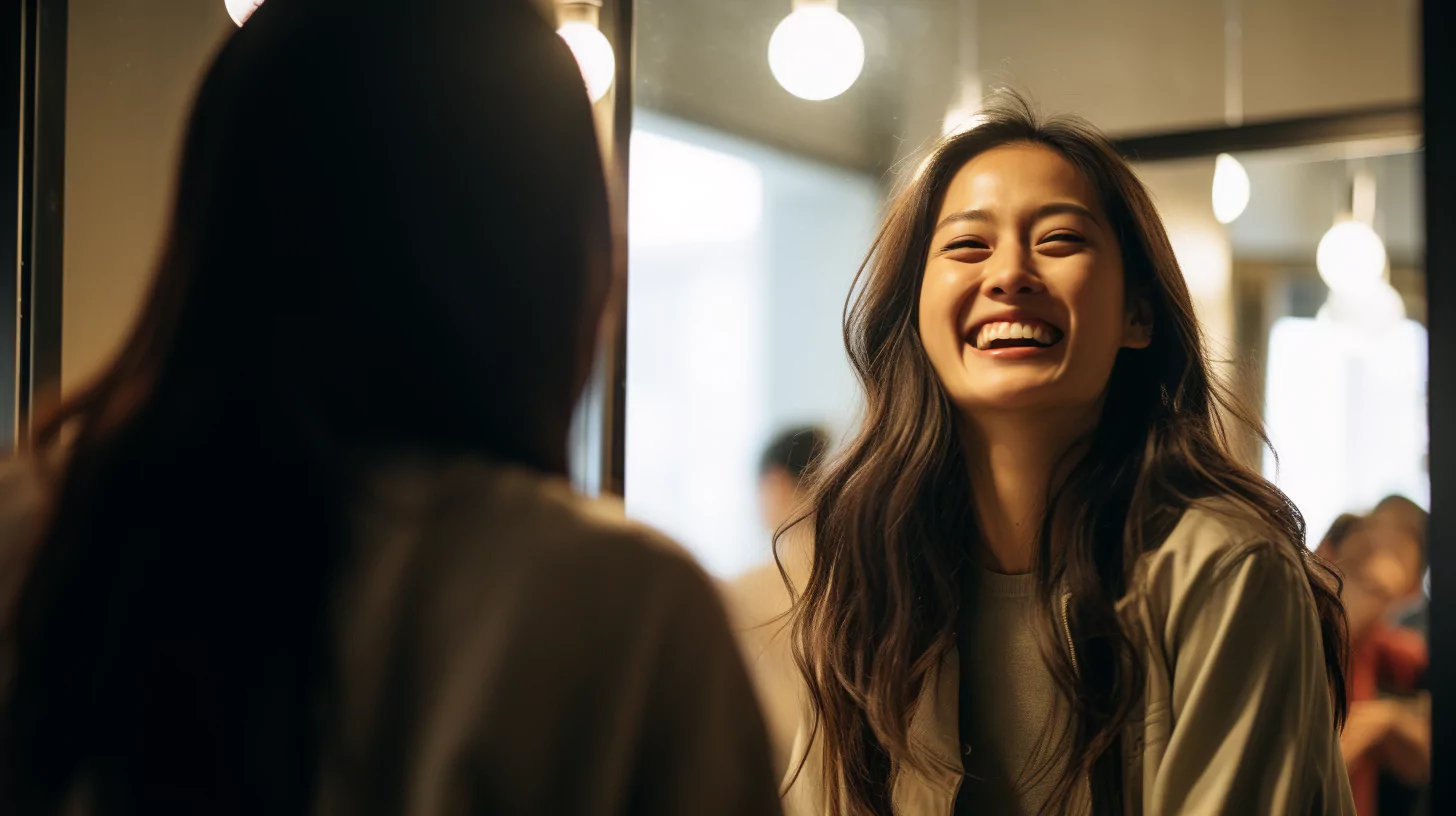
The Power of Praise: Here’s Why You Should Compliment Yourself

The Secret Sauce to Unshakeable Confidence? How to Believe in Yourself and Spark That Inner Fire

What Makes Us Morally Good: 80 Examples of Virtues
Get started.
- Try Mindvalley for Free
- Free Masterclasses
- Coaching Certifications
- Vishen Lakhiani
- The Mindvalley Show
- Partnerships
- In English 🇺🇸
- En Español 🇪🇸
- Mindvalley Events
- Mindvalley Coach
- Mindvalley For Business

Fact-Checking: Our Process
Mindvalley is committed to providing reliable and trustworthy content.
We rely heavily on evidence-based sources, including peer-reviewed studies and insights from recognized experts in various personal growth fields. Our goal is to keep the information we share both current and factual.
The Mindvalley fact-checking guidelines are based on:
- Content Foundation: Our articles build upon Mindvalley’s quest content, which are meticulously crafted and vetted by industry experts to ensure foundational credibility and reliability.
- Research and Sources: Our team delves into credible research, ensuring every piece is grounded in facts and evidence, offering a holistic view on personal growth topics.
- Continuous Updates: In the dynamic landscape of personal development, we are committed to keeping our content fresh. We often revisit and update our resources to stay abreast of the latest developments.
- External Contributions: We welcome insights from external contributors who share our passion for personal transformation and consciousness elevation.
- Product Recommendations and Affiliations: Recommendations come after thoughtful consideration and alignment with Mindvalley’s ethos, grounded in ethical choices.
To learn more about our dedication to reliable reporting, you can read our detailed editorial standards .
Critical Thinking Questions
Compare and contrast classical and operant conditioning. How are they alike? How do they differ?
What is the difference between a reflex and a learned behavior?
If the sound of your toaster popping up toast causes your mouth to water, what are the UCS, CS, and CR?
Explain how the processes of stimulus generalization and stimulus discrimination are considered opposites.
How does a neutral stimulus become a conditioned stimulus?
What is a Skinner box and what is its purpose?
What is the difference between negative reinforcement and punishment?
What is shaping and how would you use shaping to teach a dog to roll over?
What is the effect of prosocial modeling and antisocial modeling?
Cara is 17 years old. Cara’s mother and father both drink alcohol every night. They tell Cara that drinking is bad and she shouldn’t do it. Cara goes to a party where beer is being served. What do you think Cara will do? Why?
As an Amazon Associate we earn from qualifying purchases.
This book may not be used in the training of large language models or otherwise be ingested into large language models or generative AI offerings without OpenStax's permission.
Want to cite, share, or modify this book? This book uses the Creative Commons Attribution License and you must attribute OpenStax.
Access for free at https://openstax.org/books/psychology-2e/pages/1-introduction
- Authors: Rose M. Spielman, William J. Jenkins, Marilyn D. Lovett
- Publisher/website: OpenStax
- Book title: Psychology 2e
- Publication date: Apr 22, 2020
- Location: Houston, Texas
- Book URL: https://openstax.org/books/psychology-2e/pages/1-introduction
- Section URL: https://openstax.org/books/psychology-2e/pages/6-critical-thinking-questions
© Jan 6, 2024 OpenStax. Textbook content produced by OpenStax is licensed under a Creative Commons Attribution License . The OpenStax name, OpenStax logo, OpenStax book covers, OpenStax CNX name, and OpenStax CNX logo are not subject to the Creative Commons license and may not be reproduced without the prior and express written consent of Rice University.

How it works
Transform your enterprise with the scalable mindsets, skills, & behavior change that drive performance.
Explore how BetterUp connects to your core business systems.
We pair AI with the latest in human-centered coaching to drive powerful, lasting learning and behavior change.
Build leaders that accelerate team performance and engagement.
Unlock performance potential at scale with AI-powered curated growth journeys.
Build resilience, well-being and agility to drive performance across your entire enterprise.
Transform your business, starting with your sales leaders.
Unlock business impact from the top with executive coaching.
Foster a culture of inclusion and belonging.
Accelerate the performance and potential of your agencies and employees.
See how innovative organizations use BetterUp to build a thriving workforce.
Discover how BetterUp measurably impacts key business outcomes for organizations like yours.
A demo is the first step to transforming your business. Meet with us to develop a plan for attaining your goals.

- What is coaching?
Learn how 1:1 coaching works, who its for, and if it's right for you.
Accelerate your personal and professional growth with the expert guidance of a BetterUp Coach.
Types of Coaching
Navigate career transitions, accelerate your professional growth, and achieve your career goals with expert coaching.
Enhance your communication skills for better personal and professional relationships, with tailored coaching that focuses on your needs.
Find balance, resilience, and well-being in all areas of your life with holistic coaching designed to empower you.
Discover your perfect match : Take our 5-minute assessment and let us pair you with one of our top Coaches tailored just for you.

Research, expert insights, and resources to develop courageous leaders within your organization.
Best practices, research, and tools to fuel individual and business growth.
View on-demand BetterUp events and learn about upcoming live discussions.
The latest insights and ideas for building a high-performing workplace.
- BetterUp Briefing
The online magazine that helps you understand tomorrow's workforce trends, today.
Innovative research featured in peer-reviewed journals, press, and more.
Founded in 2022 to deepen the understanding of the intersection of well-being, purpose, and performance
We're on a mission to help everyone live with clarity, purpose, and passion.
Join us and create impactful change.
Read the buzz about BetterUp.
Meet the leadership that's passionate about empowering your workforce.
For Business
For Individuals
Critical thinking is the one skillset you can't afford not to master

Jump to section
What is critical thinking?
5 characteristics of critical thinking, what are critical thinking skills, and why are they important, 6 key critical thinking skills, critical thinking example in real-life, 13 ways to start thinking critically.
Whether you’re aiming to improve your performance at work or simply trying to live a more fulfilling life , you’ll need a variety of hard and soft skills to move the needle. Some skills come naturally to some people, while others need to develop them actively.
One of these skills is critical thinking. But critical thinking itself is made up of several types of skills that contribute to solving problems more effectively.
Let’s explore the different types of critical thinking skills and how you can start improving them to level up your career.
Critical thinking is the ability to analyze facts objectively and form a judgment. It is a form of emotional intelligence .
Someone with critical thinking skills can think clearly and rationally when the situation demands it. It allows them to perform problem-solving and decision-making more effectively.
As a result, you can look further than what you see at face value. You’re able to analyze what you see from a situation and gain some insight that goes further than what’s obvious to anyone from the outside.
Critical thinking also requires being able to understand the logical connection between two or more ideas or concepts. For example, a team working on a company’s pricing strategy needs to think critically about several concepts.
Both the marketing and sales teams must work together. They need to analyze how to maximize sales. But they need to do so while also meeting profit goals. It’s important to understand the logical connection between sales strategy and marketing logistics. It’s the only way to get a good outcome.
Critical thinking is different from creative thinking . Creative thinking is the ability to generate brand new, innovative ideas. On the other hand, critical thinking requires you to carefully and logically analyze what information is given to you. Both are important to maximize results in any given situation.

What defines critical thinking? How does it affect the decision-making process? Here are five characteristics that make up the ability to think critically.
1. Dispositions
Critical thinkers have specific traits that allow them to think the way they do. Some people are predisposed to these traits, while others need to develop them actively.
Some of these dispositions include:
- Open-mindedness
- Respecting evidence and reasoning
- Being able to consider different perspectives and points of view: in other words, having cognitive flexibility
- Not being stuck in one position
- Clarity and precision
2. Argument
Good critical thinkers need to make solid arguments.
An argument is making a statement aided by supporting evidence. It’s important to use well thought-out arguments when you’re in a constructive conflict . When analyzing a situation critically, you’ll need to make several arguments in your own mind to come to a judgment.
3. Reasoning
In addition to arguments, critical thinking also requires inferring conclusions. From the facts and arguments presented to you, you need to use reasoning skills to come to a logical conclusion.
This conclusion will determine the best course of action to take.

4. Criteria
Critical thinking is sometimes a matter of discerning truth from fiction. Not all facts presented to you may have the same level of truth. Certain conditions need to be met for something to be considered believable, and a critical thinker needs to be able to understand that.
5. Metacognition
Metacognition is the ability to think about your own thinking. Critical thinkers should be able to analyze their thoughts so that they can judge whether or not they’ve thought everything through. This helps them come up with better hypotheses.
The critical thinking skills definition is: soft skills that help you in the critical thinking process. Developing these skills can improve your ability to think critically.
Critical thinking skills are considered one of many durable skills in the workplace . Many of these are soft skills that are also useful in other situations.
According to research by America Succeeds, critical thinking is in the top five most requested durable skills in job postings. Those top five durable skills get requested 2.6x more often than the top five hard skills. This goes to show that soft skills like critical thinking skills are in demand in the workplace.
Critical thinking skills are important for several reasons. These include helping you work independently and solve problems . Not all positions require ongoing critical thinking. But, those skills definitely matter to anyone who wants to uplevel their career. And even the most easygoing positions require at least some level of critical thinking skills.
For example, working as an accountant can be straightforward in most cases. But it may require critical thinking skills. For instance, what if certain expenses aren’t easily distributed in simple categories? Without critical thinking skills, an accountant will struggle to work independently and solve problems on their own.
Critical thinking abilities also matter in everyday life. Having a foundation for critical thinking can help you analyze several possible solutions for problems that pop up in the home. It can also help you:
- Analyze different viewpoints
- Come up with the best solution for complex problems
- Become a better learner
The key critical thinking skills are identifying biases, inference, research, identification, curiosity, and judging relevance.
Let’s explore these six critical thinking skills you should learn and why they’re so important to the critical thinking process.
1. Identifying biases
This critical thinking skill is necessary for metacognition, which is the fifth characteristic of critical thinking. It involves knowing when others have a cognitive bias and when you have one yourself.
Biases can influence how someone understands the facts presented to them. But when you’re aware of those biases, you can question yourself on those biases and consider other points of view.
Identifying biases is especially important for people who make hiring decisions. That’s because biases against groups of minorities can lead to inequalities in the workplace when not identified.
For example, imagine a hiring manager comparing two resumes. Their gut feeling could guide them to discount one of the resumes due to a bias against the opposite gender. But let’s say this hiring manager realizes they have this bias. They can then question themselves on whether or not this bias is influencing their judgment.
2. Inference
Inference is the ability to draw conclusions based on the information you have. Without inference, it can be difficult to take action once you’ve analyzed the facts presented to you. Processing information is key to coming up with a reasoned judgment.
For example, let’s go back to the accountant struggling to assign the correct category to a business expense. They can analyze other similar situations and infer the most logical category based on that information.
3. Research
Before you analyze facts and infer a conclusion, you need to find out what those facts are. Researching skills allow you to discover facts and figures to make an argument.
Not all situations will have the required information available to you. Researching skills are necessary to dig into a situation and gather the information you need to think critically.
Some situations don’t require further research. For example, a first responder who arrives on the scene of an automobile accident won’t perform further research. They’ll have to analyze what they see in front of them and decide which injuries are the most urgent to care for.
On the other hand, someone performing a market analysis will need to research competitors and gather information before coming up with an opinion.
4. Identification
Identification is different from inference and research. It involves being able to identify a problem but also what’s influencing that problem.
In short, identification is necessary for someone to realize that they need to think critically about something. Without proper identification skills, it will be difficult for someone to know when it’s time to analyze a situation.
For example, let’s say you’re entering numbers in a spreadsheet. The numbers aren’t coming out as they usually do. Without identification skills, you could easily keep going without realizing there’s an issue. But when you identify what’s going on, you can see that something is broken in the spreadsheet’s formula.
Only once you identify the fact that the formula is broken can you start analyzing what’s going on to solve the issue.
5. Curiosity
Don’t be afraid to question everything and explore what you’re curious about. That’s because intellectual curiosity is a valuable skill, especially when it comes to critical thinking.
One way to practice curiosity is to adopt a beginner’s mindset . When you come into every situation with the mindset of a beginner, you’re able to keep an open mind. You’ll be able to perceive things you may not have noticed when keeping your mind closed.
6. Judging relevance
Not all information is equally pertinent. In order to make a critical judgment, it’s important to be able to judge the relevance of the information you have.
Take, for instance, basic online researching skills. You have access to a plethora of information on virtually every topic imaginable. But performing online research requires you to constantly judge the relevance of what you see.
Without judging relevance, you’d spend too much time on details that don’t matter as much for the final desired outcome. But when you’re able to discern what’s most pertinent, you can give that information more weight as you’re thinking critically.

So what would critical thinking skills look like in a real-life situation?
Let’s imagine you’re working in software quality assurance (QA) as a team lead. But every time your team needs to enter bug regression, everyone gets bottlenecked because you must manually populate the spreadsheet used for the regression. While you do this task, your team cannot be productive without you.
This process happens once a week and easily wastes half an hour for each team member.
First, you must identify what’s going on. The team gets bottlenecked because only you, as the team lead, can access the information required to fill in the regression spreadsheet.
Next, you can research information. You can inquire to higher-ups about the reason why only you have access to this information. You can also speak to other teams about what potential solutions they’ve come up with to solve this problem.
Once you’ve done your research, it’s time to analyze the information and judge relevance. Some teams have solutions that don’t apply to you, so that information isn’t relevant anymore.
Figure out if there are any personal biases before you analyze your information.
For example, it’s possible that you don’t get along with one of the other team leads. As a result, you could discount the information they’ve given you. But by identifying this bias, you can look past your personal opinion of this person and see how valuable their solution is.
Based on what you’ve analyzed, it’s time to brainstorm and come up with a solution. You realize that creating a simple, automated script will save your team’s time. And it will do so without consuming too many resources from the engineering department.
Next, present your solution to your manager. Explain how you came to this conclusion.
Now, let’s say your spreadsheet automation solution is approved. It’s important to go back and analyze what happens after implementing the solution. But only do this once the spreadsheet has been in place for long enough to gather plenty of information.
Here’s an example. You could realize that the solution did solve the bottleneck. But, the script also slows down the spreadsheet and makes it difficult to work with. This would require you to go back to the drawing board and start the process all over again.
Want to start improving your own critical thinking skill sets? Here’s how you can improve critical thinking skills using 13 techniques:
- Play games that require critical thinking skills
- Ask more questions, even basic ones
- Question your assumptions
- Develop your technical skills so that you can identify problems more easily
- Find ways to solve more problems (at work and at home)
- Become aware of your mental processes, like the availability heuristic
- Think for yourself: don’t adopt other people’s opinions without questioning them first
- Seek out diversity of thought
- Start developing foresight
- Try active listening
- Weigh the consequences of different actions before you act
- Seek a mentor who can help you develop these skills
- Get professional coaching

How to improve your critical thinking skills
Critical thinking skills aren’t always easy to develop. But it’s much easier to start thinking critically when you have someone to work with. Try a custom BetterUp demo to see how a coach can help you develop your critical thinking skills today.
Transform your life
Make meaningful changes and become the best version of yourself. BetterUp's professional Coaches are here to support your personal growth journey.
Maggie Wooll, MBA
Maggie Wooll is a researcher, author, and speaker focused on the evolving future of work. Formerly the lead researcher at the Deloitte Center for the Edge, she holds a Bachelor of Science in Education from Princeton University and an MBA from the University of Virginia Darden School of Business. Maggie is passionate about creating better work and greater opportunities for all.
How to develop critical thinking skills
What’s convergent thinking how to be a better problem-solver, why self-management is key to success and how to improve yours, the most critical skills for leaders are fundamentally human, the new skill set needed to succeed in the hybrid workplace, how intrapersonal skills shape teams, plus 5 ways to build them, how to be optimistic, building strength for tomorrow: new president of betterup care™ on extending proactive mental health across the enterprise, the 5 business communication skills worth perfecting, similar articles, what is lateral thinking 7 techniques to encourage creative ideas, 9 cognitive skill examples and how to improve them, how to pitch ideas: 8 tips to captivate any audience, what is creative thinking and why does it matter, what are analytical skills examples and how to level up, how divergent thinking can drive your creativity, how the minto pyramid principle can enhance your communication skills, discover 5 decision models and when to use them, stay connected with betterup, get our newsletter, event invites, plus product insights and research..
3100 E 5th Street, Suite 350 Austin, TX 78702
- Platform Overview
- Integrations
- Powered by AI
- BetterUp Lead
- BetterUp Manage™
- BetterUp Care™
- Sales Performance
- Diversity & Inclusion
- Case Studies
- Why BetterUp?
- About Coaching
- Find your Coach
- Career Coaching
- Communication Coaching
- Life Coaching
- News and Press
- Leadership Team
- Become a BetterUp Coach
- BetterUp Labs
- Center for Purpose & Performance
- Leadership Training
- Business Coaching
- Contact Support
- Contact Sales
- Privacy Policy
- Acceptable Use Policy
- Trust & Security
- Cookie Preferences
Critical thinking definition

Critical thinking, as described by Oxford Languages, is the objective analysis and evaluation of an issue in order to form a judgement.
Active and skillful approach, evaluation, assessment, synthesis, and/or evaluation of information obtained from, or made by, observation, knowledge, reflection, acumen or conversation, as a guide to belief and action, requires the critical thinking process, which is why it's often used in education and academics.
Some even may view it as a backbone of modern thought.
However, it's a skill, and skills must be trained and encouraged to be used at its full potential.
People turn up to various approaches in improving their critical thinking, like:
- Developing technical and problem-solving skills
- Engaging in more active listening
- Actively questioning their assumptions and beliefs
- Seeking out more diversity of thought
- Opening up their curiosity in an intellectual way etc.
Is critical thinking useful in writing?
Critical thinking can help in planning your paper and making it more concise, but it's not obvious at first. We carefully pinpointed some the questions you should ask yourself when boosting critical thinking in writing:
- What information should be included?
- Which information resources should the author look to?
- What degree of technical knowledge should the report assume its audience has?
- What is the most effective way to show information?
- How should the report be organized?
- How should it be designed?
- What tone and level of language difficulty should the document have?
Usage of critical thinking comes down not only to the outline of your paper, it also begs the question: How can we use critical thinking solving problems in our writing's topic?
Let's say, you have a Powerpoint on how critical thinking can reduce poverty in the United States. You'll primarily have to define critical thinking for the viewers, as well as use a lot of critical thinking questions and synonyms to get them to be familiar with your methods and start the thinking process behind it.
Are there any services that can help me use more critical thinking?
We understand that it's difficult to learn how to use critical thinking more effectively in just one article, but our service is here to help.
We are a team specializing in writing essays and other assignments for college students and all other types of customers who need a helping hand in its making. We cover a great range of topics, offer perfect quality work, always deliver on time and aim to leave our customers completely satisfied with what they ordered.
The ordering process is fully online, and it goes as follows:
- Select the topic and the deadline of your essay.
- Provide us with any details, requirements, statements that should be emphasized or particular parts of the essay writing process you struggle with.
- Leave the email address, where your completed order will be sent to.
- Select your prefered payment type, sit back and relax!
With lots of experience on the market, professionally degreed essay writers , online 24/7 customer support and incredibly low prices, you won't find a service offering a better deal than ours.
The effect of a STEM integrated curriculum on design thinking dispositions in middle school students
- Published: 13 April 2024
Cite this article
- Dina Thomason ORCID: orcid.org/0000-0002-4275-7912 1 &
- Pei-Ling Hsu ORCID: orcid.org/0000-0002-1870-5717 1
STEM, the integration of science, technology, engineering, and mathematics subjects is a popular topic as schools grapple with how to best prepare students for an ever-evolving society. As societal and technological challenges emerge, design thinking has been lauded as a method to enable people to help tackle those challenges. The steps of the design thinking process, empathize, define, ideate, prototype and test align with engineering design and can be used as a problem-solving method in classrooms to help promote creativity, critical thinking, and collaboration. The purpose of this explanatory sequential mixed methods study was to better understand if a STEM integrated curriculum helps promote design thinking in middle schoolers. The study compared two middle school groups, one that uses an integrated STEM curriculum and one that does not. Quantitative data was collected using the design thinking disposition survey through pre and post testing. Qualitative data was collected through free response questions and student and teacher interviews. There was no difference found in the change of design thinking dispositions between students at the two schools, however both groups scored lowest on the design thinking disposition of prototype. Free response questions showed that students at the STEM integrated school perceived an increased ability to design solutions to problems. Student and teacher interviews highlighted benefits of using a STEM integrated curriculum including providing collaborative opportunities to solve hands-on, open-ended problems. How a STEM integrated curriculum can develop design thinking should continue to be examined.
This is a preview of subscription content, log in via an institution to check access.
Access this article
Price includes VAT (Russian Federation)
Instant access to the full article PDF.
Rent this article via DeepDyve
Institutional subscriptions
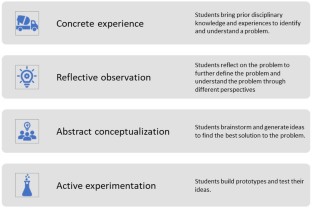
Adams, E. L. (2021). The effect of a middle grades STEM initiative on students’ cognitive and noncognitive outcomes. Studies in Educational Evaluation , 68 . https://doi.org/10.1016/j.stueduc.2021.100983 .
Aldemir, J., & Kermani, H. (2017). Integrated STEM curriculum: Improving educational outcomes for Head Start children. Early Childhood Development and Care , 187 (11), 1694–1706. https://doi.org/10.1080.03004430.2016.1185102.
Article Google Scholar
Amir, N. (2020). Strengthening the science-D&T interaction through simple maker centered projects in a Singapore classroom. Physics Education , 55 (4). https://doi.org/10.1088/1361-6552/ab9212 .
Arık, M., & Topçu, M. S. (2022). Implementation of engineering design process in the K-12 science classrooms: Trends and issues. Research in Science Education , 52 , 21–43. https://doi.org/10.1007/s11165-019-09912-x .
Avcu, Y. E., & Er, K. O. (2020). Developing an instructional design for the field of ict and software for gifted and talented students. International Journal of Educational Methodology , 6 (1), 161–183. https://doi.org/10.12973/ijem.6.1.161 .
Awad, N. (2023). Exploring STEM integration: Assessing the effectiveness of an interdisciplinary informal program in fostering students’ performance and inspiration. Research in Science & Technological Education , 41 (2), 679–699. https://doi.org/10.1080/02635143.2021.1931832 .
Baran, E., Bilici, S. C., Mesutoglu, C., & Ocak, C. (2019). The impact of an out-of-school STEM education program on students’ attitudes toward STEM and STEM careers. School Science and Mathematics , 119 , 223–235. https://doi.org/10.1111.ssm.12330.
Bartholomew, S. R., & Strimel, G. J. (2018). Factors influencing student success on open-ended design problems. International Journal of Technology and Design Education , 28 , 753–770. https://doi.org/10.1007/s10798-017-9415-2 .
Bond, L. (2007). My child doesn’t test well. The Carnegie Foundation for the Advancement of Teaching. Retrieved from https://files.eric.ed.gov/fulltext/ED498967.pdf .
Boone, H. N., & Boone, D. A. (2012). Analyzing likert data. The Journal of Extension , 50 (2). https://doi.org/10.34068/joe.50.02.48 . Article 48.
Brown, T. J. (2008). June). Design thinking. Harvard Business Review , 86 , 84–92. Google Scholar | Medline | ISI.
Google Scholar
Brown, T., & Katz, B. (2009). Change by design: How design thinking transforms organizations and inspires innovation . HarperCollins.
Chan, H., Choi, H., Hailu, M. F., Whitford, M., & Duplechain DeRouen, S. (2020). Participation in structured STEM-focused out‐of‐school time programs in secondary school: Linkage to postsecondary STEM aspiration and major. Journal of Research in Science Teaching , 57 (8), 1250–1280. https://doi.org/10.1002/tea.21629 .
Chin, C., & Chia, L. G. (2006). Problem-based learning: Using ill-structured problems in biology project work. Science Education , 90 (1), 44–67. https://doi.org/10.1002/sce.20097 .
Chiu, M. H., & Krajcik, J. (2020). Reflections on Integrated approaches to STEM Education: An International Perspective. In J. Anderson, & Y. Li (Eds.), Integrated approaches to STEM education. Advances in STEM education . Springer. https://doi-org.utep.idm https://doi.org/10.1007/978-3-030-52229-2_29 .
Christensen, K. S., Hjorth, M., Iversen, O. S., & Smith, R. C. (2019). Understanding design literacy in middle-school education: Assessing students’ stances towards inquiry. International Journal of Technology and Design Education , 29 , 633–654. https://doi.org/10.1007/s10798-018-9459-y .
Crawford, B. A., Krajcik, J. S., & Marx, R. W. (1999). Elements of a community of learners in a middle school science classroom. Science Education , 83 , 701–723. https://doi.org/10.1002/(SICI)1098-237X(199911)83:6<701::AID-SCE4>3.0.CO;2-2 .
Cresswell, J. W., & Guetterman, T. C. (2019). Educational research: Planning, conducting, and evaluating quantitative and qualitative research (6th ed.). Pearson.
Cresswell, J., & Plano Clark, V. (2018). Designing and conducting mixed methods research. 3rd Edition. SAGE.
Dare, E. A., Keratithamkul, K., Hiwatig, B. M., & Li, F. (2021). Beyond content: The role of STEM disciplines, real-world problems, 21st century skills, and STEM careers within science teachers’ conceptions of integrated STEM education. Education Sciences , 11 , 737. https://doi.org/10.3390/educsci11110737 .
Davey, J. W., Gugiu, P. C., & Coryn, C. L. S. (2010). Quantitative methods for estimating the reliability of qualitative data. Journal of MultiDisciplinary Evaluation , 6 (13), 140–162. https://doi.org/10.56645/jmde.v6i13.266 .
Dewey, J. (2007). Experience and education . Free.
Dosi, C., Rosati, F., & Vignoli, M. (2018). Measuring design thinking mindset. International Design Conference-2018 . https://doi.org/10.21278/idc.2018.0493 .
English, L. D., & King, D. T. (2015). STEM learning through engineering design: Fourth grade students’ investigations in aerospace. International Journal in STEM Education , 2 (14). https://doi.org/10.1186/240594-015-0027-7 .
Ericson, J. D. (2021). Mapping the relationship between critical thinking and design thinking. Journal of the Knowledge Economy . https://doi.org/10.1007/s13132-021-00733-w .
Falco, L. (2020). An intervention to support mathematics self-efficacy in middle school. In L. M. Harrison, E. Hurd, & K. Brinegar (Eds.), Integrative and interdisciplinary curriculum in the middle school: Integrated approaches in teacher preparation and practice (pp. 37–67). Routledge.
Fan, S-C., Yu, K-C., & Lou, S-J. (2018). Why do students present different design objectives in engineering design projects? International Journal of Technology and Design Education , 28 (4), 1039–1060. https://doi.org/10.1007/s10798-017-9420-5 .
Forbes, A., Falloon, G., Stevenson, M., Hatzigianni, M., & Bower, M. (2021). An analysis of the nature of young students’ STEM learning in 3D technology-enhanced makerspaces. Early Education and Development , 32 (1), 172–187.
Frykholm, J., & Glasson, G. (2010). Connecting science and mathematics instruction: Pedagogical context knowledge for teachers. School Science & Mathematics , 105 (3), 127–141. https://doi.org/10.1111/j.1949-8594.2005.tb18047.x .
Furner, J. M., & Kumar, D. D. (2007). The mathematics and science integration argument: A stand for teacher education. Eurasia Journal for Mathematics Science and Technology Education , 3 (3), 185–189. https://doi.org/10.12973/ejmste/75397 .
Fusch, P. I., & Ness, L. R. (2015). Are we there yet? Data saturation in qualitative research. Walden Faculty and Staff Publications 455. https://scholarworks.waldenu.edu/facpubs/455 .
Goldman, S., & Kabayadondo, Z. (Eds.). (2017). Taking design thinking to school . Routledge.
Goldman, S., Zielezinski, M. B., Vea, T., Bachas-Daunert, S., & Kabayadondo, Z. (2017). Capturing middle school students’ understandings of design thinking. In S. Goldman & Z. Kabayadondo (Eds.) Taking Design Thinking to School (pp. 94–111). Routledge. https://doi.org/10.4324/9781317327585-14 .
Goldstein, M. H. (2018). Characterizing trade-off decisions in student designers (Order No. 10840585). Available from ProQuest Dissertations & Theses Global. (2102578313). https://utep.idm.oclc.org/login?url=https://www.proquest.com/dissertations-theses/characterizing-trade-off-decisions-student/docview/2102578313/se-2 .
Guzey, S. S., & Li, W. (2023). Engagement and science achievement in the context of integrated STEM education: A longitudinal study. Journal of Science Education and Technology , 32 (2), 168–180. https://doi.org/10.1007/s10956-022-10023-y .
Gwangwava, N. (2021). Learning design thinking through a hands-on learning model. International Journal of Innovative Teaching and Learning in Higher Education (IJITLHE) , 2 (1), 1–19. https://doi.org/10.4018/IJITLHE.20210101.oa4 .
Haimovitz, K., & Dweck, C. S. (2017). The origins of children’s growth and fixed mindsets: New Research and a new proposal. Child Development , 88 (6), 1849–1859. https://doi.org/10.1111/cdev.12955 .
Hallström, J., & Ankiewicz, P. (2023). Design as the basis for integrated STEM education: A philosophical framework. Frontiers in Education (Lausanne) , 8 . https://doi.org/10.3389/feduc.2023.1078313 .
Hayes, J. C., & Kraemer, D. J. M. (2017). Grounded understanding of abstract concepts: The case of STEM learning. Cognitive Research: Principles and Implications , 2 , 7. https://doi.org/10.1186/s41235-016-0046-z .
He, X., Li, T., Turel, O., Kuang, Y., Zhao, H., & He, Q. (2021). The impact of STEM education on mathematical development in children aged 5–6 years. International Journal of Education Research , 109 . https://doi.org/10.1016/j.ijer.2021.101795 .
Hiğde, E., & Aktamış, H. (2022). The effects of STEM activities on students’ STEM career interests, motivation, science process skills, science achievement and views. Thinking Skills and Creativity , 43. https://doi.org/10.1016/j.tsc.2022.101000 .
Holthius, N., Deutscher, R., Schultz, S. E., & Jamshidi, A. (2018). The New NGSS classroom: A curriculum framework for project-based science learning. American Educator , 42 (2), 23–27. https://link.gale.com/apps/doc/A543900497/OVIC?u=txshracd2603 &sid=bookmark-OVIC&xid=215b1271.
Hou, H. I., & Lien, W. C. (2022). Students’ critical thinking skills in an interactive EMI learning context: Combining experiential learning and reflective practices. ICFAI Journal of English Studies , 17 (2), 60–72.
Hung, W., Jonassen, D. H., & Liu, R. (2007). Problem-based learning. In J. M. Spector, M. D. Merrill, van J. Merrienboer, & M. P. Driscoll (Eds.), Handbook of Research on Educational Communications and Technology 1 (pp. 485–506). Lawrence Erlbaum Associates.
IDEO (2023). Design thinking for educators. https://designthinking.ideo.com/resources/design-thinking-for-educators .
International Technology and Engineering Educators Association (2020). Standards for technological and engineering literacy: The role of technology and engineering in STEM education. https://www.iteea.org/STEL.aspx .
Isabell, T., & Mentzer, N. (2022). Three tools for teaching design in your classroom: Monday morning ready. The Technology Teacher , 82 (1), 18–21.
Kang, H., Calabrese Barton, A., Tan, E., Simpkins, S. D., Rhee, H., & Turner, C. (2019). How do middle school girls of color develop STEM identities? Middle school girls’ participation in science activities and identification with STEM careers. Science Education , 103 , 418–439. https://doi.org/10.1002/sce.21492 .
Kelley, T. R., & Sung, E. (2017). Sketching by design: Teaching sketching to young learners. International Journal of Technology and Design Education , 27 , 363–386. https://doi.org/10.1007/s10798-016-9354-3 .
Koh, J. H. L., Chai, C. S., Wong, B., & Hong, H. Y. (2015). Design thinking and education. Design thinking for education: Conceptions and application in teaching and learning . Springer.
Kolb, D. A. (1984). Experiential learning: Experience as the source of Learning and Development . Prentice Hall.
Kress, U., & Kimmerle, J. (2018). Collective knowledge construction. In International Handbook of the Learning Sciences (1st Ed., pp. 137–146). Routledge. https://doi.org/10.4324/9781315617572-14 .
Ladachart, L., Cholsin, J., Kwanpet, S., Teerapanpong, R., Dessi, A., Phuangsuwan, L., & Phothong, W. (2022). Ninth-grade students’ perceptions on the design-thinking mindset in the context of reverse engineering. International Journal of Technology and Design Education , 32 (5), 2445–2465. https://doi.org/10.1007/s10798-021-09701-6 .
Lee, H., & Blanchard, M. R. (2019). Why teach with PBL? Motivational factors underlying middle and high school teachers’ use of problem-based learning. Interdisciplinary Journal of Problem-Based Learning , 13 (1). https://doi.org/10.7771/1541-5015.1719 .
Leech, N. L., & Onwuegbuzie, A. J. (2007). An array of qualitative data analysis tools: A call for data analysis triangulation. School Psychology Quarterly , 22 (4), 557–584. https://doi.org/10.1037/1045-3830.22.4.557 .
Lester, J. N., Cho, Y., & Lochmiller, C. R. (2020). Learning to do qualitative data analysis: A starting point. Human Resource Development Review , 19 (1), 94–106. https://doi.org/10.1177/1534484320903890 .
Li, Y., Schoenfeld, A. H., diSessa, A. A., Graesser, A. C., Benson, L. C., English, L. D., & Duschl, R. A. (2019). Design and design thinking in STEM education. Journal for STEM Education Research , 2 (2), 93–104. https://doi.org/10.1007/s41979-019-00020-z .
Liedtka, J. (2014). Innovative ways companies are using design thinking. Strategy & Leadership , 42 (2), 40–45. https://doi.org/10.1108/SL-01-2014-0004 .
Lin, L., Shadiev, R., Hwang, W. Y., & Shen, S. (2020). From knowledge and skills to digital works: An application of design thinking in the information technology course. Thinking Skills and Creativity , 36 , 100646. https://doi.org/10.1016/j.tsc.2020.100646 .
Loes, C. N., & Pascarella, E. T. (2017). Collaborative learning and critical thinking: Testing the link. The Journal of Higher Education , 88 (5), 726–753. https://doi.org/10.1080/00221546.2017.1291257 .
Lofgran, B. B., Smith, L. K., & Whiting, E. F. (2015). Science self-efficacy and school transitions. School Science and Mathematics , 115 , 366–376. https://doi.org/10.1111/ssm.12139 .
Lord, K. C. (2019). Flexible learning: The design thinking process as a K-12 educational tool. Journal of Higher Education Thinking and Practice , 19 (7), 54–61. https://doi.org/10.33423/jhetp.v19i7.2531 .
Luchs, M. G. (2015). A brief introduction to design thinking. In Design Thinking (eds M.G. Luchs, K.S. Swan and A. Griffin). https://doi.org/10.1002/9781119154273.ch1 .
Maiorca, C., Roberts, T., Jackson, C., et al. (2021). Informal learning environments and impact on interest in STEM careers. International Journal of Science and Math Education , 19 , 45–64. https://doi.org/10.1007/s10763-019-10038-9 .
Marks, J. (2017). The impact of a brief design thinking intervention on students’ design knowledge, iterative dispositions, and attitudes towards failure . ProQuest Dissertations Publishing.
Marks, J., & Chase, C. C. (2019). Impact of a prototyping intervention on middle school students’ iterative practices and reactions to failure. Journal of Engineering , Education108 (4), 547–573. https://doi.org/10.1002/jee.20294 .
Marra, R., Jonassen, D. H., Palmer, B., & Luft, S. (2014). Why problem-based learning works: Theoretical foundations. Journal on Excellence in College Teaching , 25 (3&4), 221–238.
Marsden, E., & Torgerson, C. J. (2012). Single group, pre- and post-test research designs: Some methodological concerns. Oxford Review of Education , 38 (5), 583–616. https://doi.org/10.1080/03054985.2012.731208 .
McCurdy, R. P., Nickels, M., & Bush, S. B. (2020). Problem-based design thinking tasks: Engaging student empathy in STEM. Electronic Journal for Research in Science & Mathematics Education , 24 (2), 22–55.
McHugh, M. L. (2012). Interrater reliability: The kappa statistic. Biochemia Medica , 22 (3), 276–282.
Mehalik, M. M., Doppelt, Y., & Schuun, C. D. (2008). Middle-School science through design-based learning versus scripted inquiry: Better overall science concept learning and equity gap reduction. Journal of Engineering Education , 97 (1), 71–85. https://doi.org/10.1002/j.2168-9830.2008.tb00955.x .
Mohr-Schroeder, M. J., Jackson, C., Miller, M., Walcott, B., Little, D. L., Speler, L., Schooler, W., & Schroeder, D. C. (2014). Developing Middle School Students’ interests in STEM via Summer Learning experiences: See Blue STEM Camp. School Science and Mathematics , 114 (6), 291–301. https://doi.org/10.1111/ssm.12079 .
Morris, T. H. (2020). Experiential learning - a systematic review and revision of Kolb’s model. Interactive Learning Environments , 28 (8), 1064–1077. https://doi.org/10.1080/10494820.2019.1570279 .
Nadelson, L. S., & Seifert, A. L. (2017). Integrated STEM defined: Contexts, challenges, and the future. The Journal of Educational Research , 110 (3), 221–223. https://doi.org/10.1080/00220671.2017.1289775 .
National Research Council, et al (2014). STEM integration in K-12 Education: Status, prospects, and an agenda for research , edited by Heidi Schweingruber, et al., National Academies Press. ProQuest Ebook Central, https://ebookcentral.proquest.com/lib/utep/detail.action?docID=3379257 .
Ng, W., & Fergusson, J. (2020). Engaging high school girls in interdisciplinary STEAM. Science Education International , 31 (3), 283–294. https://doi.org/10.33828/sei.v31.i3.7 .
NGSS Lead States. (2013). Next generation science standards: For states, by states . The National Academies.
Nokes-Malach, T. J., Richey, J. E., & Gadgil, S. (2015). When is it better to learn together? Insights from research on collaborative learning. Educational Psychology Review (27) , 645–656. https://doi.org/10.1007/s10648-015-9312-8 .
Ortiz-Revilla, J., Adúriz-Bravo, A., & Greca, I. M. (2020). A framework for epistemological discussion on integrated STEM education. Science & Education , 29 , 857–880. https://doi.org/10.1007/s11191-020-00131-9 .
Pappas, I. O., Mora, S., Jaccheri, L., & Mikalef, P. (2018, April). Empowering social innovators through collaborative and experiential learning. In 2018 IEEE Global Engineering Education Conference (EDUCON) , pp. 1080–1088. IEEE, 2018.
Pattison, N. P. (2021). Powerful partnerships: An exploration of the benefits of school and industry partnerships for STEM education. Teachers and Curriculum , 21 (2), 17–23. https://doi.org/10.15663/tandc.v21i0.367 .
Razzouk, R. (2012). What is design thinking and why is it important? Review of Educational Research , 82 (3), 330–348. https://doi.org/10.3102/003454312457429 .
Rehmat, A. P., & Hartley, K. (2020). Building engineering awareness: Problem based learning approach for STEM integration. The Interdisciplinary Journal of Problem-Based Learning , 14 (1). https://doi.org/10.14434/ijpbl.v14i1.28636 .
Reynante, B. M., Selbach-Allen, M. E., & Pimentel, D. R. (2020). Exploring the promises and perils of integrated STEM through disciplinary practices and epistemologies. Science & Education , 29 , 785–803. https://doi.org/10.1007/s11191-020-00121-x .
Roehrig, G. H., Dare, E. A., Ring-Whalen, E., et al. (2021). Understanding coherence and integration in integrated STEM curriculum. International Journal for STEM Education , 8 (2). https://doi.org/10.1186/s40594-020-00259-8 .
Saldaňa, J. (2012). The coding manual for qualitative researchers (2nd ed.). Sage.
Salzman, H., Kuehn, D., & Lowell, L. (2013). Guestworkers in the high-skill U.S. labor market: An analysis of supply, employment and wage trends (pp. 1–35). Economic Policy Institute. Briefing Paper no359 https://doi.org/10.7282/T379469D .
Santos, L. F. (2017). The role of critical thinking in science education. Journal of Education and Practice , 8 (20), 160–173.
Shanks, M. (2012). An introduction to design thinking: process guide [PDF] Hasso Plattner Institute of Design at Stanford https://web.stanford.edu/~mshanks/MichaelShanks/files/509554.pdf .
Shernoff, D. J., Sinha, S., Bressler, D. M., & Ginsburg, L. (2017). Assessing teacher education and professional development needs for the implementation of integrated approaches to STEM education. International Journal of STEM Education , 4 (1), 13–13. https://doi.org/10.1186/s40594-017-0068-1 .
Sikka, A. (1991). The effect of creativity training methods on the creative thinking of fourth, fifth, and sixth-grade minority students (Order No. 9312052). Available from ProQuest Dissertations & Theses Global. (303924270). Retrieved from https://utep.idm.oclc.org/login?url=https://www.proquest.com/dissertations-theses/effect-creativity-training-methods-on-creative/docview/303924270/se-2 .
Siverling, E. A., Suazo-Flores, E., Mathis, C. A., & Moore, T. J. (2019). Students’ use of STEM content in design justifications during engineering design‐based STEM integration. School Science and Mathematics , 119 (8), 457–474. https://doi.org/10.1111/ssm.12373 .
Solodikhina, A., & Solodikhina, M. (2022). Developing an innovator’s thinking in engineering education. Education and Information Technologies , 27 , 2569–2584. https://doi.org/10.1007/s10639-021-10709-7 .
Stanford d.school (2023). Tools for taking action. https://dschool.stanford.edu/resources .
Stohlmann, M. (2022). Growth mindset in K-8 STEM education: A review of the literature since 2007. Journal of Pedagogical Research , 6 (2), 149–162. https://doi.org/10.33902/JPR.202213029 .
Stohlmann, M., Moore, T. J., & Roehrig, G. H. (2012). Considerations for teaching integrated STEM education. Journal of Pre-College Engineering Education Research , 2 (1). https://doi.org/10.5703/1288284314653 . Article 4.
Struyf, A., De Loof, H., Boeve-de Pauw, J., & Van Petegem, P. (2019). Students’ engagement in different STEM learning environments: Integrated STEM education as promising practice? International Journal of Science Education , 41 (10), 1387–1407. https://doi.org/10.1080/09500693.2019.1607983 .
Tan, A-L., Ong, Y. S., Ng, Y. S., & Tan, J. H. J. (2023). STEM problem solving: Inquiry, concepts, and reasoning. Science & Education, 32 , 381–397. https://doi.org/10.1007/s11191-021-00310-2
Trochim, W. M., & Donnelly, J. P. (2001). Research methods knowledge base (Vol. 2). Macmillan Publishing Company, Atomic Dog Pub.
Tsai, M. J., & Wang, C. Y. (2021). Assessing young students’ design thinking disposition and its relationship with computer programming self-efficacy. Journal of Educational Computing Research , 59 (3), 410–428. https://doi.org/10.1177/0735633120967326 .
Vasquez, J., Sneider, C., & Comer, M. (2013). STEM lesson essentials, grades 3–8: Integrating science, technology, engineering, and mathematics . Heinemann.
Vygotsky, L. S. (1978). Mind in society: The development of higher psychological processes . Harvard University Press.
Wan, Z. H., Jiang, Y., & Zhan, Y. (2021). STEM education in early childhood: A review of empirical studies. Early Education and Development , 32 (7), 940–962. https://doi.org/10.1080/10409289.1814986 .
Wingard, A., Kijima, R., Yang-Yoshihara, M., & Sun, K. (2022). A design thinking approach to developing girls’ creative self-efficacy in STEM. Thinking Skills and Creativity , 46. https://doi.org/10.10169/j.tsc.2022.101140 .
Zhou, N., Pereira, N. L., George, T. T., Alperovich, J., Booth, J., Chandrasegaran, S., Tew, J. D., Kulkarni, D. M., & Ramani, K. (2017). The influence of toy design activities on middle school students’ understanding of the engineering design processes. Journal of Science Education and Technology , 26 (5), 481–493. https://doi.org/10.1007/s10956-017-9693-1 .
Download references
The authors did not receive funding from any organization for the submitted work.
Author information
Authors and affiliations.
Department of Teacher Education, College of Education, University of Texas at El Paso, Room 813, Education Building, 500 W. University Avenue El Paso, El Paso, TX, 79968, USA
Dina Thomason & Pei-Ling Hsu
You can also search for this author in PubMed Google Scholar
Corresponding author
Correspondence to Dina Thomason .
Ethics declarations
Conflict of interest.
The authors have no relevant financial or non-financial interests to disclose.
Additional information
Publisher’s note.
Springer Nature remains neutral with regard to jurisdictional claims in published maps and institutional affiliations.
Rights and permissions
Springer Nature or its licensor (e.g. a society or other partner) holds exclusive rights to this article under a publishing agreement with the author(s) or other rightsholder(s); author self-archiving of the accepted manuscript version of this article is solely governed by the terms of such publishing agreement and applicable law.
Reprints and permissions
About this article
Thomason, D., Hsu, PL. The effect of a STEM integrated curriculum on design thinking dispositions in middle school students. Int J Technol Des Educ (2024). https://doi.org/10.1007/s10798-024-09894-6
Download citation
Accepted : 03 April 2024
Published : 13 April 2024
DOI : https://doi.org/10.1007/s10798-024-09894-6
Share this article
Anyone you share the following link with will be able to read this content:
Sorry, a shareable link is not currently available for this article.
Provided by the Springer Nature SharedIt content-sharing initiative
- Design thinking
- STEM education
- Middle school
- Engineering design
- Find a journal
- Publish with us
- Track your research
- Study Guides
- Homework Questions
6.07 Critical Thinking Questions

IMAGES
VIDEO
COMMENTS
The following graphic from learningcommons (the link/domain have expired) is most useful for its universal applicability via its simplicity-six basic questions that characterize critical thinking. The questions are general enough that they can be used with almost anything-different age groups, content areas, and various learning contexts.
Your critical thinking skills involve gathering complete information, understanding and defining terms, questioning the methods by which we get facts, questioning the conclusions, and looking for hidden assumptions and biases. Additionally, we can't expect to find all of the answers, and we need to take the time to examine the big picture of ...
The 6 questions are still highly relevant today and indispensable to problem-solving. Problem-solving and critical thinking are indispensable to any creative pursuit or design thinking, where integrity, authenticity, and truth are important. In fact, the Socratic method of questioning is the essence of critical thinking.
Here is a series of questions you can ask yourself to try to ensure that you are thinking critically. Conspiracy theories. Inability to distinguish facts from falsehoods. Widespread confusion ...
Critical thinking is the ability to effectively analyze information and form a judgment. To think critically, you must be aware of your own biases and assumptions when encountering information, and apply consistent standards when evaluating sources. Critical thinking skills help you to: Identify credible sources. Evaluate and respond to arguments.
In an age of "fake news" claims and constant argument about pretty much any issue, critical thinking skills are key. Teach your students that it's vital to ask questions about everything, but that it's also important to ask the right sorts of questions. Students can use these critical thinking questions with fiction or nonfiction texts.
Critical thinking refers to the ability to analyze information objectively and make a reasoned judgment. It involves the evaluation of sources, such as data, facts, observable phenomena, and research findings. Good critical thinkers can draw reasonable conclusions from a set of information, and discriminate between useful and less useful ...
Critical Thinking. Critical thinking is a widely accepted educational goal. Its definition is contested, but the competing definitions can be understood as differing conceptions of the same basic concept: careful thinking directed to a goal. Conceptions differ with respect to the scope of such thinking, the type of goal, the criteria and norms ...
Critical thinking is the ability to analyze and effectively break down an issue in order to make a decision or find a solution. At the heart of critical thinking is the ability to formulate deep ...
Critical thinking is the discipline of rigorously and skillfully using information, experience, observation, and reasoning to guide your decisions, actions, and beliefs. You'll need to actively question every step of your thinking process to do it well. Collecting, analyzing and evaluating information is an important skill in life, and a highly ...
There are many resources to help you determine if information sources are factual or not. 7. Socratic Questioning. This way of thinking is called the Socrates Method, named after an old-time thinker from Greece. It's about asking lots of questions to understand a topic.
Critical thinking is a kind of thinking in which you question, analyse, interpret , evaluate and make a judgement about what you read, hear, say, or write. The term critical comes from the Greek word kritikos meaning "able to judge or discern". Good critical thinking is about making reliable judgements based on reliable information.
Key Takeaways. Researchers propose six levels of critical thinkers: Unreflective thinkers, Challenged thinkers, Beginning thinkers, Practicing thinkers, Advanced thinkers, and Master thinkers. The ...
Methods of Critical Thinking Questions. 1. The 5 W's and the H. These are the absolute basics of critical thinking. The Who, What, Where, When, Why, and How are foundational questions that are taught over and over in journalism, investigation, and research. They are the base from which every critical analysis should be created.
What is the difference between a reflex and a learned behavior? 19. If the sound of your toaster popping up toast causes your mouth to water, what are the UCS, CS, and CR? 20. Explain how the processes of stimulus generalization and stimulus discrimination are considered opposites. 21.
It makes you a well-rounded individual, one who has looked at all of their options and possible solutions before making a choice. According to the University of the People in California, having critical thinking skills is important because they are [ 1 ]: Universal. Crucial for the economy. Essential for improving language and presentation skills.
Critical thinking involves asking questions, defining a problem, examining evidence, analyzing assumptions and biases, avoiding emotional reasoning, avoiding oversimplification, considering other interpretations, and tolerating ambiguity. Dealing with ambiguity is also seen by Strohm & Baukus (1995) as an essential part of critical thinking ...
Six questions to trigger critical thinking (Aveyard, Sharp & Woolliams 2011; adapted from Woolliams et al 2009) Asking these 'strategic questions' will help you develop a more critical approach to your studies, and to evaluate (or 'appraise') reports, articles, and other materials in a thoughtful and balanced way. You can
6 key critical thinking skills. The key critical thinking skills are identifying biases, inference, research, identification, curiosity, and judging relevance. Let's explore these six critical thinking skills you should learn and why they're so important to the critical thinking process. 1.
Critical thinking skills examples. There are six main skills you can develop to successfully analyze facts and situations and come up with logical conclusions: 1. Analytical thinking. Being able to properly analyze information is the most important aspect of critical thinking. This implies gathering information and interpreting it, but also ...
Critical thinking, as described by Oxford Languages, is the objective analysis and evaluation of an issue in order to form a judgement. Active and skillful approach, evaluation, assessment, synthesis, and/or evaluation of information obtained from, or made by, observation, knowledge, reflection, acumen or conversation, as a guide to belief and ...
Powered by AI and the LinkedIn community. 1. Stay Calm. 2. Understand Fully. Be the first to add your personal experience. 3. Think Aloud. Be the first to add your personal experience.
Letters to Editor. Poui blooms of hope. Linus F Didier Mt Hope. Apr 15, 2024. 10 mins ago. Comments. 1 min to read. BRILLIANT: A yellow poui tree in all its splendour on Sunday at the Queen's ...
Lateral thinking puzzles. Read on for 20 lateral thinking puzzles. 1. A woman lives on the 30th floor and hates taking the stairs. Every day she takes the elevator down to the lobby floor to go to ...
STEM, the integration of science, technology, engineering, and mathematics subjects is a popular topic as schools grapple with how to best prepare students for an ever-evolving society. As societal and technological challenges emerge, design thinking has been lauded as a method to enable people to help tackle those challenges. The steps of the design thinking process, empathize, define, ideate ...
Screenshot 2024-02-19 at 6.43.06 PM. Postlab 3 copy. CliffsNotes study guides are written by real teachers and professors, so no matter what you're studying, CliffsNotes can ease your homework headaches and help you score high on exams. Chemistry document from Overhills High School, 2 pages, 6.07 Critical Thinking Questions Mariah Tyson 1.)